low earth orbit
description: orbit around Earth with an altitude between 160 kilometers and 2,000 kilometers
161 results
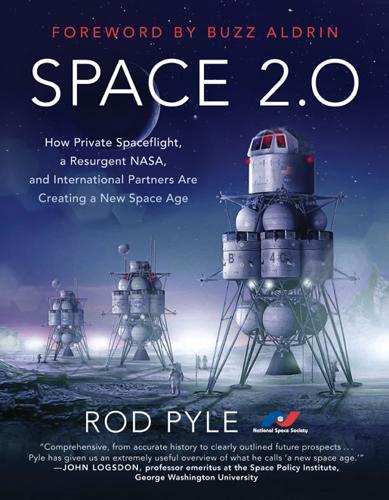
Space 2.0
by
Rod Pyle
Published 2 Jan 2019
Radiation from the sun, and from beyond the solar system, is deflected by the Earth’s magnetic field. Once spacecraft travel beyond Earth orbit, they are no longer protected. Image credit: NASA There is another demon living in space: radiation. If you move beyond the region known as low Earth orbit, and are properly protected from the vacuum and the temperature extremes, you must still deal with deadly radiation. Here on our home planet, and even in low Earth orbit, you are protected from most space-originated radiation by the planet’s magnetic field, which redirects most incoming radiation to the poles. Our atmosphere further protects us by filtering out the ultraviolet radiation emitted from the sun.
…
What can we expect Space 2.0 to add to the mix in the next few years? The Starliner and Dream Chaser are designed specifically for operating in low Earth orbit. SpaceX’s Dragon 2 capsule is intended to be useful out to lunar orbit. NASA’s Orion and SLS should be capable of a diverse set of mission profiles, including journeys to Earth orbit, the moon, Mars, and near Earth asteroids. In the past, spacecraft have been very destination driven. The early Soviet spacecraft, Vostok and Voskhod, and NASA’s Mercury and Gemini capsules were designed for low Earth orbit. Soyuz and Apollo were intended for the moon. All were designed to be perfectly suited to their specific goals, though, in practice, the Soyuz ended up being very adaptable.
…
Human destinations in space are a subject of hot debate. Low Earth orbit will continue to be the most heavily trafficked region regardless of where we go in deep space, since it is the most affordable and technically the easiest to achieve. Lots of productive work can be performed there, especially by commercial, research, and military satellites. China and Russia are both planning new crewed scientific outposts in LEO, and various private enterprises, primarily in the US, are planning both scientific and tourist-oriented orbital stations. So low Earth orbit is a given. There will be a vast amount of activity there, both human and robotic, indefinitely.
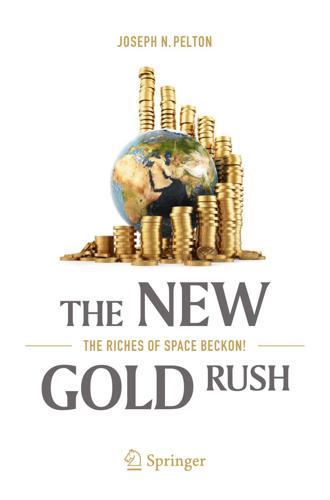
The New Gold Rush: The Riches of Space Beckon!
by
Joseph N. Pelton
Published 5 Nov 2016
This company, now known as OneWeb Ltd ., has managed to receive backing from the Virgin Group, Intelsat, Qualcomm, Air Bus, HNS and SpaceX to create a network of some 700 small satellite s—including spares—to be deployed in low Earth orbit. The idea is to create a huge satellite constellation that is optimized for broadband Internet networking and particularly geared to serve developing countries. Greg Wyler, who waxes eloquent about the possibilities, told of his ambitious plans during a dinner in his honor when he received the Arthur C. Clarke innovation award. He sees a whole new ballgame for global satellite communications. His plan is to deploy in low Earth orbit about 500 miles (800 km) in altitude some 700 quite small satellites, including spares.
…
Iridium and Globalstar only provide compressed telephone and limited data at 2.4–4.8 kb/s. The others provide video and broader band services in the 400 kb/s range. To state that the current offerings are fluid and difficult to define with precision is actually a very excellent summary. Iridium is deploying a new and more capable Generation NEXT in low Earth orbit. Globalstar is going from a low Earth orbit to a geo orbit system. Skyterra that was deployed by a company named LightSquared is going through bankruptcy proceedings and selling their satellite. Inmarsat is deploying a new Express system that is offering the ability to provide mobile- and land-based fixed satellite services.
…
Projected 2035 Market Size for New Services Type of Service Projected Revenues Supersonic/Hypersonic flights in the Extreme Stratosphere (i.e. Protozone flights) $10 billion/year or more Commercial launches to low Earth orbit Up to $10 billion/year Space Tourism/Space Adventures via spaceplanes $2 billion/year High Altitude Platform Systems for telecom, remote sensing and surveillance and UAVs $2 billion/year Private Space Habitats for experiments and space tourism $1 to 2 billion/year Protospace robotic transport Up to $1 billion/year Dark Sky Station for experiments and ion engine launch of small payloads to low Earth orbit Up to $1 billion/year The Not Too Distant Future In the next 5–10 years we may indeed have hypersonic jets that can fly across oceans in 2 h.
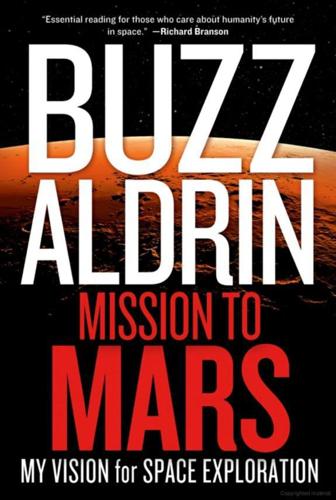
Mission to Mars: My Vision for Space Exploration
by
Buzz Aldrin
and
Leonard David
Published 1 Apr 2013
Second, I encourage collaborative projects like utilizing the Chinese Shenzhou crew-carrying spacecraft to help us burden-share in low Earth orbit. Why, if we can make use of Russian spacecraft, why not Chinese? What else can we do to make space development more universal, more valuable for all nations, and more internationally accessible? For one thing, we can offer incentives to make the private sector—not the taxpaying public sector—the primary tenant in low Earth orbit. There is an important step under way. An Obama Administration priority has been the development of a U.S. commercial crew space transportation capability with the goal of achieving safe, reliable, and cost-effective access to and from the International Space Station and low Earth orbit.
…
This fuel-saving advance requires the spacecraft to have sufficient thermal protection and the ability to precisely guide itself during the maneuver. Orion should pioneer aerocapture by early testing of this ability from lunar distance to low Earth orbit, a precursor step needed for the human crossing to Mars. There’s another ingredient in the mix that can propel us beyond low Earth orbit. The International Space Station is first an indispensable test bed for ringing out long-duration life-support equipment. That orbiting outpost is also the place to prototype a specialized interplanetary exploration module, a component that can be modified to also serve as a safe haven for station crews.
…
There is a nascent travel destination for some of these vacationers, and that is space. Let’s call them “global space travelers.” Low Earth orbit can increasingly serve as an incubator for commercial activities, both round-trip Earth-to-space transportation and space taxis. So far, since the Soviet Union’s Yuri Gagarin roared into space in 1961, a few people have taken a suborbital flight, but nearly 600 people from 38 countries have gone into Earth orbit, 24 have traveled beyond low Earth orbit, and 12 individuals have strolled across the moon. Global space travelers will experience the wonder of space firsthand, while increasing our knowledge of how common people—without years of astronaut training—fare in the environment of space.
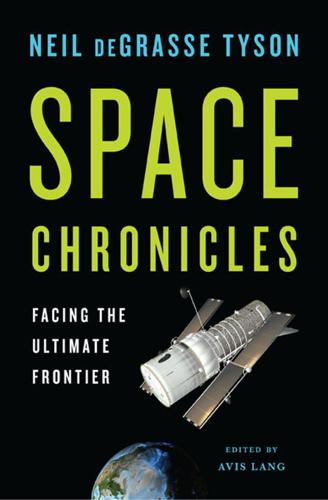
Space Chronicles: Facing the Ultimate Frontier
by
Neil Degrasse Tyson
and
Avis Lang
Published 27 Feb 2012
At some point, you’ve also got to look up. Under President Barack Obama’s space plan, NASA will be promoting commercial access to low Earth orbit. The National Aeronautics and Space Act of 1958 makes NASA responsible for advancing the space frontier. And since low Earth orbit is no longer a space frontier, NASA must move to the next step. The current plan says we’re not going to the Moon anymore and recommends we go to Mars one day—I don’t know when. I’m worried by this scenario. Without an actual plan to go somewhere beyond low Earth orbit, we’ve got nothing to shape the career dreams of young America. As best as I can judge, NASA is like a force of nature unto itself, capable of stimulating the formation of scientists, engineers, mathematicians, and technologists—the STEM research fields.
…
A trip to Mars takes about nine months. If you haven’t been out of low Earth orbit for forty years, sending people to Mars for the first time is a long way to go and a hard thing to do. A big thrust of the new space vision is to reengage the manned program in ways that haven’t been done during the past decade, and to recapture the excitement that drove so much of the space program back in the 1960s. Calvin Sims: So the reasons to go are to prove that we can do it again, because we haven’t done it in such a long time, and also to build consensus for it? NDT: We haven’t left low Earth orbit recently. We have to remind ourselves how to do that—how to do it well, how to do it efficiently.
…
Before we had vistas in space—telescopes, satellites, space probes—that enabled us to conduct astrophysical studies without interference from Earth’s atmosphere, which we normally think of as transparent, we were almost blind to the universe. When I think of tomorrow’s space exploration, I don’t think of low Earth orbit—altitudes less than about two thousand kilometers. In the 1960s that was a frontier. But now low Earth orbit is routine. It can still be dangerous, but it isn’t a space frontier. Take me somewhere new. Do something more than drive around the block. Yes, the Moon is a destination. Mars is a destination. But the Lagrangian points are destinations too.
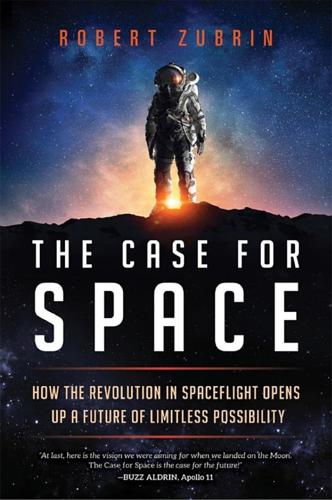
The Case for Space: How the Revolution in Spaceflight Opens Up a Future of Limitless Possibility
by
Robert Zubrin
Published 30 Apr 2019
As noted above, the energy to reach orbit is about the same as a round-trip flight from Los Angeles to Sydney: around $2,000 per passenger, or $20 per kilogram, including luggage. Air travel took a while before it could obtain such economies, so as a near-term goal for spaceflight, we'll estimate ten times that cost, or $200/kg to launch to low Earth orbit. To go to someplace interesting beyond low Earth orbit, we'll assume a cost ten times greater still, so $2,000/kg to go to the moon or Mars. As a check on these numbers, we note that it only takes about twenty-five kilograms of propellant to send one kilogram to orbit, and rocket propellant (for example, current kerosene/oxygen bipropellant—methane/oxygen would be cheaper) has a cost on the order of $0.40/kg.
…
exothermic: A chemical reaction that releases energy when it occurs. fairing: The protective streamlined shell containing a payload that sits on top of a launch vehicle. Falcon: The Falcons are a line of partially reusable launch vehicles developed and operated by the SpaceX company. The Falcon 9 can lift twenty-three tons to low Earth orbit. The Falcon Heavy can lift sixty-two tons to low Earth orbit. free return trajectory: A trajectory that, after departing Earth, will eventually return to the Earth without any additional propulsive maneuvers. geothermal energy: Energy produced by using naturally hot underground materials to heat a fluid, which can then be expanded in a turbine generator to produce electricity.
…
Most thanks of all must be given to my clever, funny, and darling wife, Hope Ann Zubrin, without whose patience, love, and constant support this book never could have been written. Great things are happening. On February 6, 2018, the SpaceX Falcon Heavy rocket took flight, demonstrating a capacity to lift sixty tons to low Earth orbit and playfully sending a Tesla Roadster on a trajectory that took it beyond the orbit of Mars. To add to the coup, two of the Falcon's three booster stages flew back to land gracefully together at the Cape, while the third barely missed pulling off a recovery landing on a drone ship stationed downrange.
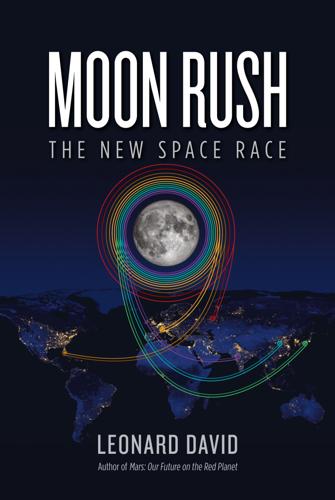
Moon Rush: The New Space Race
by
Leonard David
Published 6 May 2019
Experiments and observations over time of crewmembers on the International Space Station have helped plot out the physiological and radiation problems encountered in the microgravity of low Earth orbit, and what measures can be taken to counteract these issues. Long-term residence on the lunar surface will present challenges unique to that environment—a different definition of being “moonstruck.” * * * WITH THE ADVANTAGES of so much robotic research and the important challenges waiting to be faced, why haven’t human footprints been imprinted in the lunar dust since 1972? What’s the holdup? For one thing, recent American presidential administrations haven’t seemed able to stick to long-term goals of crewed exploration beyond low Earth orbit. Presidential intentions go back decades.
…
His precedent-making bid set a price for propellant bought either on the lunar surface or in Earth orbit. As a customer, he announced, ULA would be willing to pay about $1,360 a pound for propellant delivered into low Earth orbit. The going rate for fuel on the surface of the Moon was calculated to be $225 a pound. Having a source of propellant in space benefits anybody going anywhere in space, in Sowers’s view, especially if you can purchase propellant in orbit for less than it costs to ship it there from Earth. At those offered prices, the cost of any activity beyond low Earth orbit decreases dramatically. For example, this would reduce the cost to deliver mass to the surface of the Moon by a factor of three.
…
President Trump’s directive underscored the need for reinvigorating America’s human space exploration program and called upon NASA to “lead an innovative and sustainable program of exploration with commercial and international partners to enable human expansion across the solar system and to bring back to Earth new knowledge and opportunities.” It specifically named a Moon return as a key factor in the program: “Beginning with missions beyond low-Earth orbit, the United States will lead the return of humans to the Moon for long-term exploration and utilization, followed by human missions to Mars and other destinations.” Many experts in the United States agree that long-term bipartisan political backing is essential to progress toward the Moon.

The Moon: A History for the Future
by
Oliver Morton
Published 1 May 2019
Launched on a Falcon Heavy, this flatbed would be capable of lifting eight tonnes of cargo from low Earth orbit to the surface of the Moon. The second new spacecraft is something like the ascent stage of the Apollo LM, but with a bigger propulsion system. Empty, this NewLM weighs two tonnes; full, it weighs about eight. Those six tonnes of propellant would give the NewLM enough delta-v to get itself up off the Moon and back into a low Earth orbit. A bare-bones mission using Mr Zubrin’s architecture—which he calls Moon Direct—starts with a crewless but fully fuelled NewLM being put on one of the flatbeds and lifted to low Earth orbit by a Falcon Heavy. A Falcon 9 then launches a Dragon with a couple of people on board.
…
By raising the possibility that a settlement might have the wherewithal to provide its own water, volatiles on the Moon reduce the practical burden that any other reasons for returning to it might need to bear. And they might also provide a way to defray some of the costs. Getting a tonne of payload from the Moon to low Earth orbit takes a lot less fuel than getting it there from the Earth. So, if people doing things in low Earth orbit need fuel and water, it might be cheaper to send it to them from the Moon than from the Earth. Like the platinum-group-metals story, though, this highlights another issue about lunar resources. They may have competition. The helium-3, Mr Wingo’s metals and the polar volatiles all come from elsewhere; the helium, true to its name, from the Sun, the metals and volatiles from asteroids, comets and some water-rich inbetweenies.
…
It has been suggested that, once the development has been done, the unit cost of a BFR might be somewhere in the region of $300m to $400m, which is what a big modern airliner costs. If you got 100 flights out of it, you would have a cost per launch of about $7m. If you chose to lift 150 tonnes of fuel to a low-Earth-orbit depot with that launch, you would be spending about $50 a kilo to get it there. It is possible to imagine a moonbase might be a competitive source of low-Earth-orbit fuel at $3,000 a kilo. But at $50 a kilo you need an imagination that extends to unicorns and fairy dust. Obviously, the same might be said of a BFR that performs so miraculously well. But a system 50 times costlier would still undercut that price point quoted for fuel from the Moon.

Beyond: Our Future in Space
by
Chris Impey
Published 12 Apr 2015
Space is typically demarcated by the Kármán line at 100 km, where the atmosphere is too thin to support aerodynamic flight. Low Earth orbit is any altitude ranging from 160 to 2,000 km. Jet engines can’t work beyond 100 kilometers or 62 miles, where air is two million times thinner than air at sea level. This boundary is called the Kármán line. At that altitude, an airplane would have to move at orbital velocity to generate enough lift to stay aloft (Figure 15). Space has no edge. The atmosphere thins out gradually into a perfect vacuum. Low Earth orbits start around 100 miles up, below which the tenuous atmosphere would create enough drag on a satellite to make it descend and burn up.
…
When he went through the air lock the next day to inspect the cargo, he said, “It smells like a new car.”2 Early in 2013, and again in 2014, Dragon was back in low Earth orbit, fulfilling the first stage of a twelve-mission, $3.1 billion contract with NASA to haul cargo to the ISS. In September 2013, the business became competitive for the first time as the Orbital Sciences Corporation docked its Cygnus capsule (after an aborted attempt a few weeks earlier), unloading hundreds of pounds of valuable supplies, including chocolate for the astronauts. Orbital has its own contract to ferry supplies to the station, valued at $1.9 billion.3 On the same day that Orbital was ferrying candy into low Earth orbit, SpaceX made a bold move with the first launch of a beefy version of its Falcon 9 rocket.
…
Living Off-Earth PART IV. BEYOND 12. Journey to the Stars 13. Cosmic Companionship 14. A Universe Made for Us NOTES CREDITS INDEX Preface Space is inhuman. We can’t survive unprotected in a pure vacuum for more than a minute. Going there involves being strapped to a barely controlled chemical explosion. Low Earth orbit is equivalent to half an hour’s drive straight up, but it’s insanely expensive to get there. The set of people who have experienced zero gravity is one of the most exclusive clubs in history. Yet space travel is an expression of a fundamental human trait: the desire to explore. This book is an exploration of the past, present, and future of space travel.
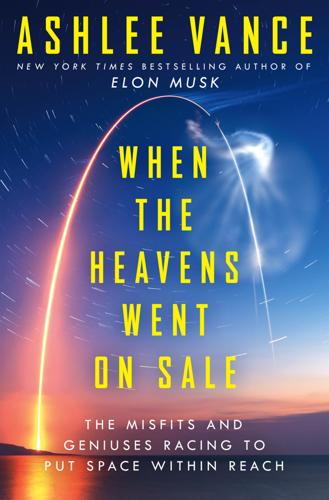
When the Heavens Went on Sale: The Misfits and Geniuses Racing to Put Space Within Reach
by
Ashlee Vance
Published 8 May 2023
.* People, of course, fear that all these satellites could bash into each other in orbit, which would be catastrophic for our modern way of life. There’s a phenomenon known as the Kessler syndrome that predicts that low Earth orbit could turn into an absolute shitshow as the result of a relatively small number of collisions. One satellite would bash into another at high speed, and the crash would result in thousands of pieces of debris. Each piece would then morph into a high-speed missile that could collide with other satellites and create a cascading effect. If enough debris were to end up in low Earth orbit, it would be difficult to send new rockets and satellites through the mess. What’s more, existing technologies such as GPS and our communications systems could be ripped to shreds, sending life on Earth back to a different era.
…
It had raised more than $100 million to build a network of radar stations all around the globe. The network was designed to look up into space and track every object in low Earth orbit, including satellites, old rocket bodies, and debris left over from collisions and explosions. The big stuff was easy enough to spot, but LeoLabs’ technology was so good that it could pick out objects just a couple of centimeters in size. Historically, governments and militaries had monitored the action taking place in low Earth orbit. Such groups wanted to know what their allies and enemies were up to in space, and, of course, they wanted to make sure that their rockets and satellites traveled to places where they would not collide with existing machines.
…
What the public has paid less attention to is the frenetic amount of activity taking place among hundreds of other companies scattered all around the world who are building new types of rockets and satellites. These companies are locked in a race that feels more immediate and tangible than humans taking laps around the moon or doing their laundry on Mars. They are trying to build an economy in low Earth orbit, the stretch of space from 100 to 1,200 miles above our planet’s surface, that would, in essence, be the next playing field in humankind’s technological evolution. From the 1960s to 2020, the number of satellites put in space had increased at a slow and steady pace, resulting in about 2,500 machines orbiting the earth.
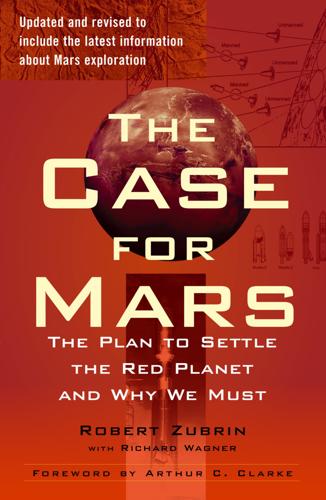
Case for Mars
by
Robert Zubrin
Published 27 Jun 2011
CHALLENGE 9: To be the first to demonstrate a system that can lift at least 120 tonnes to low Earth orbit. The Prize: $2 billion The Conditions: The booster must launch from U.S. territory. Past history of the Saturn V is not eligible. A revived Saturn V system is eligible. CHALLENGE 10: To demonstrate the first system that can put 50 tonnes onto a trans-Mars trajectory. The Prize: $3 billion The Conditions: Hyperbolic velocity for Earth departure must be at leas 4 km/s. The system must be launched by a booster or boosters with a capacity of at least 120 tonnes to low Earth orbit per launch. The booster must be launched from U.S. territory.
…
See Gas chromatograph mass spectrometer (GCMS) Geologist, 86 Geometry, 22, 24 Geothermal power, 208–211 Gibbons, Jack, 323 Gibson, Everett, 308, 311–315, 318, 321 Gingrich, Newt, 282–283, 291–293 Gingrich approach, 282–291 Global warming, artificially induced, , 263–268 Goats, 198, 199 Goddard, Robert, 27 Goldin, Dan, 67, 275, 307, 314–315, 321, 323 Gore, Al, 291, 315 Government sponsorship, 231–232 Grady, Monica, 322 Greenhouse agriculture, 10, 195–199, 222 Greenhouse effect, 140, 250, 253, 254, 256–258, 260, 262–268 Greigite, 314, 317 Griffin, Mike, 66–67 Gypsum, 174, 188 Habitable real estate, 236–238 Habitation module, 7, 8, 62–63, 117–118, 127, 128 Hall, Asaph, 25 Halley’s comet, 243 Halobacteria, 35 Halocarbons (CFCs), 250, 263–266 Hamilton Standard Company, 150, 151, 154 Harmony of the World, The (Kepler), 24 Hawksbee, Francis, 148 Hegel, G.W.F., 56 Heliocentric theory, 22 Helium-3, 223, 230, 245 211;23> Herschel, William, 25 Hiroshima, 115 Hohmann, W., 76 Hohmann transfer orbit, 76, 77, 79, 80, 84, 95 Hormesis, 114 Horowitz, Norman, 32–34 Hoyt, Bob, 125 Hudson, Gary, 106 Human factors problem, 113, 126–129 Hunter, Max, 106, 107 Huygens, Christian, 25 Hydrogen, 5, 60–61, 148, 150, 151, 154, 155, 182, 184, 185, 194, 200, 204, 205, 220–221, 224, 245 Hydrogen/carbon dioxide engine, 145 Hydrogen/oxygen propellant, 102, 106, 111, 143, 228 Hydrosphere activation, 268 Hyperbolic (departure) velocity, 78, 110–112, 234 Idaho National Engineering Lab, 103 Industrial Revolution, 24 In-situ propellant production (MSR-ISPP) plant, 43–44, 107, 146, 148–156 Interplanetary commerce, 223–231 Inventions, export of, 225, 236 Ionosphere, 157=0011;159 Iron, 184–185, 199–200, 225 Iron disulfide, 311 Jet Propulsion Laboratory, Pasadena, California, 19–20, 156, 163, 243 J.F.K model, 277–279, 292 Johnson, Lyndon B., 278 Johnson Space Center (JSC), 65, 67, 68, 154, 156 Journal of the British Interplanetary Society, 57 Jupiter, 24, 225, 226 Kaplan, David, 154, 155 Kelly, Kevin, 274 Kennedy, John F., 55, 273–275, 277–279 Kepler, Johannes, 19, 22–24, 242, 270 Kerosene/oxygen propellant, 107 Kevlar fabric, 177–178, 195 Labeled Release experiment, 33 Labor shortage, 235, 236, 302 Landing site selection, 6, 9 Launch environment testing, 42 Law of Universal Gravitation, 24 Laws of Planetary Motion (Kepler), 23, 24 LEO. See Low-earth orbit (LEO) Levin, Gilbert, 33, 34 Lewis, John, 225, 226 Lewis and Clark expedition, 6 Lewis Research Center, Cleveland, 103 Life Sciences Company, 151 Life-support system, 7, 82, 83, 91, 94, 100, 131, 146, 153 Lindbergh, Charles, 283 Lindstrom, Marilyn, 311 Linne, Diane, 43 Lockheed Martin Corporation, 284 LOFT, 103 LOR. See Lunar orbital rendezvous (LOR) plan Low-earth orbit (LEO), 49, 53, 56, 87, 88, 96, 103, 105, 108, 136, 233, 234 Lowell, Percival, 26–27, 185 Lowell Observatory, Flagstaff, Arizona, 26 Lunar missions, 13, 45, 46, 48–50, 135–137, 184, 220–223.
…
The name of the plan is “Mars Direct,” and it represents the quickest, safest, most practical, and least expensive way to undertake the exploration and settlement of Mars. Mars Direct says what it means. The plan discards unnecessary, expensive, and time-consuming detours: no need for assembly of spaceships in low Earth orbit; no need to refuel in space; no need for spaceship hangars at an enlarged Space Station, and no requirement for drawn-out development of lunar bases as a prelude to Mars exploration. Avoiding these detours brings the first landing on Mars perhaps twenty years earlier than would otherwise happen, and avoids the ballooning administrative costs that tend to afflict extended government programs.
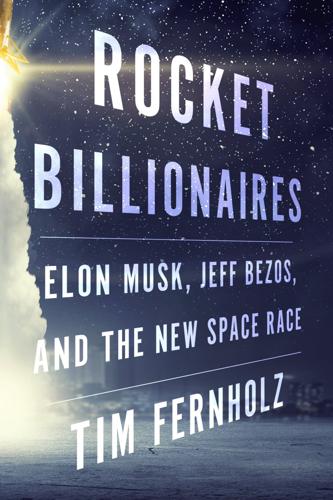
Rocket Billionaires: Elon Musk, Jeff Bezos, and the New Space Race
by
Tim Fernholz
Published 20 Mar 2018
Meanwhile, NASA’s in-house plan would produce a vehicle only after the station was gone and would cost $1 billion every time it flew—far too much for anything but the most grandiose missions. “The issue is that the Orion is a very capable vehicle for exploration, but it has far more capability than needed for a taxi to low-Earth orbit,” the commission concluded. The United States was caught between protecting its capabilities in low earth orbit and reaching beyond to the moon or Mars. The Augustine Commission attempted to find a suitable path forward. Nearly all of them involved three key steps: extending the space shuttle for two more flights to complete construction of the space station, canceling or postponing the Ares rocket, and expanding NASA’s commercial partnerships to include flying astronauts as well as cargo to the space station.
…
Eyeing these schemes in the midnineties, as they developed proposals for new rockets, Lockheed Martin, McDonnell Douglas, and ultimately Boeing were able to promise vehicles that, by the weird pricing standards of high-explosive space vehicles, were fairly cheap. The architects of the EELV program imagined rockets capable of carrying at least ten metric tons to low earth orbit and five metric tons to geostationary orbit. They thought the cost of each rocket launch would range between $50 and $150 million, in 1994 dollars. Lockheed Martin and McDonnell Douglas won the development contracts, at $500 million apiece, and Boeing soon snapped up McDonnell. The next year, 1998, it was Lockheed’s turn to see one of its old reliables fail, this time during an attempt to launch a missile early-warning satellite from Cape Canaveral.
…
This culture would be the company’s most powerful early advantage. “I was trying to figure out why we had not made more progress since Apollo,” Musk told a roomful of Stanford students in 2003, a few months after the Columbia disaster. “We’re currently in a situation where we can’t even put a person into low earth orbit. That doesn’t really jell with all of the other technology sectors out there. The computer that you could have bought in the early seventies would have filled this room and had less computing power than your cell phone. And so just about every sector of technology has improved. Why has this not improved?”
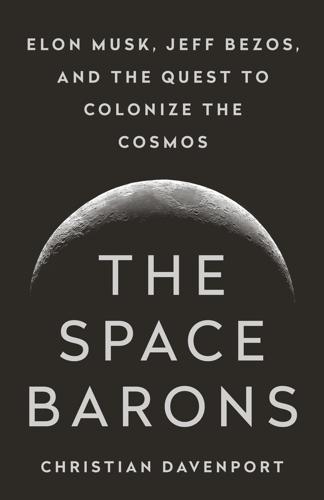
The Space Barons: Elon Musk, Jeff Bezos, and the Quest to Colonize the Cosmos
by
Christian Davenport
Published 20 Mar 2018
Beal hired some of the best engineers in the country, poaching them from Lockheed, Boeing, and Orbital Sciences. They began to make a massive heavy-lift rocket, the BA-2, which would have been the largest rocket engine since the F-1 engine that powered NASA’s Saturn V rockets during the Apollo era. The three-stage rocket would stand 236 feet tall and have the strength to carry nearly 20 tons to low Earth orbit. In early 2000, the company christened the McGregor facility with a successful test of its second-stage engine, the largest liquid-fueled engine built since the Apollo program. It roared to life before a crowd of a couple hundred, sending a fiery blast that consumed 63,000 pounds of propellant in just twenty-one seconds.
…
Although it had achieved enormous success sending robots to the corners of the solar system, NASA’s human space program was in a rut. Underfunded, overshadowed by 9/11 and the two wars that followed, space travel had become an afterthought. Since Eugene Cernan became the last man to walk on the moon in 1972, NASA had not sent an astronaut any farther than what’s known as low Earth orbit, a few hundred miles up. Musk, a ravenous reader of science fiction, had expected that by this point in his life there’d be a base on the moon and trips to Mars powered by the robust space program built on the Apollo lunar missions. If in the 1960s, the United States could send a man to the moon in less than a decade, surely there were more great things to come.
…
“I would bet you 1,000-to-one that if you bought a Honda Civic that the sucker will not break down in the first year of operation,” he told Fast Company magazine. “You can have a cheap car that’s reliable, and the same applies to rockets.” For about $6 million it would be able to launch over 1,000 pounds of payloads, such as satellites, to low Earth orbit, far less than what competitors charged. It wasn’t long before the company’s first Falcon 1 rocket was assembled—“Falcon” an homage to the Millennium Falcon from Star Wars, “1” denoting the number of first-stage engines it had. But even though Musk had built a rocket in just over a year, he couldn’t get anyone at NASA to pay attention.
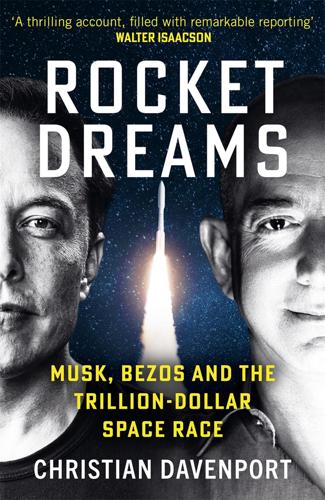
Rocket Dreams: Musk, Bezos and the Trillion-Dollar Space Race
by
Christian Davenport
Published 6 Sep 2025
Instead of being ditched into the ocean, as has been the practice for most of the history of space exploration—something Musk has compared to throwing away an airplane after each flight—both the booster and the spacecraft are designed to land and be reflown. SpaceX mastered the art of rocket reusability years ago with its Falcon 9 booster, built to hoist satellites and astronauts to low Earth orbit. But there was one big inefficiency: Because it lands on a ship at sea or on a separate landing pad, the Falcon 9 has to be transported back to its launch site, a cumbersome process that can last days. In Musk’s world, where he wants rockets departing multiple times a day, that’s far too slow.
…
The Space Shuttle retired in 2011, leaving NASA without the means to fly people anywhere. Astronauts, once feted in ticker tape, were now largely anonymous. Interest in space was at a nadir since its peak in the late 1960s. Instead of reaching out to building a permanent presence on the moon and eventually Mars, NASA was confined to low Earth orbit, a place where, as astrophysicist Neil deGrasse Tyson has said, “we boldly go where hundreds have gone before.” Today, however, SpaceX and Blue Origin together represent a paradigm shift that has remade space exploration. They have touched off an emerging space economy that some analysts think could be worth $1 trillion by the middle of the 2030s—a new wave of economic activity that could be as transformative as the advent of the Internet.
…
In an op-ed that had just been published in SpaceNews, two of the Trump campaign’s advisers—Robert Walker, the former chair of the House Committe on Science, Space, and Technology; and Peter Navarro, an economist—echoed some of Gingrich’s points and said that under Trump, the White House would embrace the private space sector at a time when NASA had grown sclerotic and slow. The United States “must recognize that space is no longer the province of governments alone,” they wrote. “Public-private partnerships should be the foundation of our space efforts.” Walker and Navarro went on to lament that NASA “has been largely reduced to a logistics agency” confined to low Earth orbit, and lacked ambitious efforts in deep space, which the United States was quickly ceding to its adversaries. The need for an “ambitious space program is existential,” they wrote. “While the American government’s space program has suffered from under-investment, both China and Russia continue to move briskly forward with military-focused initiatives.
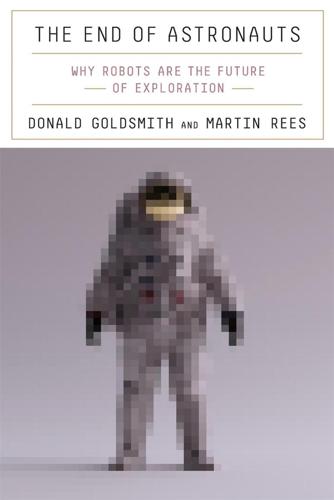
The End of Astronauts: Why Robots Are the Future of Exploration
by
Donald Goldsmith
and
Martin Rees
Published 18 Apr 2022
NASA’S JUSTIFICATION FOR HUMAN SPACE EXPLORATION Those who turn to the NASA website “Beyond Earth: Expanding Human Presence into the Solar System” will find that the section “Why We Explore” includes the assertion that “curiosity and exploration are vital to the human spirit and accepting the challenge of going deeper into space will invite the citizens of the world today and the generations of tomorrow to join NASA on this exciting journey.” The site’s “Why Mars?” section ends with this statement: A mission to our nearest planetary neighbor provides the best opportunity to demonstrate that humans can live for extended, even permanent, stays beyond low Earth orbit. The technology and space systems required to transport and sustain explorers will drive innovation and encourage creative ways to address challenges. As previous space endeavors have demonstrated, the resulting ingenuity and technologies will have long lasting benefits and applications. The challenge of traveling to Mars and learning how to live there will encourage nations around the world to work together to achieve such an ambitious undertaking.
…
1 SIX SPHERES OF EXPLORATION A comparison of human and automated space exploration rationally begins with the scientific technique of classifying the subjects of investigation. In assessing our present and future undertakings in space, we may usefully locate them within one of the following six spheres of activity: Near-Earth orbits (also called low-Earth orbits), which so far represent the chief domain of spaceborne activities Scientific investigation of, and habitat construction on, the moon Missions to the closest planets, primarily to Mars Investigation, mining, and possible capture of asteroids Construction of freely orbiting, permanent habitats in space Long-term journeys to the sun’s outer planets, and perhaps in later centuries to other planetary systems The order in which these six activities are listed roughly corresponds to the time sequence in which they have been achieved or may be realized in the future.
…
For example, the astronomers Roger Angel and Nick Woolf have suggested that the loose rocks and soil above the lunar bedrock could be made into bricks and used to build a dome-like structure that would recall ancient Rome’s Pantheon, which still stands strong in the Italian city’s center after two millennia.9 Before we turn to the prospects for a human return to the moon, we must examine the domain with which astronauts have become familiar: near-Earth (or low-Earth) orbit. Triumph and tragedy have marked this realm a few hundred miles above the Earth, where hundreds of men and women have learned how to adjust to conditions unfamiliar to our planet’s surface-dwellers. CHAPTER 3 Near-Earth Orbit At the risk of overconcentrating on the United States, we can summarize human involvement in space exploration during the past five decades by citing the achievements of NASA and its worldwide partners.
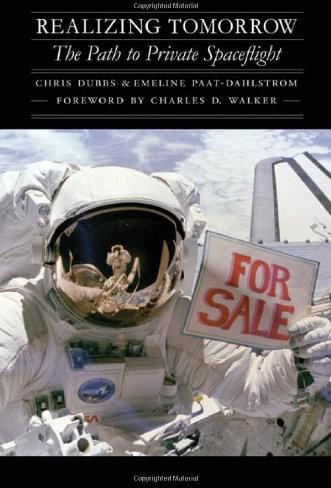
Realizing Tomorrow: The Path to Private Spaceflight
by
Chris Dubbs
,
Emeline Paat-dahlstrom
and
Charles D. Walker
Published 1 Jun 2011
The conference was a whir of activity: presented papers and ad hoc groups grappled with such heady ideas as growing food crops in space and shielding the colony from radiation. This was mind-boggling stuff that energized everyone. "I have never been to a conference where there was more energy and excitement," Mark Hopkins recalled. Hugh Davis, who presented a paper on the heavy lift vehicles needed to boost materials to low Earth orbit and to the colony's final orbital destination, got the impression from the conference that O'Neill was an absolute master at inspiring young people, getting them to work nonstop at developing these ideas. Among the key points they established was that the quantity of material that would have to be brought up from Earth to begin construction was well within the capabilities of 1970s technology and could be delivered by the space shuttle, then in development.
…
Puttkamer had already issued contracts to Grumman Aerospace and McDonnell Douglas to design a space station, referred to as a "construction shack" for its role as a base of operations for the construction of solar power satellites and other manufacturing operations. The station, which would be home to two hundred people, would be constructed in low Earth orbit out of materials brought up on the space shuttle, then would be boosted to geosynchronous orbit by solar electric propulsion. That same March 1976 issue carried an interview with Puttkamer's deputy, Robert Frietag, who shared the agency's vision on other space projects near and dear to the heart of L5 members, including the development of nuclear energy for use in space; servicing satellites in space; building large structures in space for many purposes; mining the moon or the asteroids; reflecting sunlight from huge mirrors to illuminate Earth; putting hospi tals in space, particularly to treat conditions like heart trouble; and establishing a base for disposing of nuclear wastes.
…
Scaled Composites, the company of aviation visionary Burt Rutan, had been contracted to build the strange craft. It resembled a number of SSTO projects that had come before it, but with one notable helicopter-type propeller blades atop the nose cone. It was estimated that when operational, the spacecraft would be capable of launching seven thousand pounds of payload into low Earth orbit for $1,ooo per pound. This would be quite a launch bargain for the booming wireless telecommunications satellite market. That lift capability would also allow it to carry a dozen people, making it wonderfully suited as well for the space tourism market. The project had its genesis about three years earlier, when Hudson sat in a conference room at American Rocket Company, a firm cofounded by his friend Bevin McKinney.

Asteroid Mining 101: Wealth for the New Space Economy
by
John Lewis
Published 22 Jul 2014
A single cube masses two pounds, while assembling three to six units creates “3U” or “6U” CubeSats massing 12 to 25 pounds (12 kg). Hundreds of 1U to 3U CubeSats have been released into low Earth orbit for communications, surveillance, and science tests. Universities and small companies have built CubeSats lacking propulsion and long-distance communications capabilities for less than $200,000. Launches are inexpensive as well, as CubeSats can hitch space-available rides on rockets carrying multi-ton primary payloads. To keep these small probes from cluttering low Earth orbit and becoming hazardous, U.S. rules require them to naturally deorbit from atmospheric drag in 25 years or less.
…
The current CubeSat revolution adds capable propulsion to kick these tiny probes out beyond the Moon into deep space, and provides them with upgraded radios or laser units to enable robust communication back to Earth. Deep space CubeSats also require technologies to cope with sudden solar flares, a danger not faced by low Earth orbit spacecraft protected by the Earth’s magnetic field. Because journeys out to near Earth asteroids can take six months to two years, deep space CubeSats need to be more reliable than their short-lived Earth-orbit predecessors. Finally, actually seeing and closing on a small charcoal-colored asteroid in the darkness of space is far more difficult than orienting a spacecraft toward the giant and brilliantly illuminated Earth.
…
Figure III.1: The FireFly campaign will deploy sets of three CubeSat-style spacecraft to prospect at near Earth asteroids. Credit: Deep Space Industries – Bryan Versteeg Arks to Carry Dozens of CubeSats As noted earlier, many universities and small companies have the skills to design and fabricate low Earth orbit CubeSats but there are hurdles to making them fit for deep space operation. One solution is to package several LEO-style CubeSats into a small carrier spacecraft, enabling wider involvement in the new age of asteroid mining and prospecting. A carrier can be loaded with a dozen or so CubeSats – from one unit to three units each – to give them a ride out to the target so they don’t need big thrusters.
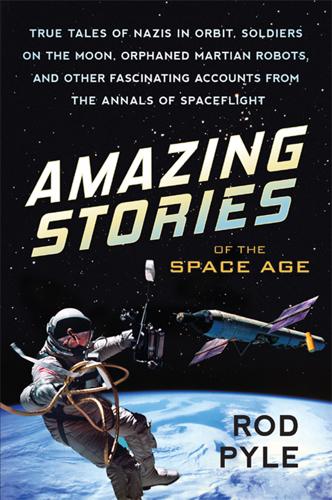
Amazing Stories of the Space Age
by
Rod Pyle
Published 21 Dec 2016
If the pundits have their way, NASA and perhaps Roscosmos, Russia's space agency, will increasingly provide seed funding and support for commercial space enterprises, as the agencies themselves refocus on pure exploration and ventures beyond low Earth orbit. The new space age appears to be a place of great promise. Fig. 22.2. SpaceX's Falcon Heavy, a high-power booster that is set to revolutionize access to space in 2018. The most powerful American rocket since NASA's Saturn V of the 1960s, the Falcon Heavy will be capable of delivering about 120,000 pounds to low Earth orbit (roughly half the capability of the Saturn V, but double that of the space shuttle). Image from SpaceX. In a reflection of this trend, even Major Matt Mason has a new lease on life.
…
See Jet Propulsion Laboratory Juno rockets, 25, 27 Jupiter rockets, 25 “Kaleidoscope” (Bradbury), 218 Karman Line (boundary of space), 160, 316n3 Kelly, Tom, 149 Kennan (KH-11) satellite, 144 Kennedy, John F., 34, 94, 140, 164, 186, 189, 201, 203 Kennedy, Robert, 142 Kennedy Space Center, 33, 251 Kerwin, Joe, 239, 241–42, 243, 244–46 KH-11 satellite, 144 Khrushchev, Nikita, 191, 203, 285 Kimball, Ward, 87 King, Martin Luther, Jr., 142 KIWI rocket, 310n5 Komarov, Vladimir, 185, 189–90, 192, 193, 194–98, 199 open letter from fellow cosmonauts on, 199–200 Korolev, Sergei, 186–87, 191–92, 202, 204, 205, 285, 286 death of, 194 Kosmos (Russian Earth-orbiting flights), 192–93, 205, 206 Kranz, Gene, 149–50, 152, 153, 154, 155, 156 Kubrick, Stanley, 87 Langley Research Labs, 114, 221 lasers, 263, 275, 276–77 launches, choosing logistical location for, 45–46, 304n12. See also Cape Canaveral Lee, Pascal, 7–8, 52, 53 LeMay, Curtis, 111–12 LEO. See low Earth orbit Leonard Mason (destroyer), 128 Leonov, Alexi, 186 Lewis Research Center, 107 Ley, Willy, 85 life, search for, 222–24 Life (magazine), 83 Limited Test Ban Treaty (1963), 66 liquid-fueled rockets, 11, 12, 24, 284 LK lander, 191 Lockheed Corporation, 93, 101, 113 Loewy, Raymond, 236–37 Los Alamos National Laboratory, 59, 96 Lost in Space (TV series), 292 Lovell, Jim, 118, 124–25 low Earth orbit (LEO), 211, 217, 251 and commercial space enterprises, 296 dangers of debris found in, 258–59, 263 rescue plans for, 214–15 Lowell, Percival, 36–42, 222, 223 low-energy routes between planets, 93 Lunar Expedition Plan.
…
And for the last of these, the two prominent players in the space age—the US and USSR—had a variety of ideas of how they might attempt to rescue astronauts stranded in orbit. The dynamics of reentry are fairly simple. An object in orbit around the Earth at lower altitudes, say between 100 and 1,200 miles, will eventually slow down and fall out of that orbit. This range is called low Earth orbit, or LEO. The lower the orbit the faster it will decay. Various forces are at work here, but the primary one is atmospheric drag, the same force that brought Skylab crashing to Earth years before NASA had thought it would. Manned spacecraft in orbit around Earth operate in LEO, but do not remain there long enough to suffer orbital decay.
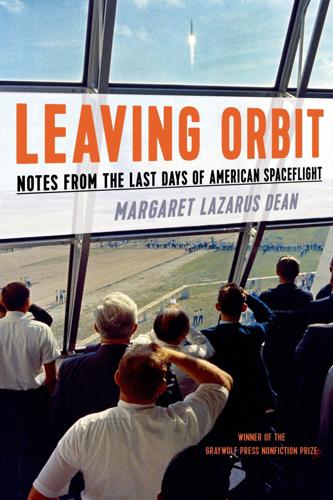
Leaving Orbit: Notes From the Last Days of American Spaceflight
by
Margaret Lazarus Dean
Published 18 May 2015
President George W. Bush had announced Constellation in 2004 with great fanfare—it is designed to be more modular and flexible than the shuttle program, allowing different boosters and different crew or cargo configurations for missions of varying lengths. The plan is to get astronauts and payloads into low Earth orbit again within ten years and, eventually, on to the moon, asteroids, and Mars. But even at the time of the announcement, few people believed a second wave of moon landings could actually take place on anything resembling the schedule Bush described, a schedule that required future Congresses to increase NASA’s budget precipitously.
…
To no one’s surprise, President Obama announced in February 2010 that he planned to cancel Constellation and by doing so earned the ire of many NASA employees and spaceflight enthusiasts. That summer Congress voted to approve Obama’s NASA Authorization Act, a plan to increase NASA’s finding by $6 billion over five years, a continued commitment to support development of commercial capabilities in low Earth orbit, and a more streamlined long-range space vehicle, which would come to be called the Space Launch System. Constellation contracts would remain in place until Congress voted to overturn the previous mandate, leaving workers at the Cape to continue work that was almost sure to be undone sometime in the future.
…
We envy him so much that at times it’s hard for us to see Buzz at all, to see his accomplishment as something he did, a risk he took gambling against his own death, rather than simply as something we will never get to do. Leading up to our day together, I’d tried to imagine what Buzz Aldrin would say about the retirement of the space shuttle. I anticipated that someone who has risked his life to walk on the surface of the moon probably thinks that the space shuttle, which can only reach low Earth orbit, has been a frustrating waste of energy and maybe a step in the wrong direction. But I would not have predicted that a conservative eighty-year-old Korean War veteran would support government funding for a massive science project as a general principle, or even less that he would support President Obama’s decision to cancel the Constellation project the following year, calling this “Obama’s JFK moment.”
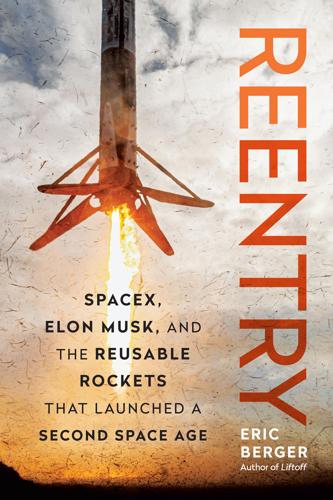
Reentry: SpaceX, Elon Musk, and the Reusable Rockets That Launched a Second Space Age
by
Eric Berger
Published 23 Sep 2024
As the first stage fell away, the single Merlin engine on the second stage ignited. It began flying. Then, and only then, did Carlson and Freidhoff join the increasingly frenzied celebration. The Falcon 9 rocket would go all the way to orbit that day. Its second stage fired for several minutes, reaching low-Earth orbit with a “boilerplate” version of the Dragon capsule, meant to simulate the mass and shape of the actual spacecraft. The Falcon 1 had failed on its first three tries, but now SpaceX had nailed orbit on the first time out with its much larger and more complex Falcon 9. The rocket had flown with astonishing accuracy into its target orbit.
…
However, the rocket’s guidance, navigation, and control system sensed the rolling motion and stopped it before the Falcon 9 spun out of control. The second blip came much later. SpaceX intended to relight the second stage Merlin engine to make a controlled reentry into the Pacific Ocean. It is standard procedure to preserve a small amount of fuel for this purpose, because it prevents the upper stage from flying in low-Earth orbit as a large piece of uncontrolled debris. And any metal that doesn’t burn up in the atmosphere will fall harmlessly into the ocean. Launch companies typically aim for Point Nemo, 48 degrees South, the spot in the Pacific Ocean farthest from land. Nemo is surrounded by 1,000 miles of ocean in every direction.
…
A very different kind of recovery mission So why was SpaceX putting so much effort into landing rockets at sea instead of dry land? The common conception of a rocket launch is that a vehicle blasts off from the surface of the Earth and travels straight up into the sky. This is true, but only for a few seconds. Most launches strive to reach low-Earth orbit, where objects are zipping around the planet at 17,500 mph. The goal of a launch, therefore, is not so much to push an object a few hundred miles above the Earth, but to impart a tremendous horizontal speed. If an object does not reach orbital velocity, it will simply fall back to the planet.

Voyage
by
Stephen Baxter
Published 23 May 2011
Jones didn’t want to go to the Moon for the thrill of exploration. For him it wasn’t the destination that counted but the journey: a mission that offered the most challenging flying test anyone could devise. The Skylabs just weren’t going to offer that. He had no wish for his career to climax in a low-Earth-orbiting trash can, where the job would be to endure, just logging days, boring a hole in the sky. He really would hate to miss out on the Moon. Jones hauled at floor bolts with a vigor that alarmed the surgeons who were monitoring his vital signs. When the floor was completed, the SimSup congratulated them.
…
And Michaels wasn’t above drafting his predecessor, Paine — a great lover of the Mars option whom Michaels had replaced in September — to point out the Shuttle’s strong military flavor. It was no accident that the low, hundred-mile orbits which were all the Space Shuttle was capable of, and its wide-ranging flyback capabilities, were ideally suited to Air Force missions. The Space Shuttle would be cute technology, with nowhere to go except low-Earth-orbit reconnaissance missions. In an era in which detente was becoming the fashion, the military taint of the Shuttle was unpalatable. And besides, Kennedy and others never ceased to remind the public, there was nothing heroic about it. So Josephson had watched, not unhappily, as the Shuttle quietly faded from Nixon’s thinking.
…
As Ben kept telling her, York was the right age, with the right qualifications, to compete for a place in NASA. The problem was, she might actually try to do it. But joining NASA, trying to get to Mars, meant throwing away her whole life. It meant she’d have to go back to school, and she’d have to go through endless, meaningless training with those assholes at NASA, and she might spend years in low Earth orbit working on crap outside her specialty. It probably meant, too — it occurred to her suddenly — that she wouldn’t have any kids. Did she really want to sacrifice all that, to go through so much shit, just for an outside chance of walking on the slopes of Tharsis? But her fingers itched to get into that dirt, to dig around, to get beyond the loose surface crust of Mars.
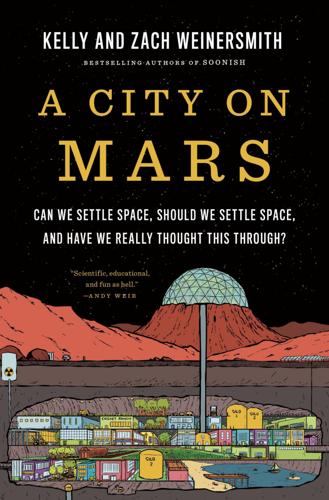
A City on Mars: Can We Settle Space, Should We Settle Space, and Have We Really Thought This Through?
by
Kelly Weinersmith
and
Zach Weinersmith
Published 6 Nov 2023
Man in the Antarctic: The Scientific Work of the International Biomedical Expedition to the Antarctic (IBEA). London: Taylor & Francis, 1988. Roach, Mary. Packing for Mars: The Curious Science of Life in the Void. New York: W. W. Norton & Co., 2010. Roberts, Thomas G. “Space Launch to Low Earth Orbit: How Much Does It Cost?” Aerospace Security, September 1, 2022. https://aerospace.csis.org/data/space-launch-to-low-earth-orbit-how-much-does-it-cost/. Rogers, Susan Fox, ed. Antarctica: Life on the Ice. Palo Alto, CA: Travelers’ Tales, 2007. Ronca, April E., Ellen S. Baker, Tamara G. Bavendam, Kevin D. Beck, Virginia M. Miller, Joseph S. Tash, and Marjorie Jenkins.
…
Newlyweds on a Space Shuttle may be the most plausible case for a successful rendezvous and docking, but listen, a shuttle has about as much living space as a school bus, only with a crew of seven, a sealed atmosphere, and no shower. No doubt this is someone’s ideal setting, but if Lee and Davis successfully defiled low Earth orbit, the crew likely would’ve noticed. We can’t categorically deny the existence of a seven-person space-canoodling conspiracy, but we can at least say if we were trying to pull it off, one of the two- or three-person crews on an early space station seems like the easiest place to keep it secret.[*] And then there’s our favorite space sex rumor: according to G.
…
We can’t document them all, but here are a few highlights: 1990—Tokyo Broadcast System pays to fly journalist Toyohiro Akiyama to Mir aboard a rocket covered with advertisements for Japanese companies, including Unicharm, maker of disposable hygiene products. 1996—Pepsi sends a 1.2-meter-long inflatable fake Pepsi can to Mir, which cosmonauts have to take on more than one EVA (extravehicular activity), aka a spacewalk, aka the most dangerous activity available in low Earth orbit, and which doesn’t typically involve gigantic novelty soda cans. Incidentally, although both Coke and Pepsi have made their way to space, they aren’t terribly popular with astronauts, because burping in zero gravity is a dicey proposition. 2000—Pizza Hut plasters their logo on a Russian rocket.
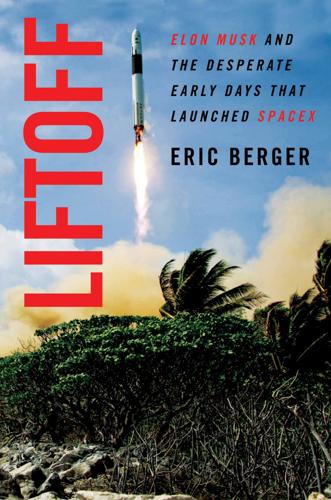
Liftoff: Elon Musk and the Desperate Early Days That Launched SpaceX
by
Eric Berger
Published 2 Mar 2021
The success of NASA’s Apollo Moon program in the 1960s had spurred a wave of student interest in math and science, and led to a generation of engineers, scientists, and teachers. But this tide had ebbed by the turn of the century. Bjelde’s generation had grown up with the space shuttle, and its endless revolutions around Earth in low-Earth orbit, not the derring-do of the Apollo explorers. Unlike Bjelde, who had chosen his major literally because aerospace was listed first alphabetically under engineering, most of the cool kids were not doing space anymore. They were into medicine, investment banking, or tech. Musk had been among those leading the digital revolution.
…
Microcosm’s founder, James Wertz, did not have deep pockets, so he had sought to build the Scorpius family of rockets with dribs and drabs of funding from a succession of small government grants, beginning with a few million dollars from the Air Force Research Laboratory in 1993. The first step would be a small, suborbital booster, followed by a two-stage rocket capable of lifting a few tons to low-Earth orbit. Microcosm’s overall plans were not dissimilar to those of SpaceX—developing a simple, low-cost rocket that could be quickly rolled to the launchpad and flown into space. Twice, in 1999 and 2001, Koenigsmann helped Microcosm launch suborbital versions of its Scorpius rocket from White Sands Missile Range in New Mexico.
…
And if you improve that product, will they then sell it to your competitors?” Kistler, led by a cadre of former NASA engineers, approached its rocket design with a traditional mindset. The payload user’s guide for the company’s K-1 rocket, intended to launch from southern Australia and carry as much as four tons to low-Earth orbit, boasted about its blue-chip aerospace suppliers. “Each of Kistler Aerospace’s contractors is a leader in its respective field of the aerospace industry and has significant experience in the construction of similar components,” the guide stated. Among the contractors were Lockheed Martin (LOX tanks), Northrop Grumman (structures), Aerojet (engines), Draper (avionics), and so on.
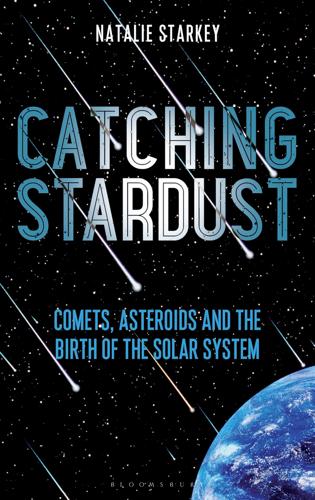
Catching Stardust: Comets, Asteroids and the Birth of the Solar System
by
Natalie Starkey
Published 8 Mar 2018
Processing mined products in a low-gravity environment is something that could require very different techniques to those used on Earth. For example, the use of simple gravity separation, something which is taken for granted during terrestrial mining, cannot be relied upon in space, particularly on small bodies such as comets and asteroids. Locating a processing plant in low Earth orbit, or on the Moon, where the gravity is just a sixth of that on Earth but considerably more than on asteroids or comets, would still require different techniques to those used on Earth. Nevertheless, the low gravity provided by the Moon is better than the near-zero gravity on a small comet or asteroid.
…
We’ve been exploring space using robots for several decades now, and have developed a multitude of complicated and sophisticated machinery. In comparison, the sort of technology that will initially be required for prospecting space objects for potential mining activities needn’t be too complex. The primary prospecting steps can easily be carried out using Earth-based telescopes, or relatively simple telescopes in low Earth orbit. Additionally, specialist satellites can be launched with a precise job in mind that would initially be as basic as locating potential space objects, estimating their size, shape, density and exact orbit, as well as whether they are rocky or metallic, or contain an abundance of volatiles. This would be a relatively simple place to start with current technology.
…
Once a space object is located with potentially suitable composition for mining, it would need to be mapped in much greater detail to establish the exact composition of metals, rock and volatiles, and how they are distributed. This would allow for an assessment of whether the object represents an economic resource of materials. However, because many of the objects of interest are on the small side, NECs and NEAs that are tens of metres in diameter, assessing them in detail from Earth, or even from telescopes in low Earth orbit, is not currently possible. Obtaining high-quality geochemical and geophysical data with a high enough spatial resolution to determine the exact composition and location of different materials would almost certainly need to be done in space itself, using orbiting spacecraft equipped with more advanced scientific instruments.
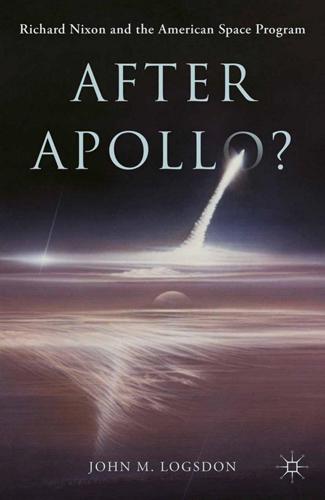
After Apollo?: Richard Nixon and the American Space Program
by
John M. Logsdon
Published 5 Mar 2015
In this mission area, a shuttle would deliver large satellites to low Earth orbit. Such satellites could be checked out in orbit before being deployed, and a future shuttle mission could rendezvous with a satellite “to replace non-operating or outdated” equipment or to return the satellite to Earth for refurbishment. N at i o na l S e c u r i t y an d S h u t t l e D e s i g n 165 2. Launch of propulsive stages, propellants and payloads for high energy missions. In this mission area, a shuttle would launch payloads destined for transfer from low Earth orbit to synchronous orbit or other destinations requiring additional propulsion.
…
Mueller had become convinced that Newell’s effort was not likely to produce the kind of approach to the future that could gain political and public support, and viewed himself as a “white knight, saving the agency from itself.”20 Mueller had earlier come to the conclusion that high priority should be given to lowering the costs of space operations by developing not only a space shuttle but also reusable space “tugs” to move payloads from low Earth orbit to other destinations between the Earth and the Moon; he characterized the combination of the shuttle and tugs a “Space Transportation System.” His plan stressed three characteristics: ●● ●● ●● commonality: the use of a few major systems for a wide variety of missions; reusability: the use of the same system over a long period for a number of missions; and economy: the reduction of “throw away” elements in any mission.
…
This “core module” would be able to support a 12-person crew and have a ten-year lifetime; it was to be the first step on a path to having an increasing number of humans living and working in space. The FY1971 budget decision to suspend for an indefinite period production of the Saturn V cast an immediate pall over this plan. NASA would need one Saturn V to launch the initial module, and additional boosters if the subsequent low-Earth orbit infrastructure buildup contemplated in the STG report were to be pursued. However, the seven remaining Saturn V vehicles of the original 15 ordered at the start of Apollo were already committed to the six remaining Apollo missions after Apollo 13 and to Skylab, and prospects for restarting Saturn V production in a few years appeared dim.
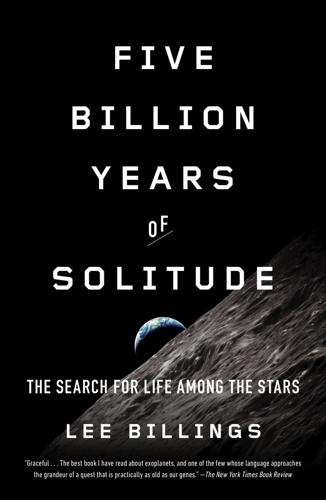
Five Billion Years of Solitude: The Search for Life Among the Stars
by
Lee Billings
Published 2 Oct 2013
Saddled with the financial strain of operating the shuttles and building the ISS, NASA saw its once-bold vision for a human future in space become a literal path to nowhere, in which astronauts looped endlessly around low Earth orbit waiting for their bones and muscles to waste away in microgravity. In nearly every aspect, the shuttle program was a ruinous white elephant that failed to deliver on its most crucial promises. The lone exception was arguably the shuttle program’s role in the Hubble Space Telescope, a school bus–size robotic observatory that was delivered into low Earth orbit by the space shuttle Discovery in 1990. After initially being proposed in the 1940s by the American astronomer Lyman Spitzer, the Hubble had been conceived and funded around the same time as the shuttles, and had taken decades and upwards of $2 billion to construct and launch.
…
Aberrations of the Light The sky was hazy and overcast above Cape Canaveral, Florida, on the morning of July 8, 2011. A light breeze from offshore was the only respite against the sticky summer heat for the estimated 750,000 people who lined the beaches and coastal causeways surrounding Kennedy Space Center. They were there to say goodbye, awaiting the launch of NASA’s space shuttle Atlantis into low Earth orbit and into history as it embarked on the final flight of the thirty-year-old space shuttle program. As the final countdown commenced, the shuttle’s last commander, Navy captain Chris Ferguson, contemplated the program’s end with the mission’s launch director, Mike Leinbach. “The shuttle is always going to be a reflection of what a great nation can do when it dares to be bold and commits to follow-through,” Ferguson radioed from his seat astride the eighteen-story-tall, 4.5-million-pound shuttle stack—the orbiter, side-mounted to a hulking rust-colored external fuel tank and flanked by twin white rocket boosters.
…
Projecting forward, NASA’s leaders thought they saw a bright future in which the agency’s budget would steadily rise year after year, allowing the construction of even more-ambitious space telescopes, as well as sample returns from Mars and, ultimately, the rekindling of human exploration beyond low Earth orbit. After Hubble reached the end of its useful life sometime in the first or second decade of the twenty-first century, it would be de-orbited into the Pacific Ocean, and a new, even more revolutionary observatory would take its place. Hubble’s successor was announced in 1996 as the Next Generation Space Telescope before being renamed the James Webb Space Telescope (JWST) in 2002 in honor of the NASA administrator who had guided the agency in the glory days of Apollo.

A New History of the Future in 100 Objects: A Fiction
by
Adrian Hon
Published 5 Oct 2020
China simply didn’t have that many rich people, and ultimately the tax burden laid most heavily on the middle class. But the mere fact that some of the rich were genuinely, visibly suffering under the new tax policy—well, that was enough to salve the wounds of more than a few unhappy Chinese. 54 ALTO FIRENZE Low Earth Orbit, 2036 It’s truly exquisite; nothing less than a breathtaking meld of form and function that rivals the best of the old masters. Any artist would envy its achievement, set as it is against a natural yet demanding canvas of surpassing beauty. And how fitting it is that once again the Italians are at the vanguard of this new discipline of space habitat design!
…
The fact that Alto Firenze remains largely intact to this day is another minor miracle, one that has transformed it into a historical artifact of immeasurable value—but perhaps I’m getting ahead of myself. Alto Firenze was initially conceived in the late ’20s as a space habitat for one hundred people in low Earth orbit. Unlike other space hotels and state-constructed research stations, Alto Firenze was designed to take a step beyond the twentieth-century utilitarian style. No ugly white boxes and greebles were welcome here; instead, the station incorporated a level of elegance and fashion that saw fittings and module fabrication directed by experienced architect-engineers in Turin.
…
It was furnished with lounges, sleeping pods, bathrooms, observation areas, and dedicated dining rooms designed by the noted Group of Five from Florence. By the time main assembly was completed four years later, Alto Firenze’s original business plan, which saw it as a combination hotel and luxury resort, had become slightly outdated. The sheer number of competing hotels in low Earth orbit—fourteen by this point with another twenty in construction—had cut projected profits substantially. The Alto consortium decided to keep two modules as a hotel for tourists making the trip up on the new Space-X Hawks, convert three modules into a conference center, and use the final module as the first orbital art gallery and museum.
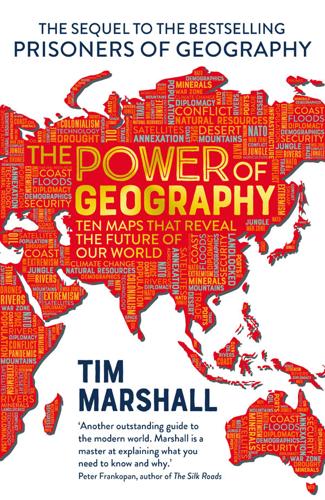
The Power of Geography: Ten Maps That Reveal the Future of Our World
by
Tim Marshall
Published 14 Oct 2021
For the next few decades, the most important of these for the future of space exploration is Earth Space, particularly low Earth orbit. This is where our communication – and increasingly our military – satellites are placed. Control of this belt will give countries a huge military advantage across the Earth’s surface. Dolman created a maxim which echoes Halford Mackinder’s famous 1904 ‘Heartland’ geopolitical theory about control of the world beginning, ‘Who rules East Europe commands the Heartland.’ Dolman’s version is: ‘Who controls low Earth orbit controls near-Earth space. Who controls near-Earth space dominates Terra. Who dominates Terra determines the destiny of humankind.’
…
China has stationed a satellite there, allowing it to see what is happening on the ‘dark side’ which, by no coincidence, is where they are considering establishing a base. These are the types of geographical realities we may become more accustomed to hearing about as astropolitics comes of age and the great powers integrate space warfare into their military budgets. It is clear that, without binding treaties limiting the militarization of space, low Earth orbit is a probable battlefield for military weapons aimed firstly at rivals within the belt, and then below it. Russia and China have both made organizational changes in their military, as have the Americans with the formation of the US Space Force in 2019. There are concerns that this activity violates the Outer Space Treaty, but it only states that weapons of mass destruction such as nuclear missiles should not be placed ‘in orbit or on celestial bodies or [stationed] in outer space in any other manner’.
…
The $10-million-per-week cost includes a free space walk and an excursion to the World Space Lab, the international laboratory situated a convenient 50 kilometres away, where, in 2028, the discovery of the cure for Alzheimer’s disease was made. Video calls to the fledgling moon-base are also offered, although with only twelve people working there this may not always be possible even if your call is very important to them. Some things never change. In twenty years’ time spaceships are refuelling in low Earth orbit, en route to long journeys across the vast reaches of space. Others land on the Moon, where 3D printers are producing huge solar panels for both the expanding ‘Gateway’ multinational bases there and also to fit onto visiting craft to allow them to venture to Mars. Some of the crews still grumble at the six-month journey time but are reminded that it is almost 90 million kilometres away, and that it used to take ships two months just to get from the UK to America.

Shoot for the Moon: The Space Race and the Extraordinary Voyage of Apollo 11
by
James Donovan
Published 12 Mar 2019
(And because no one knew what rockets would be needed or wanted after Apollo, that meant double the job security.) One variation on EOR would employ von Braun’s long-cherished space station idea. Even those at Houbolt’s home, Langley, thought LOR too complex and risky, and Time magazine opined that “at first glance [it] seems like a bizarre product of far-out science fiction.” If a crisis occurred in low Earth orbit during the EOR process, the spacecraft could most likely return home quickly—but what if there was a life-threatening problem near the moon, 239,000 miles away, during LOR? There would be no chance of rescue. The thought of astronaut corpses circling the moon indefinitely kept many people at NASA awake at night.
…
Since no one knew Deke’s criteria, everyone competed in any way possible to at least snag a backup role on a flight. About halfway through Gemini, a pattern began to emerge, though it wasn’t a hard and fast rule: after a mission, a backup crew would skip two flights and be named the prime crew on the third. The Gemini missions continued. On December 5, 1965, Frank Borman and Jim Lovell blasted into low Earth orbit on Gemini 7, beginning a marathon fourteen-day flight. Ten days later, Gemini 6, with Wally Schirra and Tom Stafford aboard, launched; their mission to dock with a radio-controlled Atlas-Agena target vehicle had been delayed when the Agena exploded six minutes after liftoff. After the craft reached orbit, Schirra skillfully maneuvered to within a foot of Gemini 7.
…
The rendezvous and docking went well, but none of the first three EVAs did. Each spacewalker had a difficult time, especially when he ran into Newton’s pesky third law of motion (for every action, there is an equal and opposite reaction) and its peculiar effect in the microgravity environment of low Earth orbit. Every astronaut found that working for an extended time in a twenty-one-layer spacesuit, inflexible when pressurized, was much more difficult in space than it had been in the ground simulation. None of them had a harder time than Eugene Cernan on Gemini 9. He spent two hours and eight minutes on an EVA, during which he exhausted himself trying to maneuver in a spacesuit that had, in his words, “all the flexibility of a rusty suit of armor.”
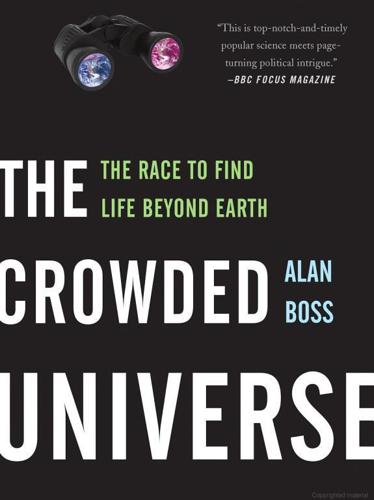
The Crowded Universe: The Search for Living Planets
by
Alan Boss
Published 3 Feb 2009
The cancellation of SM4 meant that Hubble’s days were numbered; SM4 was to have installed six fresh new gyroscopes and replaced all six of the original batteries, which had been launched with Hubble in 1990. Even the Energizer Bunny slows down after a couple of decades of constant use in the harsh environment of space. O’Keefe said the decision to cancel SM4 was his decision and his alone. The reason lay in the fact that Hubble was in a low-Earth orbit unlike the low-Earth orbit of the International Space Station. Hubble’s orbit is inclined about 20 degrees closer to Earth’s equator than the Space Station’s orbit. Once it was launched toward Hubble, a Shuttle could not change its orbit enough to make it to the International Space Station in case of trouble.
…
Goldin concluded his address by suggesting that NASA would want to send robotic spacecraft to the closest habitable worlds by the end of the twenty-first century in order to take really close-up photographs of the planets and beam the images back to us at the speed of light. Goldin’s breathtaking proposals were enough to keep NASA’s engineers gainfully employed for the next century, giving them something much nobler to do than run a shuttle service for a chosen few from the east coast of Florida to low Earth orbit and back. June 8, 1998—Maryland Senator Barbara Mikulski announced that Baltimore’s Space Telescope Science Institute had been chosen to operate the Next Generation Space Telescope, an infrared space telescope with a diameter three times that of Hubble. Hubble itself had been given a 5- year reprieve and was now scheduled to be de-orbited by a Space Shuttle mission in 2010.
…
That meant the Russian space program was likely to be the source of the object, because the American and Russian space programs were the primary polluters of the skies (at least before the Chinese used a warhead to destroy one of their own failed weather satellites later in 2007). The fact that the object had fallen in New Jersey just two days before pieces of the old Soviet ICBM had fallen over Cheyenne Mountain was a powerful clue about its probable origin. The Nageswarans’ house may have been struck by an errant piece of CoRoT’s ticket to low Earth orbit. January 27, 2007—The Advanced Camera for Surveys (ACS) on Hubble suffered an electrical failure and went blind. The camera was the newest instrument on Hubble, having been installed in the fourth Hubble servicing mission in 2002. The camera had twice the field of view of Hubble’s previous wide-field camera and could collect data 10 times faster.

Accessory to War: The Unspoken Alliance Between Astrophysics and the Military
by
Neil Degrasse Tyson
and
Avis Lang
Published 10 Sep 2018
That’s where satellites come in, because nothing provides more hard facts today than the many hundreds of navigation, remote-sensing (also called Earth-observation), and weather satellites that now circle Earth 24/7.119 Take America’s Global Positioning System, GPS—two dozen satellites in orbit at about 12,500 miles above Earth, more than fifty times higher than ordinary low-Earth-orbit satellites. You use it to navigate to a cousin’s new house ten miles from nowhere for Thanksgiving dinner; geologists use it to chart earthquake fault zones in western India; conservation biologists use it to track the tagged grizzly bear population in Alberta, Canada; and people looking for immediate sex use it to triangulate on potential partners within range of their own location.
…
One de facto category of space weapon has nothing to do with intentional deployment: space junk. It’s already up there, the inevitable but inadvertent result of smashups, explosions, rocket launches, space-walk maneuvers, the ordinary dumping of trash, and the inevitable demise of assorted spacecraft. From a distance, it looks like a cloud of dandruff ringing our planet, mostly in low Earth orbit, because that’s where most satellites are found. But space junk populates all of nearby space, extending six Earth radii out to the zone of geosynchronous satellites.10 Besides a few notable mementoes of the late 1950s, such as the final stage of the launch rocket for the USSR’s first Sputnik and the entirety of America’s first Vanguard, hundreds of thousands of unguided bits of flotsam and jetsam orbit Earth amid our working satellites.
…
Finally, in August 1983, five months after Reagan’s Star Wars speech—as certain members of Congress were working up legislation aimed at achieving a joint US–Soviet moratorium—Yuri Andropov, general secretary of the Soviet Communist Party, met with a bipartisan delegation of nine US senators in Moscow and committed the Soviet Union to a moratorium on the deployment of any new ASAT systems in space, even for testing purposes. The United States did not follow suit. In October 1985, an American ASAT—a small missile launched from an F-15 fighter jet—took out an aged American scientific satellite, spreading debris throughout low Earth orbit. By the way, the Soviet Union regarded America’s space shuttle as a possible ASAT. National security specialist Joan Johnson-Freese suggests they feared its robotic arm, which might “pluck satellites out of the sky.” UK military space specialist Matthew Mowthorpe proposes instead that the Soviets feared its possible cargo of nuclear missiles.52 One of the more imaginative ASAT designs was the Kinetic Energy Antisatellite (KE-ASAT) interceptor, birthed in the United States.
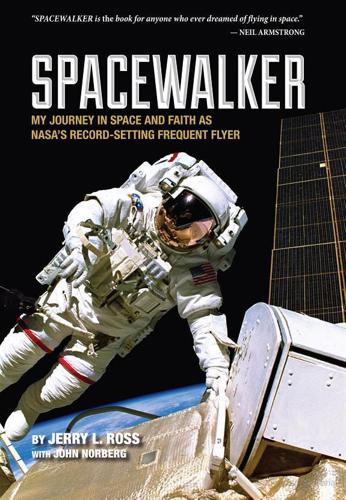
Spacewalker: My Journey in Space and Faith as NASA's Record-Setting Frequent Flyer
by
Jerry Lynn Ross
and
John Norberg
Published 31 Jan 2013
They have made and continue to make valuable contributions across NASA in line with their mission statement.The NESC has been called upon to apply their expertise to a wide range of challenges outside of NASA, including the rescue of the Chilean miners trapped underground in 2010. The last Shuttle flew in July of 2011, and as sad I was to see that, it was time for the program to end. The Shuttle was designed for low Earth orbit space missions, and the time had come for us to turn our human spaceflight program toward deeper space—the Moon and Mars. As long as the Shuttles continued to fly, NASA would not have enough funds to leave low Earth orbit, return to the Moon, and eventually go on to Mars. The Shuttles were also growing old. On nearly every mission we found additional issues about which we were concerned. If the Shuttles had continued to fly, statistically it would have been just a matter of time before we lost another vehicle and another crew.
…
It was incredible to silently float over the coast of Florida and see the beautiful blues and greens of the Caribbean, followed just minutes later by the coastlines of Africa and the Mediterranean Sea, the Nile River and Delta, the Dead Sea, the Arabian Sea, the Himalayas, the purplish tint of Australia, and the wide expanse of the south Pacific Ocean before crossing over the Baja Peninsula of Mexico and over the United States again. The southern island of New Zealand is among the most spectacular sights from space. It’s absolutely incredible—stark snow-covered mountains dropping steeply to the deep blue South Pacific. It made me want to visit what has to be one of the most beautiful places on Earth. From low Earth orbit one can see a sunrise and a sunset every ninety minutes, each more vivid, unusual, and beautiful than the last. Within a few minutes each sunrise rapidly transitions from complete darkness to exceedingly brilliant daylight. One of the most unexpected parts of sunrises and sunsets is the layering of the atmosphere above the Earth’s horizon, much like the layering of a torte.
…
Third in the series was the Chandra X-ray Observatory, which studies soft X-ray emissions.The fourth telescope, the Spitzer, was launched aboard an unmanned rocket in 2003 and studies the infrared spectrum. The Gamma Ray Observatory was high priority. At thirty-five thousand pounds, it was at that time the heaviest satellite to be launched into low Earth orbit by the Shuttle. The first time I saw it I couldn’t believe its massive structure. It didn’t look like a delicate satellite. Most of the time when viewing a satellite at close range, it looks so fragile that one is afraid to even breathe on it; however, the Gamma Ray Observatory looked more like a diesel locomotive.
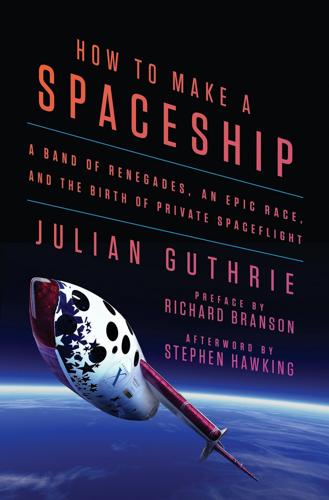
How to Make a Spaceship: A Band of Renegades, an Epic Race, and the Birth of Private Spaceflight
by
Julian Guthrie
Published 19 Sep 2016
He and his elementary school friend Wayne Root made their own stop-motion movies, using Star Trek models on fishing line as props. Peter learned that he could scratch the film in postproduction to make spaceships fire laser beams. On weekends, Peter loved to sit his family down in the living room upstairs and give lectures on stars, the Moon, and the solar system, explaining terms like “LEO,” for low-Earth orbit. The launch of the Saturn V rocket on July 16, four days before the scheduled Moon landing, had been to Peter every Fourth of July rolled into one. Three men riding on top of a fiery rocket aimed at space! Five F-1 engines burning liquid oxygen and kerosene and producing 7.5 million pounds of thrust!
…
NASA canceled its mission to send a spacecraft to do a flyby of the famed Halley’s Comet, set to pass close to Earth in 1986 and not return for another seventy-five years. Apollo 18, 19, and 20 were canceled even though most of the hardware had been bought and built. The Moon had been reached, and critics said the government was “shooting money into space.” Design and development of the space shuttle were delayed, and plans for a U.S. space station in low-Earth orbit ended. Lovers of space wondered what was next. It was the withering away of a dream. Desperate to do something space related at Hamilton, Peter created and circulated a pro-space petition to send to every elected leader he could find, from local representatives to President Jimmy Carter’s adviser on space affairs.
…
No longer burdened by medical school, Peter had expected International Microspace to take off quickly, in ways similar to SEDS and ISU. In his mind, the goals of the satellite company were straightforward: reduce the cost of getting something to space, offer an alternative to the government monopoly, and use the low-Earth-orbit launchers as a stepping-stone to reaching the stars. But nothing in this enterprise had been simple; in fact, most everything had been tedious—and contentious. For starters, fund-raising for the satellite company was harder than the launch of ISU and SEDS combined. And in stark contrast to the impassioned, idealistic space discussions that he had savored at MIT, Peter now found himself immersed in talk of legalities, contracts, licensing partners, strategic partners, vendors, customers, finance, government regulations, and valuations.
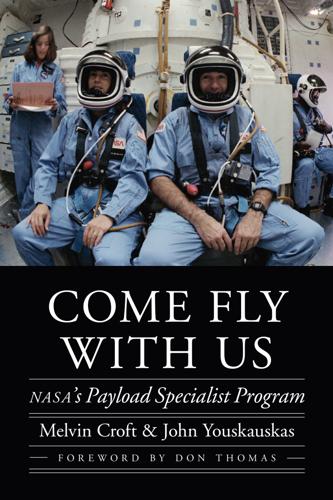
Come Fly With Us: NASA's Payload Specialist Program
by
Melvin Croft
,
John Youskauskas
and
Don Thomas
Published 1 Feb 2019
America’s space shuttle was open for business, and the possibilities were limitless. 1 The Genesis of the Payload Specialist I believe that it is also important to insure that provisions are made to fly individuals assigned as mission specialists from the Astronaut Office at JSC as payload specialists. Christopher Kraft It was a hot and humid Florida afternoon on 29 July 1985 as space shuttle Challenger stood poised and pointed to the deep-blue skies on Kennedy Space Center’s (KSC) launchpad 39A, fueled and ready for a planned seven-day scientific mission to low Earth orbit. Spacelab 2 was the primary mission for STS-51F, although this was the third Spacelab mission due to delays in critical hardware. Unlike the previous two Spacelab missions, which carried a pressurized module where the payload crew performed scientific experiments, Spacelab 2 consisted of a series of open pallets situated in Challenger’s payload bay.
…
The relationship between NASA, the U.S. military, and the various clandestine entities of the country had always been somewhat of a forced marriage of organizations with competing priorities and budget requirements. When the space shuttle was first conceived, it was thought that most major payloads destined for low Earth orbit would ride aboard a vehicle that had yet to be designed to accommodate any single type of cargo. During the shuttle’s development, the vision of it becoming the sole launch vehicle of the United States relied on a number of factors, most important being the flight rate. By keeping the orbiters flying regularly and spreading the operational costs over a greater number of customers, the price of taking payloads into orbit would, in theory, drop exponentially.
…
Oberth was one of the masterminds of the horrific and deadly German V-2 rockets that inflicted fear and suffering on the citizens of London and other Allied capitals in Europe during World War II. Following the war, he made his way to the United States, where he worked with the legendary Wernher von Braun—another V-2 pioneer—on developing rockets for the peaceful exploration of space. That day as he watched his fellow Germans ascend into low Earth orbit, the ninety-one-year-old Oberth believed that earthlings should set their sights on building an outpost on the moon. Challenger, circling Earth barely higher than two hundred miles, would not come close to meeting Oberth’s lofty expectations, but it carried a bevy of promising scientific experiments, many designed and built by his fellow Germans.
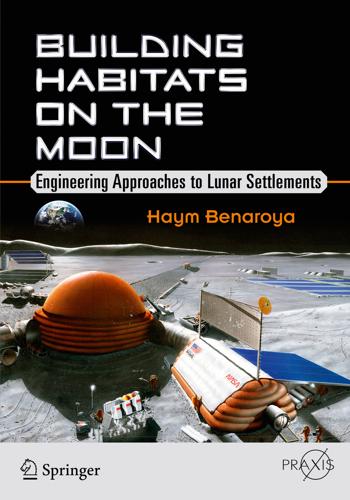
Building Habitats on the Moon: Engineering Approaches to Lunar Settlements
by
Haym Benaroya
Published 12 Jan 2018
In-situ resource utilization will allow us to use lunar materials to build structures, manufacture very large solar panels for energy, and extract valuable elements from the lunar regolith that can be used to create an industrial infrastructure. This capability, and advanced manufacturing techniques – also known as 3D printing technologies – are the keys to a viable manned exploration and settlement effort. In order to advance the mission outlined above, we will need the following: access to orbit; low Earth orbital operations; human-rated transportation to the Moon along with all the technologies for descent and landing; lunar habitats; solar, battery and nuclear power systems; life-support and shielding systems to safeguard against radiation , micrometeorites, and zero- and one-sixth gravity ; the ability to perform surface missions; in-situ resource utilization in conjunction with necessary logistics and technologies; and fuel to ascend into lunar orbit for a return to Earth.
…
A lunar base will first be an engineering and medical laboratory, for the study of extraterrestrial infrastructure development and for the creation of a safe environment for human habitation. Access to lunar resources will drive industrial activity. Public interest in space travel will also develop as it has today for tours of low Earth orbit. Second, it will be a site for the scientific study of the Moon and the Solar System. In conjunction with these, the Moon will become an economic nodal point that will support space transportation in cislunar space, and outward to Mars and the asteroids and outer planets. Resources recovered on the Moon will be used to support the manufacture of items needed locally, as well as of use beyond the Moon.
…
Geopolitical stability could set the stage for this next generation of space activities. Beyond these hopes, also identified were “the following elements of a space-based infrastructure that can ultimately be capable of supporting the human colonization of the Solar System:efficient transportation between the Earth’s surface and low Earth orbit, for example single-stage-to-orbit spaceplanes, and a new generation of heavy-lift launch vehicles the ability to build large structures in space, for example space stations, space factories, interplanetary vehicles, and lunar and planetary outposts the ability to tap and utilize large quantities of solar energy, and the ability to extract and process extraterrestrial materials , especially from near-Earth and main-belt asteroids, but possibly also from the Moon and Mars.”

Exponential Organizations: Why New Organizations Are Ten Times Better, Faster, and Cheaper Than Yours (And What to Do About It)
by
Salim Ismail
and
Yuri van Geest
Published 17 Oct 2014
A calculation convinced Motorola that the cost of cell phone towers—about $100,000 each, not including spectrum utilization limits and the not-inconsiderable expense of producing brick-sized handsets—meant that it would be too expensive to blanket the vast majority of the landscape. Soon enough, however, a more radical but also more profitable solution presented itself: a constellation of seventy-seven satellites (Iridium is number seventy-seven on the periodic table) that would cover the globe at low Earth orbit and provide mobile telephony for one price—no matter the location. And, Motorola concluded, if just a million people in various developed countries paid $3,000 for a satellite phone, plus a $5-per-minute usage fee, the satellite network would quickly become profitable. Of course, we now know Iridium failed spectacularly, ultimately costing its investors $5 billion.
…
By combining vast stores of data with powerful new analytical tools, there is an opportunity to see the world in a new way—and to turn the resulting information into new business opportunities. Sources of this Big Data are emerging everywhere. For example, we mentioned the three separate initiatives for low Earth orbit (LEO) satellite systems that within a few years will deliver real-time video and images anywhere on the planet. Despite the inevitable privacy and security concerns bound to arise with the launch of LEO satellite systems, there is no doubt that scores, even hundreds, of new businesses will emerge from access to this massive new information source.
…
Now, toss into this mix Google Glass, the smart eyewear that enables video or images to be recorded or transmitted in real time anywhere as people move throughout their day. Next, add drones, which cost less than $100 and can be flown at a variety of altitudes, their 5-gigapixel cameras capturing everything in the landscape below. And, finally, consider the several nanosatellite companies which are launching mesh configurations of hundreds of satellites into low Earth orbit, and which will provide real-time video and images anywhere on the planet. Given the staggering pace of technological innovation, the possibilities are endless. On a much more intimate level, the human body has approximately ten trillion cells operating as an ecosystem of unimaginable complexity.
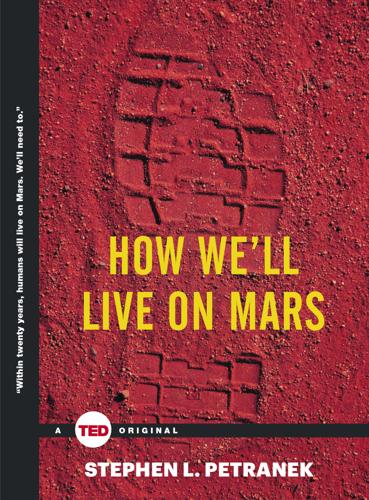
How We'll Live on Mars (TED Books)
by
Stephen Petranek
Published 6 Jul 2015
(Nearly five decades later, and a day after Apollo 11 took off for the moon, the Times printed a correction.) In the early 1950s, when von Braun proposed a serious plan for going to Mars, his vision must have been experienced as absurd—even by scientists and engineers. Hundreds of rockets sent into low Earth orbit to build ten giant interplanetary spacecraft filled with tens of millions of pounds of fuel and oxygen and food? Really? But it certainly captivated the American public. In 1954 Collier’s magazine published an eight-part series on space travel that included von Braun’s description of exactly how we could get to Mars.
…
Meanwhile, there are likely to be many higher-priority customers for both Dragon spacecraft and Falcon Heavy rockets that could put Mars One farther behind. By the middle of 2014, Mars One had raised about $600,000 from donations. That is less than 1 percent of the cost of launching a Dragon spacecraft into low Earth orbit on a regular Falcon 9. Mars One charges applicants for astronaut positions a fee, which will bring them a few million dollars. It is also pursuing broadcasting rights, in the reasonable expectation that a Mars trip could be the most popular reality TV show of all time. Regardless, Mars One has a long way to go to raise the $6 billion that its CEO, Bas Lansdorp, says will be needed just for the first crew.
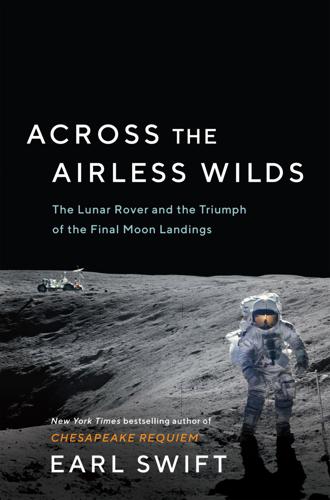
Across the Airless Wilds: The Lunar Rover and the Triumph of the Final Moon Landings
by
Earl Swift
Published 5 Jul 2021
Each of the early Apollo flights checked out the equipment and procedures necessary for a landing: In October 1968, the first manned mission, Apollo 7, test-drove the command and service module. Two months later, Apollo 8 fired humans into deep space and around the moon for the first time, aboard the first manned Saturn V; its crew became the first to witness the moon’s far side and snapped Earth’s most revealing selfie. Apollo 9 shook down the lunar module in low Earth orbit, while Apollo 10 served as a dress rehearsal for the coming first visit to the moon’s surface. Each of the early landings built on the former. Apollo 11 aimed simply to put its astronauts on the regolith and get them back alive: Eagle landed on the board-flat Sea of Tranquility, the safest but least interesting real estate on all the moon, and its crew didn’t stray far: the footprints left by Armstrong and Buzz Aldrin would fit inside a football field, with a lot of yardage to spare.
…
Moreover, it is an urgent warning that the U.S. must immediately embark on a long-range development program to secure for the West ‘space superiority.’ If we do not, somebody else will. That somebody else very probably would be the Soviet Union.” Chosen to write the centerpiece story, Von Braun struck the same tone, arguing for the creation of a giant, wheel-shaped space station to serve as a battleship in low Earth orbit. It would take ten years and a lot of money, he acknowledged, but with it, the United States could preserve peace; in others’ hands, such a weapon might make slaves of the free world. Conventional wisdom holds that the space race began more than five years later, when the Soviets launched the first artificial satellite, Sputnik 1.
…
The third stage, or nose, of the rocket continues on its way, relieved of all that excess weight.” That pretty much describes the Saturn V. Von Braun’s story in the magazine’s second installment, cowritten with Whipple, opened with no shortage of confidence: “Here is how we shall go to the moon.” It laid out a plan to ferry parts and equipment into low Earth orbit, where a small army of astronauts would assemble them into three tremendous rockets. Two would be gassed up for a round-trip; the third would be a one-way space truck, lugging the provisions and gear needed to sustain fifty crewmen for six weeks on the lunar surface. This model for celestial travel—of assembling big rockets in weightless space, thereby obviating the need to muscle stupendously heavy spacecraft off the ground and through the earth’s atmosphere—would come to be called Earth orbit rendezvous.
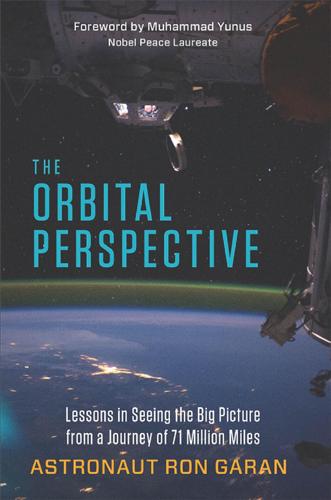
The Orbital Perspective: Lessons in Seeing the Big Picture From a Journey of 71 Million Miles
by
Astronaut Ron Garan
and
Muhammad Yunus
Published 2 Feb 2015
The lessons learned during the Shuttle–╉Mir program enabled the fifteen nations of the International Space Station partnership—╉which includes Canada, the nations of the European Space Agency, Japan, Russia, and the United States—╉to embark on the largest, most daring peacetime international collaboration in history. The first component of the ISS was launched in 1998, and the station has been continuously inhabited since November 2000, surpassing the previous record of nearly ten years’ continuous human presence in low Earth orbit—╉held by Mir, of course. However, the ISS program has also had its share of challenges to overcome to keep the partnership together, some of which we will detail in the next chapter. No challenge was more dire and critical, though, than the aftermath of the morning of February 1, 2003—╉the day Space Shuttle Columbia disintegrated on reentry, killing the crew of Rick Husband, William McCool, David Brown, Kalpana Chawla, Michael Anderson, Laurel Clark, and Ilan Ramon.
…
This was a very emotional experience for all of us. Closing that hatch signified the closing of a long chapter of the U.S. space program, a chapter filled with hard-won successes. But it also signified the fulfillment of a commitment and the opening of a new chapter in space exploration, beyond low Earth orbit. This new era of cooperation is the true fulfillment of a goal articulated nearly fifty years before that final shuttle flight to the ISS. In September 1962, President Kennedy famously stated: For the eyes of the world now look into space, to the moon and to the planets beyond, and we have vowed that we shall not see it governed by a hostile flag of conquest, but by a banner of freedom and peace.
…
Our first bold initiative is the creation of Star Harbor Space Training Academy, which will provide all the training necessary for upcoming private spaceflight participants and the crews that will fly them.3 Our hope is also to provide everyone with a powerful opportunity to experience the orbital perspective, even if they never leave the ground. Human operations in low Earth orbit are no longer the sole domain of large government agencies, and with a new and exciting commercial human spaceflight industry blossoming, it’s a very exciting time in history. My greatest passion and prime focus will be to continue bringing people together to work collaboratively toward solving the problems facing us all.
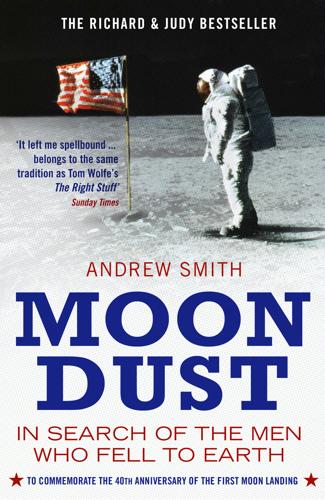
Moondust: In Search of the Men Who Fell to Earth
by
Andrew Smith
Published 3 Apr 2006
After these, more arrived at regular intervals as the space effort intensified and some of the Mercury astronauts retired, and together they fed three different programmes – Mercury, Gemini and Apollo – with three distinct purposes. When the Space Race began, the Soviets were way ahead, so six Mercury flights were needed to prove that American rockets didn’t inevitably blow up and could lob single astronauts into low Earth orbit and bring them back in one piece. After that, between March 1965 and February 1967, a series of nine missions involving the two-crew Gemini ships were used to develop techniques that would be necessary to get to the Moon. Of particular importance and intricacy were the challenges of “rendezvous” and “docking”; the ability of two craft to find each other and conjoin in space.
…
I sit through it myself and gradually become aware of a disturbance at the back of my mind, evolving into a strong sense of pathos. The movie was directed by Ron Howard and narrated by Tom Cruise and its remorseless tedium seems to say everything about the bind NASA finds itself in after three decades spent loitering in low Earth orbit. And in a flash I see the difference between the space shuttle’s 200-mile-high beat and Apollo ploughing 240,000 miles to the Moon: before me now is a space that’s been domesticated and rendered routine, while at a quarter of a million miles you’ve left the Earth and are on the outer edge of experience; are riding the skein between us and Deep Space, being dwarfed by infinity itself.
…
Once again, I’m not quite sure what is being said. “Right now, the basic scheme of things in my mind is different than NASA’s. NASA has been sitting there kind of doing nothing and now they’ve got a little bit of new leadership and it looks to me as though they’re going to say, ‘We, NASA, are tired of being in low Earth orbit – we’re going to go beyond!’ ” He sounds so much like Buzz Lightyear when he says this that I have to resist an urge to applaud. “But I think that’s just eyewash. I don’t think they’re going to be able to do that the way it should happen, until we get the people behind the programme. We do that by passenger travel, and we build up a transportation system that takes the people up and back efficiently, cost-effectively and reliably – and they have a place to go.
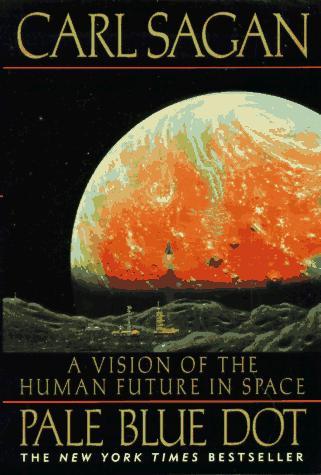
Pale Blue Dot: A Vision of the Human Future in Space
by
Carl Sagan
Published 8 Sep 1997
A dozen humans, all Americans, have made those odd bounding motions they called "moonwalks" on the crunchy, cratered, ancient gray lava— beginning on that July day in 1969. But since 1972, no one from any nation has ventured back. Indeed, none of us has gone anywhere since the glory days of Apollo except into low Earth orbit—like a toddler who takes a few tentative steps outward and then, breathless, retreats to the safety of his mother's skirts. Once upon a time, we soared into the Solar System. For a few years. Then we hurried back. Why? What happened? What was Apollo really about? The scope and audacity of John Kennedy's May 25, 1961 message to a joint session of Congress on "Urgent National Needs"—the speech that launched the Apollo program—dazzled me.
…
There are no compelling economic or manufacturing applications. It is expensive compared to robotic spacecraft. And of course it runs some risk of losing human lives. Every shuttle launch to help build or supply a space station has an estimated 1 or 2 percent chance of catastrophic failure. Previous civilian and military space activities have littered low Earth orbit with fast-moving debris—that sooner or later will collide with a space station (although, so far, Mir has had no failures from this hazard). A space station is also unnecessary for human exploration of the Moon. Apollo got there very well with no space station at all. With Saturn V or Energiya class launchers, it also may be possible to get to near-earth asteroids or even Mars without having to assemble the interplanetary vehicle on an orbiting space station.
…
But a cooperative venture among the United States, Russia, Japan, the European Space Agency—and perhaps other nations, such as China—might be feasible in the not too distant future. The international space station will have tested our ability to work together on great engineering projects in space. The cost of sending a kilogram of something no farther away than low Earth orbit is today about the same as the cost of kilogram of gold. This is surely a major reason we have yet to stride the ancient shorelines of Mars. Multistage chemical rockets are the means that first took us into space, and that's what we've been using ever since. We've tried to refine them, to make there safer, more reliable, simpler, cheaper.
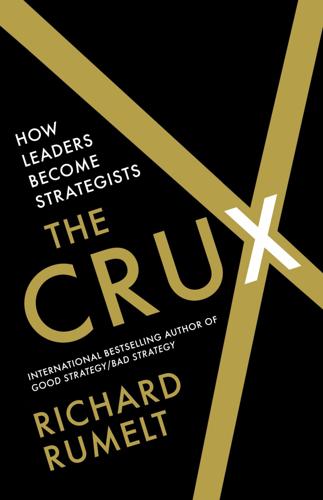
The Crux
by
Richard Rumelt
Published 27 Apr 2022
But the revolution began in 2015 with the Falcon 9 being the first rocket to ever gain orbit and then turn around and fire its engines for a slow reentry and a soft landing on its tail. By 2018 the Falcon 9’s cost per pound into low-Earth orbit was twenty-three times cheaper than the old space shuttle. Its bigger brother, the Falcon Heavy, cut the Falcon 9’s cost per pound in half. On May 30, 2020, SpaceX carried two NASA astronauts to the International Space Station. In early June, NASA approved SpaceX’s plan to reuse its Falcon 9 launch vehicle and its Dragon crew capsule on future missions. FIGURE 2. Cost into Low-Earth Orbit (2018 dollars per pound) NASA had estimated it would cost $200 billion to go to Mars. Musk estimated $9 billion.
…
The two deadly failures in 135 launches were partially due to the selection of solid-fuel rockets.5 (It is worth noting that the 1.5 percent failure rate of the space shuttle was quite a bit lower than the historical 6 percent failure rate of standard launch-to-orbit unmanned rockets. Rocketing into space just isn’t that safe.) The space-shuttle strategy was incoherent. The program was supposed to keep costs down from economies of scale gained by cornering the market for low-Earth-orbit missions. But the shuttles had to have a human crew. You don’t have to be a rocket scientist to see that flying a human crew is vastly more expensive than flying an unmanned rocket. The system had to keep humans alive and unharmed on the ascent, in orbit, during the fiery reentry, and on landing.
…
V., 227–228 Ledecky, Katie, 282–283 Lee Kuan Yew, 43–44 Lepore, Jill, 177 leverage. See power and leverage Levy, Aron, 158–159, 159(table) light-emitting diodes (LEDs), 207 long-range planning in World War II, 272–273 long-term financial approach, 267–268, 271 long-term goals, clarifying, 19–20 long-term strategy: chunking the challenge, 75–76 Louvre museum, 51–52 low-earth orbit, 4–7 low-income housing, 42–43 MacArthur, Douglas, 65–66 Maersk Lines, 164–166 Majid, Musa, 63–64 management work Balanced Scorecard approach, 251–256 deciding where a company can win, 66–70 driving results, 249–250 executive compensation, 99, 102, 172–173, 290 finding leverage at GM, 217–221 ignoring adopted policies, 326–327 ignoring strategic planning, 289–291 methods of management, 251–252 shareholder value and incentive pay, 262–265 Strategy Foundry system identifying challenges, 305–306 manufacturing building a power base in a dysfunctional organization, 116–118 Curtiss-Wright aircraft industries, 236 deducing a strategy, 32–34 fabric and clothing, 204–205 Ford’s reduction in materials costs, 193–194 GE’s accounting manipulations, 105–106 the importance of experience, 196–197 integration and deintegration, 193–194 Nokia’s mobile phone production, 223 reanalysis revealing problems and opportunities, 160–161 refractory metals, 191–193 semiconductor production, 77–78, 81–82, 197 tools for ascents and descents, 121–123 Mark, Edward, 183–185 market saturation, 66–70 Mars, travel to, 4–7, 74 Marshall, Andy, 31, 40 Marshall, George, 65, 130, 132 Marvel comics, 39 masters in business administration (MBA) programs, 36 mastery, the benefits of, 47–48 McDonnell Douglas, 258, 264 McGraw-Hill publishing, 92–94 McNamara, Robert, 71–73, 248–249 Mead Corporation, 173–174 mergers and acquisitions acquiring businesses with needed technical skills, 179–180 Boeing-McDonnell Douglas merger, 258, 264 building a power base, 115 container shipping, 165–166 Curtiss-Wright’s strategies and goals, 240 effect on performance and value, 97–101 failures of economies of scale, 196 overpayment, 101–104 metaphor, 48–49 Microsoft Altair BASIC, 198 clash of ambitions, 73 cloud-based computing, 79 earnings management, 106 iPhone success, 148 mission statements, 279 uncoupling activities and products, 193 Vermer acquisition, 99–100 Windows Mobile, 149 Windows Vista, 73, 270 Middle East: AirLand Battle, 151–156 misapplied goals, 245–247 misrepresentation of data, 171–172 mission statements, 20, 278–281 mobile phone industry and market geolocation capability, 117, 146 Intel’s failed lines, 77–78 Microsoft’s clash of ambitions, 73 quick release cycle, 95–96 scaling, 195 slowing market growth, 84 See also iPhone; Nokia Moll, Roger, 208–209 Monsanto, 179 Moore, Gordon, 45 Moore’s Law, 45, 55, 76–77, 81, 197 mortgage industry: competitive advantage, 186 mottoes, 280–281 MS-DOS, 149–150 Musk, Elon, 4–7, 43, 268–269 NATO forces, 151–156 natural selection, 46, 110 natural system, business as, 110–111 Netflix, 17–19, 21–27 network effects, 198–199 New York, New York: light rail link construction, 157–158 Niagara deals, 99 90-Day Derby, 257–262, 268 Nokia, 148–149, 176–177, 222–225 null set strategy, 61, 71–73 Nvidia, 78–79, 95, 103, 189–190 objectives, management by, 251–252 obstacles, avoiding, 141–143 oil industry, 186–187, 236–240 Olay, 124–125 O’Leary, Michael, 60–62 Ollila, Jorma, 223 Oman, Sultanate of, 276–277 Operation Roundup, 131–132 Operation Torch, 132 operational strategies, 33–34 opium as a political issue, 134–136 opportunities ambitions and, 21–22 collecting, clustering, and filtering, 40–41 focusing on, 17 options, 263–264 Oracle, 56–57 overpayments through mergers, 98–104 Page, Larry, 53 Palmisano, Sam, 230–231 pandemics, strategic planning for, 272–273 Paris: labor unions, 158–159 patent process, 215–216 PCs, 149–150 Pei, I.
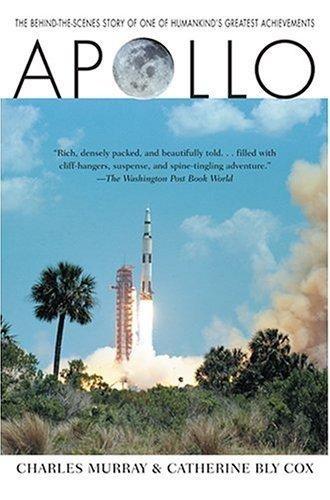
Apollo
by
Charles Murray
and
Catherine Bly Cox
Published 1 Jan 1989
The day before the launch, they gathered in a State Department auditorium that John Disher had borrowed for the occasion—NASA wasn’t big enough to have an auditorium of its own—and Deputy Administrator Hugh Dryden used the name “Apollo” for the first time in public. George Low made a speech, telling his audience that during the 1960s NASA hoped to build a space station in low earth orbit and to conduct a circumlunar flight. Perhaps during the 1970s, if all went well, NASA would land on the moon. On the second day of the conference, July 29, even as recovery teams were preparing to retrieve the pieces of M.A.-1 from the ocean floor, Max Faget addressed the group on the topic of a lunar landing.
…
One of the casualties in the budget was the second stage of the Saturn, an especially disheartening turn of events. Just ten months earlier, Ike had directed Glennan to accelerate work on the super booster; now he was reversing himself. Without the Saturn and its heavy lift capability, manned space flight was going to limp along in low-earth-orbit flights indefinitely. Worse, there might be nothing at all after Mercury. A note attached to Eisenhower’s last budget request for NASA said that Mercury was an experimental effort, adding ominously that “further tests and experimentation will be necessary to establish if there are any valid scientific reasons for extending manned space flight beyond the Mercury program.”
…
For the next few years, the Soviet Union had a lead in launch vehicles that the United States could not possibly close. The Soviets could put more weight into orbit, and weight was critical. The American launch vehicles that were going to be available for the next five years were going to limit the United States to small spacecraft flying in low earth orbit. To the five men gathered in Sorensen’s office, it seemed likely that the Russians were going to be the first to put crews of two and three into orbit, the first to establish a space station, the first to circumnavigate the moon. If the United States wanted to compete, it had to jump to the next step, to pick a goal that would use the next generation of space technology.
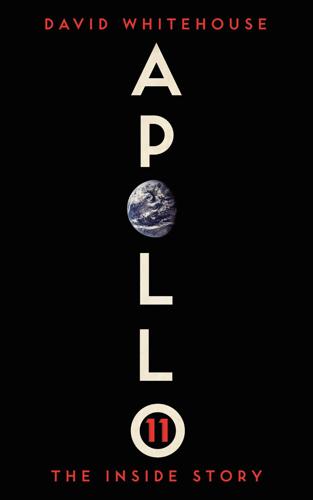
Apollo 11: The Inside Story
by
David Whitehouse
Published 7 Mar 2019
In retrospect it is clear that without all-up testing the first manned lunar landing could not have taken place as early as 1969. Before Mueller joined the program, it had been decided that a total of about twenty sets of Apollo spacecraft and Saturn 5 rockets would be needed. The first manned Apollo flights would be limited to low Earth orbits. Gradually NASA would inch its way closer to the Moon, and flight 17, perhaps, would be the first lunar landing. Listening to the idea, von Braun said it sounded reckless but then added that ‘Mueller’s reasoning was impeccable’. Mueller told everyone, ‘You might as well plan for success, because you are going to have disasters anyway.’
…
Nearby, next to the abandoned Lunar Rover, drawn in the lunar soil, are the initials, TDC, standing for Tracy Dawn Cernan, who was waiting to welcome her father home. Apollo 17 splashed down on 19 December 1972. Within days of its return, US National Public Radio carried an interview with a farmer from Ohio who said, ‘I don’t think they went to the Moon.’ Since then no one has left low Earth orbit. Apollo 17 brought back 111 kg of lunar samples. One of them is particularly cherished by geologists. It is a 1-m-long tube of regolith taken from a deep drilling. It is kept as a reserve sample and has never been opened. The Melancholy of All Things Done In the final summary, 29 astronauts directly took part in the Apollo Moon program.
…
In 1979 he resigned to be national spokesman for Chrysler automobiles and to sit on various corporate boards, and try to maintain a lower profile. Not everyone thought Armstrong should be so withdrawn, especially at a time when NASA was developing the Space Shuttle and had turned its back on going any further than low Earth orbit. Jim Lovell said to him that he should not be so Lindberghlike. Lindbergh, he said, flew across the Atlantic using private money, so he had a right to be withdrawn. Armstrong’s trip was paid for by taxpayer’s money, and it was they, as well as his own desire, that had put him in the position of being the most famous man on Earth.

More Everything Forever: AI Overlords, Space Empires, and Silicon Valley's Crusade to Control the Fate of Humanity
by
Adam Becker
Published 14 Jun 2025
The most reasonable path there—the route nearly every Mars probe and lander has ever taken—requires about six to nine months in deep space before arriving in orbit around the Red Planet. That’s a long time, longer than all but a few humans have ever spent in space, and far longer than anyone has ever spent beyond low Earth orbit. There’s a good reason for that: venturing beyond low Earth orbit exposes you to massive amounts of dangerous radiation from the Sun (and a smaller amount from deep space). The Sun is a gigantic nuclear furnace, where hydrogen is built into helium at a temperature of millions of degrees in its core. That blistering nuclear heat eventually makes its way to the surface and atmosphere of the Sun, producing visible light, ultraviolet rays, and other kinds of radiation with even higher energies, like x-rays and fast-moving charged particles.
…
There are also cosmic rays, high-energy radiation produced by violent events beyond our solar system. Here on the surface of the Earth, we’re protected from much of this radiation by two mechanisms. The Earth’s magnetic field deflects a large amount of the incoming radiation, and our atmosphere absorbs a good deal of the rest before it arrives at the ground. In low Earth orbit, astronauts lack the protection of our atmosphere, and they can see the results: many astronauts have reported seeing occasional bright flashes in the darkness behind their closed eyelids, produced when high-energy radiation slams into their eyes and optic nerves. But such astronauts still have the protection of Earth’s magnetic field.
…
The astronauts on Apollo 13 only had to wait an excruciating three-and-a-half days before returning home in their crippled spacecraft. On a Mars mission gone awry, help would be months away—or more than a year. Part of the problem is the distance involved, but the orbital mechanics are also difficult. Unlike trips to low Earth orbit or the Moon, Mars launches are only undertaken at certain times, when the two planets are in the right positions relative to each other. That means no rescue in a reasonable amount of time would be possible for a Mars mission in trouble. Even if nothing goes wrong, there’s the dangers of the zero-gravity environment within the spacecraft itself: extended time in zero-g leads to muscle atrophy, bone-density loss, and a variety of other physical ailments.

Artemis
by
Andy Weir
Published 14 Nov 2017
“Thank God.” He loosened up a bit. “Where is it?” “First tell me what ZAFO is.” He winced. “It’s kind of secret.” “We’re past secrets now.” He looked truly pained. “It’s just…it cost a lot of money to make that sample. We had to launch a dedicated satellite with a centrifuge to grow it in low-Earth orbit. I’ll be super-duper fired if I go home without it.” “Fuck your job. People got murdered! Tell me why!” He let out a heavy sigh. “I’m sorry. I’m just so sorry. I didn’t want any of this to happen.” “Apologize to Lene Landvik,” I said. “She’s the crippled teenager who’s now an orphan.” Tears formed in his eyes.
…
She leaned back in her chair. “If the price point were comparable to existing cables, it would be a huge boon. And the manufacturer of that product would be swimming in money, of course.” “Yeah,” I said. “And let’s say the prototype of this new fiber optic was created in a specially made satellite in low-Earth orbit. One with a centrifuge aboard. What would that tell you?” She looked puzzled. “This is a very odd discussion, Jasmine. What’s going on?” I drummed my fingers on my leg. “See, to me that means it can’t be created in Earth’s gravity. It’s the only reason to make a custom satellite.” She nodded.
…
But what if the moon’s gravity were low enough for whatever process they’re using?” “This is an oddly specific hypothetical, dear.” “Humor me.” She put her hand on her chin. “Then obviously they could manufacture it here.” “So, in your expert opinion, where’s a better place to manufacture this imaginary product: low-Earth orbit or Artemis?” “Artemis,” she said. “No question. We have skilled workers, an industrial base, a transport infrastructure, and shipping to and from Earth.” “Yeah.” I nodded. “That’s kind of what I thought.” “This sounds very promising, Jasmine. Have you been offered a chance to invest? Is that why you’re here?

How to Spend a Trillion Dollars
by
Rowan Hooper
Published 15 Jan 2020
Once we’ve kickstarted the process of settlement, it should become self-sustaining. Phil Metzger and Julie Brisset of the Florida Space Institute have modelled the business case for setting up a water-mining operation on the Moon, aimed at producing rocket fuel which could be sold at space stations in low Earth orbit. Metzger and Brisset’s study, which was funded by the United Launch Alliance, finds that with a little investment (they assume from NASA, but it could be from us) a mining operation could get up and running. A fledgling space-based economy could follow. They argue that a financial payback could come sooner than expected, in a matter of decades.
…
Some people have criticised its worth in terms of clear scientific discoveries and advances, but as a collaboration of five space agencies (from the US, Canada, Russia, Japan and Europe), and as a long-running experiment on how to live in space, it’s been a resounding success. People from 18 countries have visited since it went into operation in November 2000. The space station is now being commercialised – NASA will start offering holidays on it ($35,000 per night, not including transport to and from low Earth orbit) – but its days are numbered. It may last until 2024, perhaps a few years longer. Collaboration elsewhere is winding up. Since the Space Shuttle programme ended, NASA has relied on Russia and its Soyuz rockets to get its astronauts to the space station. But SpaceX was awarded a contract by NASA to deliver astronauts to space, and successfully launched its Dragon capsule, with people aboard, in June 2020.
…
We now have evidence that this cosmic neutrino background exists; if we could make an image of it, we would get a new handle on measuring dark matter and inflation.3 $ $ $ THESE ARE SOME OF THE BIG PHYSICS EXPERIMENTS being planned and being built; and some that are being dreamed of. It is a long game. It takes decades to plan and construct machines on this scale. Like LISA, we will need to build some observatories and experiments in low-Earth orbit, or on the Moon, to escape the various sources of interference and contamination which we find on Earth. Indeed, it’s only by building a science base on the far side of the Moon that I’ve been able to put a dent in the $1 trillion. That’s a sobering and frustrating discovery. There is so much we could be doing for relatively little cost, even without going to the Moon.
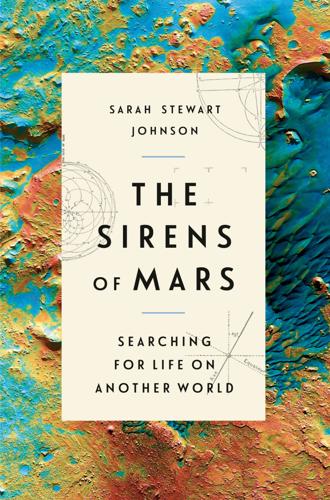
The Sirens of Mars: Searching for Life on Another World
by
Sarah Stewart Johnson
Published 6 Jul 2020
The payload was prematurely cut loose, and Mariner 8 fell through the dark sky. It splashed into the sea and continued falling, all the way down to the bottom of the ocean. The next day, the Soviet mission Kosmos 419 launched, but the upper stage of its rocket also had trouble, failing to fire the second time, marooning the spacecraft in low Earth orbit for two days before reentering the Earth’s atmosphere. It turned out that an eight-digit code to fire the engine had accidentally been issued in reverse by a human operator; embarrassing, but easy to fix. Over the next couple of weeks, the Soviet missions Mars 2 and Mars 3 soared into space on Proton rockets.
…
MOLA was originally proposed in the 1980s as part of a NASA mission called Mars Observer. That spacecraft was meant to be the first in a line of “planetary observers,” orbiters based on commercial communications satellites that NASA could buy on a fixed contract. The plan was to use the space shuttle, which was already ferrying astronauts to low Earth orbit, to launch the orbiter. The Mars Observer mission was a big break for Maria, fresh off her PhD, her first chance to work on a spacecraft heading to Mars. She had grown up amidst the coalfields of Carbon County, Pennsylvania, a place where prosperity and economic opportunity had dried up with the decline of coal mining.
…
She had initially thought about a career as an astronaut, going so far as to submit an application before quickly withdrawing it. She’d wanted to have children and couldn’t quite fathom leaving them behind, particularly in the wake of the Challenger accident. But she soon discovered that there were many ways to explore and that probes built by human hands could take her farther than a space station in low Earth orbit ever could. Spacecraft could open up possibilities far beyond human reach, throwing light onto far-distant worlds. At the same time, she knew that the field was one of high risk and high reward—that no one sets off for the frontier with any reasonable feeling of certainty, and that space exploration lives and dies on the knife-edge of technology.
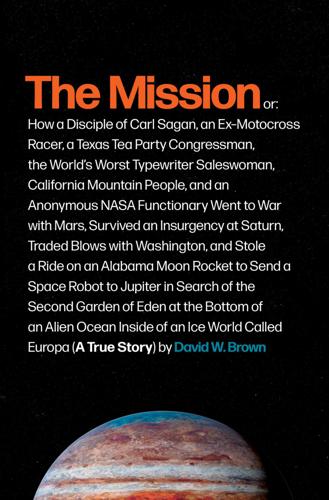
The Mission: A True Story
by
David W. Brown
Published 26 Jan 2021
Under protest, she made what she knew was just a terrible deal, but the best that she would ever likely get: She would give Congress the Orion crew vehicle and the Ares V heavy-lift rocket.397 In exchange, the administration would get money for general technology development, the James Webb Space Telescope, and a robust “commercial crew” program—that is: the private sector would one day take over all launches to low Earth orbit. The smaller Ares I rocket was dead, and we were not going back to the moon. (We couldn’t afford a lander!) The White House and Congress were thus agreed. And then the Senate went to Crazytown, dictating in the NASA Authorization Act of 2010 a litany of rocket requirements so specific that you’d think the entire chamber had completed coursework on propulsion engineering.398 They wanted a rocket capable of lifting seventy to one hundred tons of mass into low Earth orbit, and one hundred thirty tons when married to an integrated upper stage.
…
He also had ideas that were pretty radical at the time about where NASA needed to be, and Lori bought hard into them. Goldin was a visionary, wanted to turn the keys to the space shuttle over to the private sector and, once the International Space Station was space-borne, wanted to hand it off to industry.375 NASA had built the infrastructure of low Earth orbit. Its work was done. It was up to businesspeople to take it from here, because NASA’s mission was to go farther, always: to Mars and beyond. So Lori added commercial space to her portfolio, soon scoring a real coup when Fisk Johnson of S. C. Johnson & Son (the multinational conglomerate behind Drano, Ziploc, Raid, and Toilet Duck) sought to use a NASA-developed bioreactor to fight liver disease from space.376 That wasn’t her only encounter with space biology.
…
Given the launch date (2016), the launch capability (seventy metric tons), the budget (flat), and the requirement to reuse as much of the space shuttle and Ares I “to the extent practicable” (a glorious term of art!), design the best rocket you can.406 It must be affordable. It must be safe. When you build a rocket from scratch, step one is to know your destination.407 Low Earth orbit versus, say, the moon, requires different rocket sizes entirely. Pickup truck versus big rig. Mars? Even bigger. SLS didn’t have a destination—the idea was flexibility. But the ambiguity didn’t help. The space shuttle taught NASA that . . . you didn’t want to build a shuttle. An in-line vehicle—that single spartan tower, with maybe some boosters on the side for extra get up and go—was just safer (von Braun figured this out in the sixties) and made more sense aerodynamically.

Augmented: Life in the Smart Lane
by
Brett King
Published 5 May 2016
On 4th October 1957, the USSR launched a sphere with a diameter of 58 centimetres into an elliptical low earth orbit. It was called Sputnik (official designation “Sputnik-1”). Sputnik is a Russian word used to describe “satellites” (спутниковое or Sputnikovoye) but it can also be literally translated as “fellow traveller”. In 1955, US president Dwight D. Eisenhower had announced the intention of the United States to launch an artificial satellite, but the Soviet Union caught the West completely off guard when Sputnik launched in 1957, sparking a rush of analysis and concerns. Following the launch of Sputnik, the race for low earth orbit and the moon was on. The first man in space—Yuri Gagarin—almost didn’t make it back to earth.
…
Elon Musk’s SpaceX had already sent landers to Hellas Planitia and rovers that were beaming back pictures of Olympus Mons. The race was on between whether Musk or NASA was going to get there first, with China being the outlier in the race. SpaceX had a contentious relationship with NASA. They played well together when it came to low-earth orbit (LEO), but when it came to Mars, Musk was just in too much of a hurry for the engineers at NASA, having staked his legacy on making Mars colonisation affordable for the average earthling. While SpaceX had succeeded thus far, NASA was betting that the commercial organisation was going to have some major setbacks due to the risks inherent in SpaceX adopting an accelerated programme.
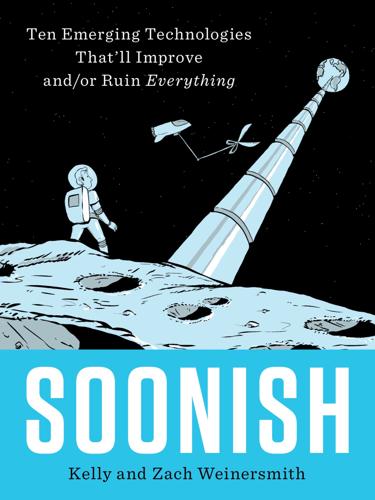
Soonish: Ten Emerging Technologies That'll Improve And/or Ruin Everything
by
Kelly Weinersmith
and
Zach Weinersmith
Published 16 Oct 2017
If we could dramatically reduce the cost, we would have better space science, better communication systems, access to off-planet resources, better ability to control our climate, and best of all, the solar system would open up for exploration and settlement. To understand why it’s currently so expensive to get stuff up to space, you need to understand what you’re looking at when you see a rocket. A rocket is essentially a tube of explosive propellant with a liiiittle bit of cargo on top. For a typical mission going to Low Earth Orbit (LEO; about 300 miles high, and where most launches go), by mass you’re looking at 80% fuel, 16% the rocket itself, and 4% cargo (4% is actually on the high end, and if you’re going farther out, it gets closer to 1 or 2%). But when you look at cost, things are inverted. The propellant is a negligible component of price—it’s gonna run you a mere few hundred thousand dollars.
…
Most likely, we will also have base stations along the way up. These can serve as fuel and maintenance depots, as well as launch points for satellites and spacecraft. One of the best features of this design is that you can reach different altitudes just by climbing up and down the cable. Once you reach 300 miles up, you’re in Low Earth Orbit, like most satellites. Go a lot higher and you get to geostationary orbit, which is great for communications satellites, but right now costs a fortune to reach. Beyond that, you get to where Earth has very little gravitational pull. So you’re like a rock at the tip of a sling. If you want to get fired into space, just hop out of the station.
…
Craig Venter Institute, 214–15 Jell-O, 298 Jell-O shots, 161 jet fuel, 209–10, 218 Jin, Yaochu, 122 joinery, 143–44 Joint BioEnergy Institute, 210 Joint European Torus (JET), 89 Josephson, Brian, 5–6 Josephson junction, 6 Jurassic Park (film), 222 Kazakhstan, 100 Keasling, Jay, 199 Keating, Steven, 146–48, 153, 155, 253 Kennedy, Philip, 315–17 Kevlar, 35 Khoshnevis, Behrokh, 145, 146, 147, 158 kidneys (organ), 280 Kilobot project, 115, 119 Kohler, Matthias, 152 Kurman, Melba, 159 Lake Chagan, 100 lasers, 2, 27–29, 84, 86–87 Law of the Sea, 33 leukemia, 238, 239, 242 Leuthardt, Eric, 303, 314–15 Levin, Gilbert, 334 levitation, 326–27 LiDAR, 174 life insurance, 250 LIFT (laser-induced forward transfer), 265–66 Limited Test Ban Treaty (LTBT), 99 Lipschultz, Bruce, 91–92, 93 Lipson, Hod, 159 Lipton, Jeffrey, 162 liquid hydrogen, 39 liquid oxygen, 20, 39 lithium, 77 LIT ROOM, 110–11 livers (organs), 257–59, 260–61, 280 lizards, 187 locked-in syndrome, 316 Lockheed Martin, 90 lossless power transmission, 325 Low Earth Orbit (LEO), 14, 15–16, 21, 34, 38 Lowther, William, 50 lung cancer, 238–40 lungs (organ), 261 Lyme disease, 255 lymphoma, 242 McAlpine, Michael, 271 McCracken, Garry, 77 Magee, John Gillespie, Jr., 13 “magic book,” 176 MagLIF (Magnetized Liner Inertial Fusion) project, 87–88 “magnetic confinement”-type reactors, 85 magnetic levitation (MagLev) trains, 24–25, 30, 327 magnetosphere, 59 magnets, 5 MakerBot, 162 malaria, 198–203, 207 mammoth genome, 222–24 Mankins, John, 320 marble, 144 marching bands, 119–20 Mars, 19, 40, 45n, 52, 55, 158–59 Mars One project, 45n Masiello, Carrie, 210–11 Massachusetts General Hospital, 242 Massachusetts Institute of Technology (MIT), 102, 103, 104, 106, 107n, 108, 214, 216 Mediated Matter lab at, 146 Plasma Science and Fusion Center at, 91 matching markets, 275–81 Matthews, Kirstin, 250 Maus, Marcela, 242–43 Max Planck Institute for Infection Biology, 212 µBiome, 2 M-blocks, 118 MD Anderson Cancer Center, 232, 234 Mediated Matter lab, 146 medical tourism, 272 medical trials, 254–55, 268–69 medicine, 221 augmented reality in, 179, 185–86 bioprinting and, see bioprinting origami robots in, 106–7 programmable matter in, 127–28 synthetic biology in, 198–207 see also precision medicine Meetup.com, 175, 179 MEG (magnetoencephalography), 289–90, 291 Meissner effect, 326 meltdown, 91–92 memory, 220, 304, 307–8, 311 Mendelsohn, John, 232, 234 Meng, Yan, 122 Menges, Achim, 104 Menon, Sandeep, 235 messenger RNA, 193 metabolome, 244–46 meteorites, 53, 67 Michigan Array, 296, 298 microRNA, 239–40, 246–47 Microsoft, 272 Miller, Jordan, 261, 269, 270–71, 274 miniaturization, 176 “Minibuilders,” 151–52 miRBase, 240 mirror humans, 332–35 MIT Technology Review, 6n molds, configurable, 134 molecular scissors, 212, 213–14 molecules, mirror, 334 monogenic traits, 196–97 mononucleosis, 230 moon, 55 moon landing, 19 moral hazard, 273–74 Moravec’s Paradox, 139 mosquitoes, 200, 203, 218 Mossad, 50 motion sickness, 168 movies, 183 MRI (magnetic resonance imaging), 290–91 M-type (metal) asteroids, 53, 54 mucociliary escalator, 187–88 mucus, 236 Mukhopadhyay, Aindrila, 210 multiverse, 329 Munger, Steven, 334–35 Musk, Elon, 19 mutation breeding, 191–92 mutations, 219, 236–37 Mycoplasma genitalium, 214–15 Mycoplasma laboratorium, 215 Mycoplasma mycoides, 215n Nagasaki bombing, 98 nano-bio-machines, 3 nanobots, 118 nanotechnology, 221 NASA Innovative Advanced Concepts (NIAC), 25, 31, 35 nasal cycle, 186–89 nasal venous sinusoids, 188 NASA (National Aeronautics and Space Administration), 20, 47, 60, 65, 92, 158, 159–60 National Academy of Sciences, 203 National Cancer Institute, 238 National Defence Department, Canada, 47 National Ignition Facility (NIF), 86–87 National Institutes of Health, 214, 234, 235 Native Americans, 196n natural gas, 73, 98–99 Nebraska, University of, 176 Neufert, Ernst, 135 neural dust, 299 neural implants, 310 Neurobridge, 312 neuro-cyber-connection, 312–13 neurons, 286–87, 290, 298, 306 EEGs and, 287–90 NeuroPace, 302 neuroprosthetics, 311, 315, 322, 324 neurotrophic electrodes, 297–98, 315, 316 Neutron Club, 80 neutron gun, 80–81 neutrons, 73, 91 New Jersey, 299 New Mexico, 96 nickel, 54 Nocera, Dan, 208 North Carolina State University, 63 Norway, 22n nostrils, 186–89 Nuclear Explosions for the National Economy, 100 nuclear reactors, 58 Nucleon (concept car design), 97 nucleus, 192, 193 nutrition, 245–46 Olestra, 334 Oliver, John, 326n Open Humans Foundation, 252n “optical mining,” 63 orbiting factory, 24 organ donation, 257n organ markets, 274, 275–81 Organovo, 268 organ rejections, 275 organ sales, 258, 280–81 organ transplant list, 257–58, 272 organ transplants, 206–7 origami robots, 105–8, 129 OSIRIS-REx, 65 “Our Friend the Atom” (Disney cartoon), 97 Outer Space Treaty (1967), 63–64 oxidizer, 20 Oxman, Neri, 146, 148 oxygen, 208–9 oxygen deprivation, 205 oxygen gas, 82 Pacific Ocean, 35–36 Paddon, Chris, 199 Palo Alto Research Center, 116 Panama Canal, 97 pancreas, 236 parallel universe, 329 paralysis, 312 Parkinson’s disease, 301 patenting, 124 patent law, 272 peacekeepers, 181 Pennsylvania, University of, 108 Personal Genome Project, 252–53 personal security, 124–25 PERVs, 207 pesticides, 200 Petersen, Kirstin, 149, 150–51 Pfizer, 235 phobias, 179 Phobos (moon of Mars), 55 phosphenes, 306 photosynthesis, 208 Picon, Antoine, 138 pigs, 206 Piraha (Amazonian tribe), 140n Pitt, Brad, 167 Plait, Phil, 36, 38 plants, 125 Chinese sweet wormwood, 198–99 plasma, 85, 88 Plasma Science and Fusion Center, 91 platinum, 52, 55 pluripotent stem cells, 273 plutonium, 58 pogo sticks, 27 Pokémon GO, 8n, 166, 182–83 pollution, 94 porcine endogenous retroviruses (PERVs), 207 positive transcriptional autoregulation, 205n potassium iodide pills, 60 poverty, 157 precision medicine, 229–56 benefits of, 254–56 cancer diagnosis, treatment, and monitoring in, 238–44 concerns about, 248–53 data collection in, 234–35 genetic disorders and, 235–37 metabolome and, 244–46 privacy issues in, 248, 250–53 Precision Medicine Initiative Cohort Program, 234 predictive ability, 1–2 Princeton University, 142, 271 privacy issues, 130, 182, 248 of AR, 180–81 in brain-computer interfaces, 309–10 in precision medicine, 248, 250–53 programmable matter, 101–32 benefits of, 125–29 computers as, 101 concerns about, 122–25 in everyday life, 105 hacking of, 122–23 military applications of, 123–24 origami robots as, 105–8 power for, 118 reconfigurable houses and, 109–11 see also robots programmed materials, 103–5 Project Babylon, 48–49 Project Esper, 185 Project HARP (High Altitude Research Project), 47, 48 Project Plowshare, 96–100 Project Rulison, 98 Promobot, 129 Promobot IR77, 129 propellants, 14–15, 18, 20, 23 prostate cancers, 239n, 247 prosthetics, advanced, 322–24 proteins, 193, 194, 195, 221, 234, 239, 332 protium, 73 protons, 73, 77 Pryor, Richard, 328n QR code, 169–71 quantum computing, 328–30 quantum mechanics, 329, 330 Quinn, Roger, 151n radiation, 59–60, 62, 99 radiation therapy, 241 radioactive waste, 91 railgun, electromagnetic, 24–25 ramjet, 21, 22, 26 Reaction Engines, 22 Recognizer, 180 Reconfigurable House exhibit, 111 recycled fecal matter, 160 recycling, 128 Reece, Andrew, 247 refining, 56 refrigeration, 4 “Registry of Standard Biology Parts,” 216 Reichert, Steffen, 104 Reiss, Louise and Eric, 99 RepRap, 269–70 “repugnance,” in markets, 276 reuse, 128 ribosome, 193–94, 195 Rice University, 200n, 210, 250, 261 rigid airship, 29–30 Ringeisen, Bradley, 259 RNA, 193–94, 195, 332 RNS System, 302 Robinette, Paul, 130 Robot Baby Project, 120n robotic construction, 134–63 benefits of, 156–59 concerns about, 153–56 and space travel, 158–59 swarm robots in, 149–53 3D printing for, 144–49 robots, 102, 129–32 autonomous, 113–16 as construction workers, 139–44 coordinating movement of many, 119–22 evolving of, 120–22 generalization in, 142 industrial, 136 in medicine, 127–28 modular, 112–16 neuroprosthetics and, 311 origami, 105–8, 129 termite-inspired, 150–51 see also programmable matter rocket launches, 3 rockets, 23, 39 air-breathing, 19–24 aircraft-launched, 29–30 cost of, 14 laser ignition for, 27–29 propellant for, 14–15, 18, 20, 23 reusable, 14, 15, 18–19, 39 simplicity of, 22 stages of, 18n rocket sled, 25, 26 rockoon, 29 rod from God, 38 roller coaster, 23, 42 Romanishin, John, 118 Roombots, 112–13, 121, 127 Roth, Alvin, 276, 277, 279, 280 “Ruby Red” grapefruit, 192 Rus, Daniela, 106–7, 108, 118, 128 Russia, 67, 99, 217n SABRE (Synergetic Air-Breathing Rocket Engine), 22 Saddest Generation, 166 Safe Is Not an Option: Overcoming the Futile Obsession with Getting Everyone Back Alive That Is Killing Our Expansion into Space (Simberg), 44 Sahara Desert, 321 SAM (robot), 141, 142, 153–54 Sandia Labs, 85, 87 San Francisco, Calif., 154 sanitation, 157 satellites, 20, 34, 41, 47 Schalk, Gerwin, 313 Schall, Gerhard, 177 Schrödinger’s cat, 329 Schrödinger’s Killer App (Dowling), 330n Schwenk, Kurt, 187 See No Evil, Hear No Evil (film), 328n seizures, 300, 301, 302 Select Sires, Incorporated, 197n self-driving cars, 123 Sensorama, 168 Shapiro, Beth, 222, 223–24 Shotwell, Gwynne, 19 Shtetl-Optimized (blog), 330n Siberia, 224 sickle cell amenia, 237 Silberg, Joff, 210–11, 218–19 silicon, 52, 54 Silver, Pamela, 204, 205–6, 208–10, 219 Simberg, Rand, 44 Skylon, 22 Skype, 314 Skywalker, Luke (char.), 324 Slingatron, 25–26 slums, 157 smallpox, 216, 217 Smart Helmet, 179 “smart homes,” 111 smartphones, 169 smell, sense of, 174–75, 186–89, 334 Smith, Noah, 153n, 154 snakes, 187 social media, 248, 250 privacy issues of, 180–81 software, 102, 104–5, 124 hacking of, 122 solar flares, 60 solar panels, 58 cost of, 320 solar photovoltaic cells, 92, 208 solar power, space-based, 319–21 solar wind, 37 Solid Freeform Fabrication Symposium, 162 solid rocket boosters, 39 solid tumors, 238, 240–41 Solomon, Scott, 200n sound, speed of, 21 South Africa, 48 Southern California, University of, 145, 308 Soviet Union, 38, 58, 99, 100, 135 space cannon, 23–26 space debris, 39–40 space elevators, 31–38, 39, 41, 42–43, 314, 320 spaceflight, 13–50 air-breathing rockets and spaceplanes for, 19–24 benefits of, 41–45 concerns about, 38–40 cost of, 41, 44–45 present cost of, 13–14 reusable rockets for, 18–19 space elevators and tethers for, 31–38 starting at high altitude, 29–30 spaceplanes, 19–24, 39 space settlements, 40 Space Shuttle, U.S., 18, 39 space tethers, 31–38 space tourism, 42 space travel: fusion energy in, 94 supergun for, 23–26 SpaceX, 8n, 18–19, 30 spatial resolution, 288, 289, 292–93 spearmint, 334 spinal damage, 312 Sputnik, 39 SR-71 spy plane, 21 Starbucks, 180 Star Trek franchise, 34, 86 Star Wars franchise, 78n, 82, 263 steam turbine, 76 stem cells, 263, 272–73 Stevens Institute of Technology, 92, 122 STL-file, 267 storytelling, 178 stratospheric spaceport, 29–30 straw, reconfigurable, 103–4 stress, 246 stroke, 247 strong nuclear force, 77 strontium-90 (Sr-90), 99 Stuttgart, University of, 104, 143 S-type (stony) asteroids, 53, 54 sugar molecules, 210 sugar sintering, 270–71 sun, 59, 78 Sung, Cynthia, 108, 119, 127 superconducting levitation, 326–27 superconducting quantum interference device (SQUID), 4, 6, 290 superconductors, 4–6 room-temperature, 325–28 supergun, 46–50 supersonic ramjet (“scramjet”), 21–22, 26, 126 Sure Shot Cattle Company, 197n surgery, 185–86 Surrey, University of, 122 swarm bots, 119–20, 121–22 SWARMORPH project, 113–15 swarm robots, 149–53 switchgrass, 209–10 Switzerland, 22n SYMBRION, 115 Syn 3.0, 215 synthetic biology, 190–225 benefits of, 220–21 concerns about, 216–19 environmental monitoring by, 210–12 fuel production by, 208–10 generalizing of, 212–14 grassroots approach to, 216 “Synthetic Biology for Recycling Human Waste into Food, Nutraceuticals, and Materials: Closing the Loop for Long-Term Space Travel” project, 160 synthetic materials, 101–2 syphilis, 230n Syria, 156 Systems & Materials Research Consultancy, 159 T cells, 242–43 technology, 3–4 asteroid-moving, 67 contingent nature of development of, 3–7 discontinuous leaps in, 2 Telegraph, 183 Teller, Edward, 98 temporal resolution, 288, 292–93 Terminator (film), 103 termites, 120, 149, 150–51 terrorism, 36, 38, 217 Tethers Unlimited, 63 tetracycline, 200 theft, 130 3D printers, 144–49, 151–52, 259 prosthetics and, 322 3D printing, 125, 152 of food, 159–63 of organs, see bioprinting software for, 267 3554 Amun, 53 Throw Trucks with Your Mind (game), 312 thyroid, 60 Tibbits, Skylar, 103–5, 118, 123, 126 titanium, 35 “tokamak” configuration, 88, 92 tornados, 25 touch, sense of, 175 Tourette’s syndrome, 301 transcranial magnetic stimulation, 302, 304 transfer RNA, 193–94, 195 Transformers series, 102 The Tree of Life (Web site), 234n tritium, 74, 77n, 91 tumor cells, 205 tumors, 290 “Tunable Protein Piston That Breaks Membranes to Release Encapsulated Cargo, A” (Silver, et al.), 206 “Tunguska event” (1908), 67 turbofan engine, 20–21, 22 Turner, Ron, 35, 36, 37 23andMe, 251, 252 Twitter, 20n, 187, 250 Two and a Half Men (TV show), 310 Type II superconductors, 326 Umbrellium (Haque Design + Research), 111 Underground Railroad, 178 UN-Habitat, 157 Unilateral Forced Nostril Breathing (UFNB), 189 United Nations, 96 United States, 39, 135–36 Universal Semen Sales, Inc., 197n uranium, 58 U.S.
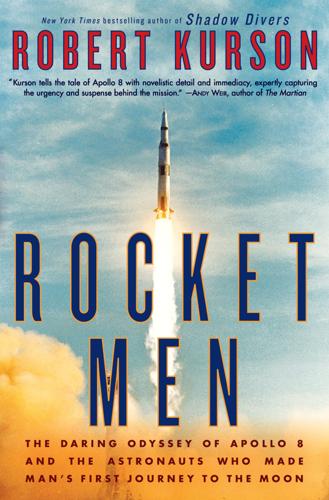
Rocket Men: The Daring Odyssey of Apollo 8 and the Astronauts Who Made Man's First Journey to the Moon
by
Robert Kurson
Published 2 Apr 2018
For months, this is how the test schedule stood: FLIGHT OBJECTIVE LOCATION ESTIMATED DATE Apollo 7 Test Command and Service Modules Low Earth orbit September/October 1968 Apollo 8 Test Command, Service, and Lunar Modules Low Earth orbit December 1968 Apollo 9 Test Command, Service, and Lunar Modules High Earth orbit February 1969 Apollo 10 Test Command, Service, and Lunar Modules Lunar orbit Mid-1969 Apollo 11 Lunar landing Lunar surface Late 1969 Apollo 1 had ended in a fatal fire in early 1967.
…
A lot has to come together. And Apollo 7 has to be perfect. But if it happens, Frank, do you want to go to the Moon?” The idea startled Borman. Apollo 8 was meant to fly in December, just four months from now, but certainly not to the Moon. Apollo 8 was a conservative mission designed for low Earth orbit, perhaps at 125 miles altitude. It was one of several essential steps leading up to a manned lunar landing, hopefully before the end of 1969. Everything went in steps at NASA. Everything. But Slayton meant exactly what he said. He wanted Borman to change missions and fly to the Moon. At a distance of 240,000 miles.
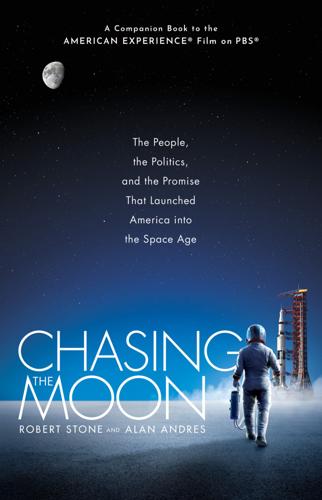
Chasing the Moon: The People, the Politics, and the Promise That Launched America Into the Space Age
by
Robert Stone
and
Alan Andres
Published 3 Jun 2019
When Kennedy addressed Congress, the suborbital flight of the only American to venture into space had been less than fifteen minutes. But by July 1969, as America readied to launch Apollo 11 from the space center bearing the name of the late president, the Soviet space threat had receded. This would be the twenty-first piloted NASA space mission; in comparison, the Russian total was twelve, and all had remained in low earth orbit. Now the richest nation on Earth was about to undertake a daring technological feat of unprecedented magnitude, a demonstration of national will framed as a world media event. It was a story of courage, adventure, and scientific exploration as well as an exercise in geopolitics. If not for the persuasive influence of a select group of visionaries, this moment in history would have been inconceivable.
…
Built from existing component parts, the huge rocket’s first stage was composed of a cluster of eight individual cylindrical Redstone rocket-size fuel tanks—each eighty feet high and five feet in diameter—surrounding a single, slightly larger Jupiter rocket tank. Five of the tanks, including the Jupiter tank in the center, carried liquid oxygen; the remaining four carried kerosene. Together, the Saturn’s six engines would produce 1.5 million pounds of thrust, enough to place a payload of ten thousand to forty thousand pounds into low earth orbit. While the Department of Defense and the Advanced Research Projects Agency had been planning large reconnaissance satellites, von Braun was thinking of other possible uses. He knew that if he could obtain funding to produce a small yet very powerful heavy-lifting booster and demonstrate its ability, the decision makers in Washington were more likely to approve the design of the next, slightly larger model.
…
NASA had previously undertaken a long-term study of a moon landing as a thought experiment, but the details of how to accomplish Project Apollo—as it had been named in mid-1960—were still very much up for debate. A decade earlier, in his Collier’s article, Wernher von Braun had proposed a landing on the Moon using multiple large vehicles assembled near a revolving space station in low earth orbit. A few years later he proposed launching men from the Earth to the Moon in a single gigantic rocket. After jettisoning the large stages that boosted it into space, a single piloted vehicle would then proceed to the lunar surface and subsequently return to Earth, much like the British Interplanetary Society’s moon-ship scenario of 1939.
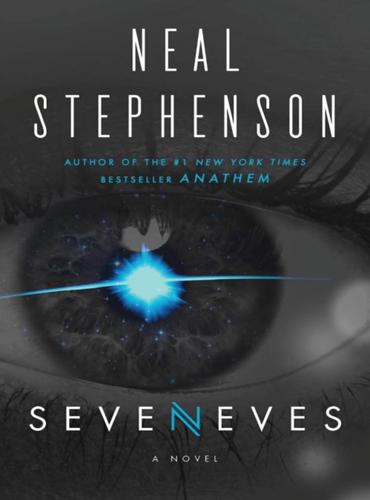
Seveneves
by
Neal Stephenson
Published 19 May 2015
“The wrong one, as far as Sean is concerned. Izzy’s orbit is angled with respect to the equator. It has to be that way so Baikonur can launch to it—Baikonur is as far north as Seattle. But when you are doing interplanetary stuff, which is what Sean has in mind—basically, whenever you want to get out of low Earth orbit—you want to be in an orbit that’s closer to the equator. Because that’s pretty much where the rest of the solar system is—including the big chunk of ice that Sean wants to grab and bring back here.” “Ymir,” Luisa said, pronouncing it as she’d heard Sean do: ee-meer. A word from Norse mythology referring to primordial ice giants.
…
“Man, I haven’t thought about those guys in ages.” IT WAS STRANGE THAT A STORY AS EPIC AND AS DRAMATIC AS THE voyage of Ymir could go forgotten, but those were the times they lived in. The ship had stopped communicating and then disappeared against the backdrop of the sun about a month after its departure from low Earth orbit (LEO) around Day 126. A few sightings on optical telescopes had confirmed that it had transitioned into a heliocentric orbit, which might have happened accidentally or as the planned result of a controlled burn. Assuming it was following its original plan, Ymir should then have made almost two full loops around the sun.
…
“Yeah, unless—” “Unless what?” “Unless he just wants to hang out at L1. That would be a hell of a lot safer. I don’t think any moon shards are going to make it out that far.” Doob reread the message. “You’re right,” he said. “All he says is that they’re thrusting. Nothing about transferring back to low Earth orbit. Then he asks for a situation report.” He put his hands over his face and rubbed it. “I’m fading,” he announced. “I should be Skyping my family right now.” “Get outta here,” Dinah said. “I can work on the report. And I can encrypt it, now that you showed me how it works.” Doob pushed off and drifted to the exit, then caught himself and turned back.
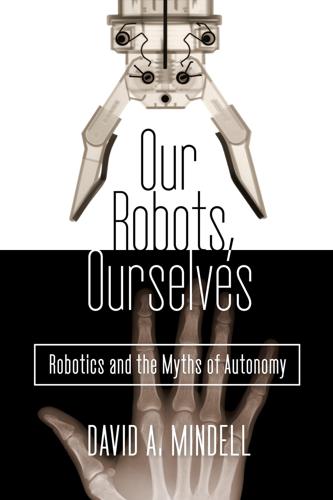
Our Robots, Ourselves: Robotics and the Myths of Autonomy
by
David A. Mindell
Published 12 Oct 2015
As justification, O’Keefe cited the risks: because Hubble sat in an unusually high inclination, astronauts could not access the space station as a “safe haven” if they had a Columbia-like problem that would preclude safe reentry. But O’Keefe’s decision came just two days after President George W. Bush announced his new “Vision for Space Exploration” to focus on a return to the moon. Low earth orbit was out of favor; space observers saw the Hubble as the first “victim” of the new Bush policy. Advocates went to work persuading NASA and Congress to reverse the decision. In the meantime experts at NASA’s Goddard Space Flight Center began designing a mission to do the final Hubble upgrades as an unmanned robotic mission.
…
My goal here is not to argue for or against human spaceflight, the justifications for which have always been, and will continue to be, primarily about engineering demonstrations, national prestige, and international competition more than any cognitive or motor task advantages. Rather, spaceflight offers a dramatic and salient example of the relationships among space, time, task complexity, robotics, and human experience. In low earth orbit, with relatively low latencies, telerobotic systems can accomplish a great deal through direct manipulation. On the moon, with only slightly longer delays, teleoperation offers great potential not yet explored by NASA. Mars, with its much longer delays, requires distributing human action and agency across time, through both work practices and technologies like autonomy, and creating new ways of working.
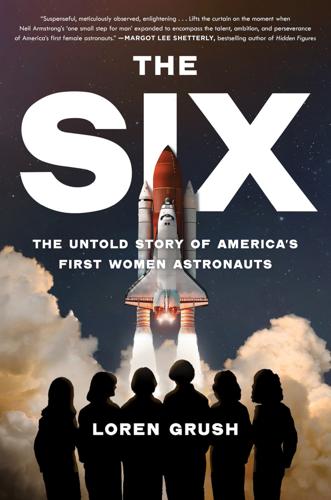
The Six: The Untold Story of America's First Women Astronauts
by
Loren Grush
Published 11 Sep 2023
After America won the Space Race, Congress’s mood had turned frugal. So, in 1972, with their instructions in hand, NASA officials got to work on the design of this human-operated shuttle. In essence, NASA envisioned the Space Shuttle to be America’s most sophisticated truck—a space taxi that would conduct routine trips to and from low Earth orbit with the regularity of a semi that transported shipments and cargo across the country. And just like a truck, the Space Shuttle would be open for business, capable of carrying all sorts of payloads to orbit for a host of customers. NASA’s message to the country—and the world—was clear: If you need something to get to space, the Space Shuttle can get it there for you—even carry satellites to orbit (despite the fact that rockets without people on board had been getting satellites into space just fine for more than a decade).
…
But soon, that “star” grew steadily bigger and brighter until the full cylinder was in view, slowly rotating in front of them. Before the flight, Rick had made the call that he was going to get pretty close to these adrift satellites. He parked Discovery just thirty-five feet from Palapa, a mere hair’s breadth in the expanse of low Earth orbit. The idea was to cut the distance the spacewalkers would have to travel to reach the satellites. With only so much gas in their jetpacks, the astronauts had just seven hours to wrangle each spacecraft and stow it in the cargo bay. Past that point, their oxygen and other critical supplies would get close to depletion.
…
During her time giving speeches as America’s first woman in space, though, she realized it was children she loved speaking with the most—and she also thought they asked the best questions. Sally organized outreach for two major projects, EarthKAM and MoonKAM, which give children an opportunity to take pictures from cameras in low Earth orbit and in orbit around the moon. But by far her biggest passion was building a company she created with Tam called Sally Ride Science, a nonprofit associated with UC San Diego. The program focuses on using space as a way to inspire young children, notably girls, to pursue careers in science and math.
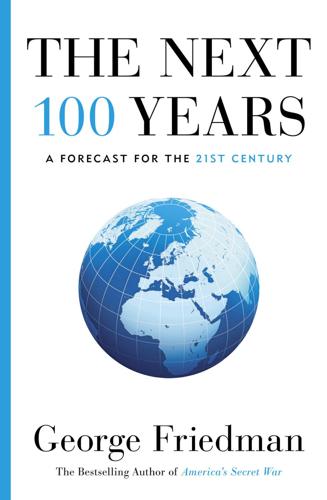
The Next 100 Years: A Forecast for the 21st Century
by
George Friedman
Published 30 Jul 2008
Like the Titanic, it will be billed as unsinkable. The Japanese will consider the problem of how to take out a Battle Star as early as the 2030s. They will develop a robust space program after 2020, substantially ahead of the Turks, whose attention will be focused on events closer to their border. Both will develop low earth-orbit reconnaissance satellites and geostationary communications systems, but the Japanese will be looking into the commercial uses of space as well and will be particularly interested in energy generation in space. Hungry for energy at a rate that new nuclear reactors would find difficult to keep up with, the Japanese will have been investing for a generation in all varieties of alternative energy, including space-based systems.
…
The resulting obsessive fear of the unexpected, combined with an obsessive focus on space, means that enormous amounts of both military and commercial money will be spent on space. The United States is therefore going to construct a massive amount of infrastructure in space, ranging from satellites in low earth orbit to manned space stations in geostationary orbit, to installations on the moon and satellites orbiting the moon. Many of these systems will be robotically maintained, or will be robots themselves. The disparate advances in robotics in the previous half century will now come together—in space. One key development is that there will now be a steady deployment of troops in space.
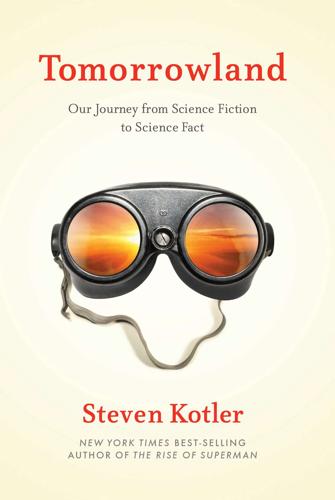
Tomorrowland: Our Journey From Science Fiction to Science Fact
by
Steven Kotler
Published 11 May 2015
The Spirit of America, his vehicle, was pretty much a miniature Saturn V — 40 feet long, 8 feet wide, 6 feet high, and powered by a turbojet engine that burned, well, rocket fuel. During those long days in the desert, I spent a lot of time talking to aerospace engineers. They all made one thing clear: Driving a car through the sound barrier was a lot harder than sending a rocket ship into low-earth orbit. In fact, when I asked Breedlove’s crew chief, former Air Force pilot turned aerospace engineer Dezso Molnar — who we’ll meet again later as the inventor of the world’s first flying motorcycle — what he was going to work on when all this was over, he said, “I want to do something easy, something relaxing.
…
This original XPRIZE was a demonstration project, both proof that a private company could produce an affordable, reusable spaceship and the necessary first step in opening the space frontier. The idea behind SpaceShipTwo is the next step: tourism — taking paying customers on suborbital cruises. This is why Baumgartner’s jump is critical. We’re going to space. That’s what’s next. Within a few years, human beings will be routinely visiting low-Earth orbit. In fact, Bigelow Aerospace, another private space company, is now developing an inflatable space hotel that’s scheduled for 2017 deployment. With these developments around the corner, having basic space evacuation procedures in place — including a supersonic-capable space suit — just seems to make sense.
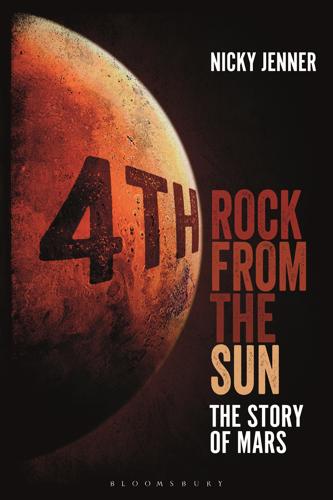
4th Rock From the Sun: The Story of Mars
by
Nicky Jenner
Published 5 Apr 2017
Although that specific claim is likely to have more than a hint of clickbait about it, NASA has certainly used the publicity from The Martian very effectively, even coordinating their scientific press releases with big release dates and movie deadlines, and releasing web articles and interactive tools that plot Watney’s fictional journey across the surface of Mars. In an article for Astronomy magazine, one of the scientific consultants on the film, NASA’s Jim Green, claimed this to be a concerted effort to reach ‘“the Mars generation” – millennials who’ve never seen humans leave low Earth orbit’. ‘Hopefully the message in a movie like The Martian is one that really galvanises participation in stuff like [space exploration] and makes people excited about science,’ said Matt Damon in a press interview for The Martian. ‘I mean the writer of the movie, when I first met with him, he said, “I see this as a love letter to science, that’s really what I want to make”.
…
There may be even greater issues here that we’re currently unaware of; there are warning signs that astronauts who travel to deep space may have a far greater risk of developing cardiovascular diseases and complications. A 2016 study found that 43 per cent of deceased Apollo astronauts died from a cardiovascular problem – a percentage ‘four to five times higher than non-flight astronauts and astronauts who have [only] travelled in low Earth orbit’. Brain and cognition The brain appears to work slightly differently in space. Basic tasks like coordination, critical thinking and attention span appear to be impaired and slightly slowed. This could possibly be due to a curtailed blood flow caused by microgravity, but we’re unsure. Vision Space may be beautiful, but it’s certainly not easy on the eye.
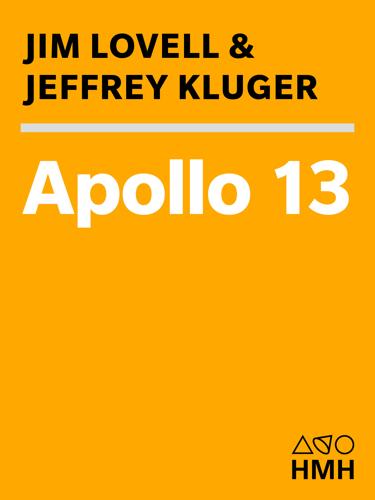
Apollo 13
by
Jim Lovell
and
Jeffrey Kluger
Published 14 Jun 2000
Accordingly, chastened Agency brass began making it clear, publicly and privately, that while America was still aiming for the moon before the end of the decade, the breathless gallop of the past few years would now be replaced by a nice, safe lope. According to the tentative flight schedule, the first manned Apollo flight would be Schirra’s Apollo 7, intended to be nothing more than a shakedown cruise of the still-suspect command module in low Earth orbit. Next would come Apollo 8, during which Jim McDivitt, Dave Scott, and Rusty Schweickart would go back into near-Earth space to test-drive both the command module and the lunar excursion module, or LEM, the ugly, buggy, leggy lander that would carry astronauts down to the surface of the moon. Next, Frank Borman, Jim Lovell, and Bill Anders would pilot Apollo 9 on a similar two-craft mission, this time taking the ships to a vertiginous altitude of 4,000 miles, in order to practice the hair-raising, high-speed reentry techniques that would be necessary for a safe return from the moon.
…
Even more disturbing, the Titan had a huge range of ballistic trajectories programmed into its guidance computer, which aimed the missile below the horizon if it was headed for a military target or above the horizon if it was headed for space. As the rocket rose, the computer would continually hunt for just the right orientation, causing the missile to wiggle its nose up and down and left to right, bloodhound-fashion, sniffing for a target that might be Moscow, might be Minsk, or might be low Earth orbit, depending upon whether it was carrying warheads or spacemen on that particular mission. The Saturn 5 was said to be a different beast. Despite the fact that the rocket produced a staggering 7.5 million pounds of thrust—nearly nineteen times more than the Titan—the designers promised that this would be a far smoother booster.
…
Lovell watched the ceremony on his little TV set in his little family quarters, and over the course of the next three years returned to the same set to watch those men make the journeys he had been deemed unfit to make. There was Al Shepard’s fifteen-minute suborbital flight atop a tiny Redstone rocket, and Gus Grissom’s identical flight atop an identical missile; there was John Glenn’s ride on the bigger Atlas, a ride that at last took an American into low Earth orbit. There was Scott Carpenter’s later Atlas trip, duplicating Glenn’s. At the same time the Mercury astronauts were riding into test-piloting history, Lovell’s own flying career was, in its modest way, improving too. Electronics Test had turned out to be not quite the backwater he had feared it would be, merging in 1960 with the far more dynamic Armaments Test and becoming the Weapons Test Division.
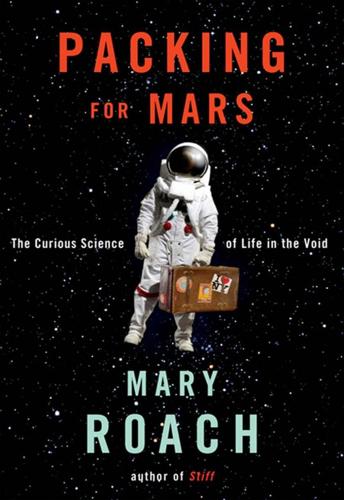
Packing for Mars: The Curious Science of Life in the Void
by
Mary Roach
Published 1 Jan 2010
Here’s why they’re floating: When you launch something into orbit, whether it’s a spacecraft or a communications satellite or Timothy Leary’s remains, you have launched it, via rocket thrust, so powerfully fast and high and far that when gravity’s pull finally slows the object’s forward progress enough that it starts to fall back down, it misses the Earth. It keeps on falling around the Earth rather than to it. As it falls, the Earth’s gravity keeps up its tug, so it’s both constantly falling and constantly being pulled earthward. The resulting path is a repeating loop around the planet. (It is not endlessly repeating, though. In low Earth orbit, where spacecraft roam, there’s still a trace of atmosphere, enough air molecules to create a teeny amount of drag and—after a couple years—slow a spacecraft* down enough that without a rocket engine blast it falls out of orbit.) In order to escape the Earth’s gravitational pull completely, an object must be hurtling at Earth’s escape velocity: 25,000 miles per hour.
…
And partly, they are unaccustomed to it. I have come across only one project that made use of human cadavers in the past twenty-five years of aeromedical research. In 1990, a human skull rode Space Shuttle Atlantis, kitted out with dosimeters, to help researchers determine how much radiation penetrates astronauts’ heads in low Earth orbit. Worried that the astronauts would be unnerved by their decapitated crewmate, the researchers covered the bone with pinkish plastic molded to approximate a face. “The result was far more menacing than plain bone would have been,” noted astronaut Mike Mullane.* Back in the Apollo era, the agency’s discomfort over using dead people in capsule impact studies appeared to transcend any discomfort they felt about using live ones.
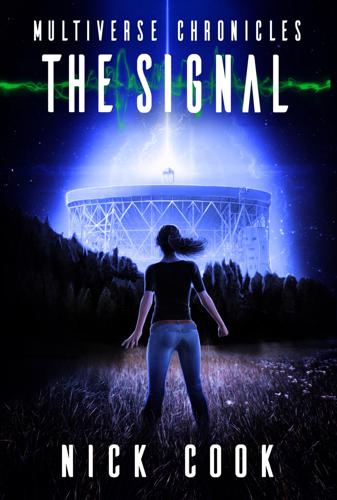
The Signal: Watch Out for the Darkness
by
Nick Cook
Published 11 Jul 2018
However, we’ve already learnt from the other MERLIN receivers that this signal seems to be coming from all areas of the sky at the same time.’ ‘Yes, we realised that, but that idea has already been countered with the suggestion that Russia has somehow managed to launch hundreds of stealth satellites into low Earth orbit.’ ‘Oh, come on,’ I said. ‘How would you not know about a single one of these launches? And anyway, a satellite with a miniature nuclear reactor on board wouldn’t be able to sustain the level of power we’re currently seeing in this signal. Do you really think the Russians have made some sort of major breakthrough that would allow them to pull this off?’

Perfection
by
Vincenzo Latronico
Published 18 Mar 2025
Food was part of their culture, and they would discuss it among themselves in the same way previous generations had discussed films, books, and politics. It helped define who they were. The most striking dishes would be photographed, tagged, and shared. Those images would then travel to the other end of the planet, bouncing along in low Earth orbit or speeding across ocean ridges, reaching the screens of their peers in Lyon, Helsinki, and Valencia, who would look at them for a moment, entranced by the differences, before pressing a keyboard shortcut etched into their muscle memory, and getting back to work at a café with decent wifi, daily specials on a blackboard, and sprawling aloe plants.
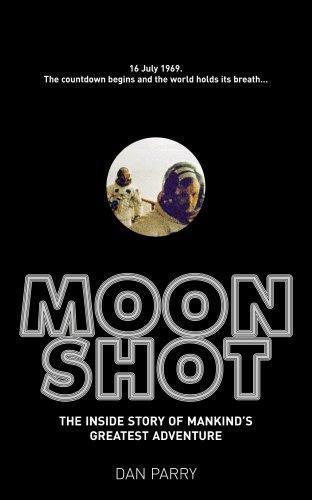
Moonshot: The Inside Story of Mankind's Greatest Adventure
by
Dan Parry
Published 22 Jun 2009
Without any elaborate preamble, Deke simply announced that 'the guys who are going to fly the first lunar missions are the guys in this room'.10 Five manned flights were scheduled, labelled C, D, E, F and G. The first would be led by Mercury veteran Wally Schirra, who would test-fly the Block II command module. Then Jim McDivitt (the commander who had attempted the first Gemini rendezvous) would test both the command and lunar modules in low Earth orbit. The E mission would repeat these tests in deep space, 4,000 miles from Earth. This flight would be commanded by Frank Borman, who had helped investigate the fire. Borman's crew included Michael Collins, while the backup crew consisted of Neil Armstrong, Buzz Aldrin and Jim Lovell. After Borman's flight, the F mission would stage a full dress rehearsal of the landing, while the G crew would make the first attempt to reach the lunar surface.
…
Astronomers were taken aback by the far side's heavily cratered landscapes, devoid of seas and strewn with what Collins later described as an 'uninterrupted jumble of tortured hills'.43 Anxious to demonstrate prowess in the emerging space-race, in December 1959 NASA commissioned its own series of probes, named Ranger. Rangers 1 and 2, however, never got beyond short-lived low-Earth orbits, and Ranger 3 missed in its attempt to reach the Moon. Ranger 4 suffered electrical failure, 5 also missed, and for good measure also suffered electrical failure, and 6 was disabled at launch; but Ranger 7 proved, five years later, that NASA could also snap pictures of the Moon. Deliberately plunging towards the lunar surface, before it was destroyed on impact Ranger 7 briefly transmitted TV images that were a thousand times sharper than anything that had been seen through a telescope.44 They revealed not the jagged mountains that appeared in the speculative paintings by Chesley Bonestell, but rolling hills and open spaces.

Bold: How to Go Big, Create Wealth and Impact the World
by
Peter H. Diamandis
and
Steven Kotler
Published 3 Feb 2015
CubeSats themselves are cheap to make (about $5,000 to $8,000).19 Launching them is the real expense (still tens of thousands of dollars). But that’s today. If we wait a few more years, Made in Space can solve this problem for pennies on the dollar. “Turns out,” says Dunn, “the ISS [is] a perfect platform for launching things into low-Earth orbit. Already our printers can print the cube portion of a CubeSat, and we’ve also printed the electronics in our lab. It’s hard to say for sure, but around 2025, we should be able to print electronics aboard the ISS. This means we’ll be able to email hardware into space for free, rather than paying to have it launched there.”
…
To look at this from a more expansive angle, consider that we now live in a world where Google’s autonomous car can cruise our streets safely because of a rooftop sensor called LIDAR—a laser-based sensing device that uses sixty-four eye-safe lasers to scan 360 degrees while concurrently generating 750 megabytes of image data per second to help with navigation.5 Pretty soon, though, we’ll live in a world with, say, two million autonomous cars on our roads (not much of a stretch, as that’s less than one percent of cars currently registered in the United States),6 seeing and recording nearly everything they encounter, giving us near-perfect knowledge of the environment they observe. What’s more, ubiquitous imaging doesn’t stop there. 360-degree LIDAR imaging in Google’s driverless car Source: http://people.bath.ac.uk/as2152/cars/lidar.jpg In addition to these autonomous cars scanning the roadside, by 2020, an estimated five privately owned low-Earth-orbiting satellite constellations will be imaging every square meter of the Earth’s surface in resolutions ranging from 0.5 to 2 meters.7 Simultaneously, we’re also about to see an explosion of AI-operated microdrones buzzing around our cities and taking images down in the centimeter range. Do you want to know how many cars are in your competitor’s parking lot in Moscow or Mumbai?
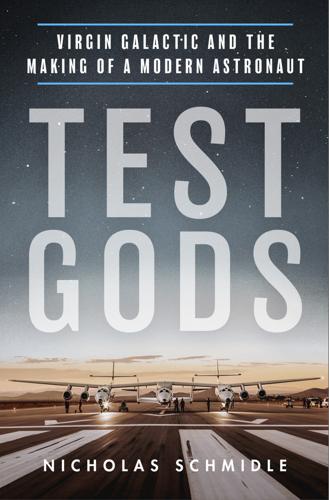
Test Gods: Virgin Galactic and the Making of a Modern Astronaut
by
Nicholas Schmidle
Published 3 May 2021
Virgin had pioneered a unique air-launch system—a mothership, WhiteKnightTwo, had been designed to carry SpaceShipTwo to roughly 45,000 feet so the rocket ship would not waste its energy slogging through the dense, lower atmosphere—while others used a more traditional ground-launch system. Virgin planned to take half a dozen passengers on a “suborbital” flight, cresting about 50 miles above the Earth. By comparison, what is called “low Earth orbit” starts at 100 miles above sea level; the International Space Station orbits at an average of 150 miles above that; GPS satellites, which operate in “medium” Earth orbit, are about 13,000 miles away. Blue Origin shared Virgin’s suborbital altitude goal for its initial crewed flights but was intent on exploring deep space, too.
…
Khashoggi, Jamal Kierkegaard, Søren Kincheloe, Iven C. Kitty Hawk, North Carolina Kuhlemeier, Bill Kuwait, Iraqi invasion of Lady Gaga Land Rover The Late Show with David Letterman Leland, Richard LEM (lunar module) Lindbergh, Charles Living Legends of Aviation Lockheed Loersch, Rachel (sister of Mark Stucky) “low Earth orbit” Mackay, Dave at SETP SETP tour and SpaceShipTwo’s first space flight and Stucky and test flight with Beth Moses on board and Magee, John Gillespie Jr. Mailer, Norman Maisler, Brian “Mannequin Skywalker” Marine Corps Mars Marshall, Pat Masucci, Mike May, Glen McConnell, Mitch McDowell, Jonathan “The Edge of Space: Revising the Karman Line” Melvill, Mike Mercury Messier, Doug Minkinow, Stanley Mladić, Ratko Moby-Dick (Melville) Mojave Moran, Jim Morton, Jarret Moses, Beth Moses, Mike Alsbury’s death and background of chooses wife for SpaceShipTwo test flight concerns about source of RCS problem crash of SpaceShipTwo and Ericson’s loss of faith in flaking issue and h-stab problem and IPO and press coverage and relief after first space flight of SpaceShipTwo Schmidle (author) and SpaceShipTwo’s first rocket-powered flight (2018) and SpaceShipTwo’s first space flight and Stucky and test flight with Beth Moses on board and Musk, Elon NASA (National Aeronautics and Space Administration) distaste for space tourism Dryden Flight Research Center Edwards Air Force Base grounds Space Shuttle program offers Stucky job as test pilot Orbital ATK and press conferences Rutan and “7 Elements of Flight Rationale, The” and Space Mirror Memorial SpaceX and Stucky quits Stucky works at Trump and X Prize and National Aerospace Training and Research Center (NASTAR) National Air and Space Museum National Geographic National Transportation Safety Board NATO command Navy NBC Necker Island New Mexico space industry and Virgin Galactic announces move to New Shepard rocket New Yorker NF-104A Nichols, Clint 'N Sync Obama, Barack O’Donoghue, Dennis Officer Candidate School Oldfield, Mike, Tubular Bells Orbital ATK “overview effect” Page, Larry Pakistan Palermo, Enrico Palihapitiya, Chamath Palmdale, California Parrish, Brandon Patterson, Mark applies for spot on Virgin Galactic spaceship party in 2009 and Pecile, Nicola Pence, Mike Persall, Wes Petersen, Frank Jr.
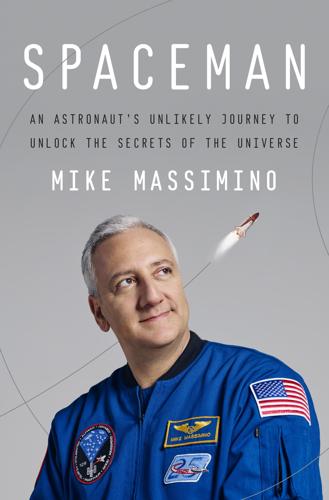
Spaceman: An Astronaut's Unlikely Journey to Unlock the Secrets of the Universe
by
Mike Massimino
Published 3 Oct 2016
It was Neil Armstrong and Buzz Aldrin in an all-out dash to the moon, a story so compelling that it captured the whole world’s attention. After Apollo, everything changed. We’d won the race. It was time to start a new chapter to get everyone excited again. NASA’s original plan was ambitious: a reusable space plane, a space station in low-Earth orbit, outposts on the lunar surface, a manned mission to Mars. But the support from the public wasn’t there; people thought the story was over, and they changed the channel. A recession hit, budget cuts followed, and the big-spending days of the space race were over. The reusable space plane, the shuttle, was the only part of the plan that survived.
…
In the end, the shuttle was sold as a one-size-fits-all vehicle that would do a bit of everything: It was a flying space lab, a cargo ship, a way to launch and service satellites. After the excitement of the space race, the shuttle was sold on the premise that it wasn’t going to be exciting at all. It was routine, everyday access to low-Earth orbit, no different from an eighteen-wheeler hauling freight from Indianapolis to Buffalo. As the budgets got smaller, the story got smaller, too. Fewer bucks, fewer Buck Rogers. With astronauts today, people respect the title, but they don’t know who we are. The Mercury and Apollo astronauts were true celebrities.

Life's Edge: The Search for What It Means to Be Alive
by
Carl Zimmer
Published 9 Mar 2021
He paid them no mind. Aboard the International Space Station, 250 miles above Muotri’s head, hundreds of his brain organoids were sitting inside a metal box. He wanted to know how they were faring. For years astronauts aboard the space station had run experiments to see how cells grow in low Earth orbit. As they free-fell around the planet, the cells no longer experienced the same tug of gravity that has pulled on all life on Earth for the past 4 billion years. Strange things happen in microgravity, it turned out. In some experiments, the cells grew faster than they would on the ground. They sometimes became bigger.
…
In the movies and TV shows we watched, humans traveled across the galaxy and met an endless procession of other life-forms that had an odd resemblance to the two-legged mammals who go to Hollywood casting calls. It seemed like the interplanetary age had begun. Astronauts only got as far as the moon, though, and they never stayed long before coming home. By the 1970s their ambitions had contracted down to low Earth orbit. Their cramped space stations flew overhead, close enough to leave a glint on the night sky. Instead of humans, it was machines that explored the other planets. And many of those machines came from JPL. It was at JPL that engineers built the first spacecraft to visit another planet—Mariner 2, which flew past Venus in 1962, and Mariner 4, which paid humanity’s first visit to Mars three years later.

From eternity to here: the quest for the ultimate theory of time
by
Sean M. Carroll
Published 15 Jan 2010
Einstein’s answer was: They wouldn’t affect them at all, as long as we confined our attention to relatively small regions of space and brief intervals of time. We can do whatever kinds of experiments we like—measuring the rates of chemical reactions, dropping balls and watching how they fall, observing weights on springs—and we would get exactly the same answer zipping around in low-Earth orbit as we would in the far reaches of interstellar space. Of course if we wait long enough we can tell we are in orbit; if we let a fork and a spoon freely float in front of our noses, with the fork just slightly closer to the Earth, the fork will then feel just a slightly larger gravitational pull, and therefore move just ever so slightly away from the spoon.
…
But how do you know it’s gravity? Only by looking outside and checking that you’re on the surface of the Earth. If you were in a spaceship that was accelerating, you would also be pushed down into your chair. Just as you can’t tell the difference between freely falling in interstellar space and freely falling in low-Earth orbit, you also can’t tell the difference between constant acceleration in a spaceship and sitting comfortably in a gravitational field. That’s the “equivalence” in the Principle of Equivalence: The apparent effects of the force of gravity are equivalent to those of living in an accelerating reference frame.
…
Therefore, the orbiting clock will experience more elapsed time per orbit than the tower clock—compared to the accelerated clock on the tower, the freely falling one in orbit appears to run more quickly. Figure 18: Time as measured on a tower will be shorter than that measured in orbit, as the former clock is on an accelerated (non-free-falling) trajectory. There are no towers that reach to the heights of low-Earth orbit. But there are clocks down here at the surface that regularly exchange signals with clocks on satellites. That, for example, is the basic mechanism behind the Global Positioning System (GPS) that helps modern cars give driving directions in real time. Your personal GPS receiver gets signals from a number of satellites orbiting the Earth, and determines its position by comparing the time between the different signals.

The Ultimate Engineer: The Remarkable Life of NASA's Visionary Leader George M. Low
by
Richard Jurek
Published 2 Dec 2019
The Saturn rocket first stage would eventually have five Rocketdyne F-1 engines—four outer engines that could be turned, or gimballed, and one stationary one right smack in the center, as von Braun wanted “to fill that hole that was just crying out for an engine.” During the Apollo program a total of fifteen flight-capable Saturn V rockets would be built, but only thirteen would be flown. For more than a half century, it has been the only launch vehicle to ever carry humans beyond low Earth orbit. During this period, Gilruth again tried several more times to poach Low, but he always declined. The management structure down in Houston had not yet changed to Low’s liking, and he was making important progress with Holmes in Washington. Holmes also hired several other key figures, including Joe Shea, as a deputy for systems.
…
During this period, Low was keenly aware of the need for speed in judiciously rightsizing the agency as its budget allocations rapidly declined. The enormous buildup for Apollo created bloat across the entire NASA supply chain and internal managerial and operational organization. Since Apollo’s days were numbered and the congressional and White House appetite hinted more and more toward a low Earth-orbit future, the center budget situation demanded action. During his tenure in Washington, Low would become preoccupied by NASA workforce issues. His biggest concern from his first days in office involved attracting and retaining the young, dynamic talent that would be needed to keep the space program relevant and innovative, while at the same time transitioning the institutional base steeped in Apollo to the new priorities of the shuttle.
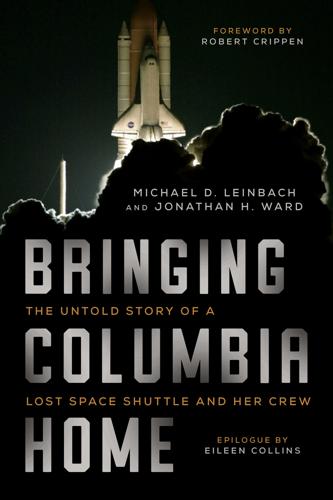
Bringing Columbia Home: The Untold Story of a Lost Space Shuttle and Her Crew
by
Michael Leinbach
and
Jonathan H. Ward
Published 23 Jan 2018
IMTs are “typed” according to the scope and complexity of the incidents they are certified to manage. Inconel—an alloy of nickel, chromium, iron, and other metals used for spacecraft parts subject to high-temperature and/or high stress environments. International Space Station (ISS)—a microgravity and space environment laboratory in low Earth orbit, funded and manned by the United States, Russia, Japan, the European Space Agency, and Canada. It has been continuously occupied since November 2, 2000, recently by six astronauts at a time. Major assembly of the ISS occurred between 1998 and 2011 with unmanned vehicles delivering the Russian segment modules and the space shuttle delivering the components for the US side of the ISS.
…
Solid rocket booster (SRB)—one of two large solid-propellant motors that together provided 83 percent of the thrust in the first two minutes of the space shuttle’s flight. SRBs separated from the external tank and parachuted into the ocean, to be reused on later missions. Soyuz—the Russian manned spacecraft used to ferry crews of up to three people to and from low Earth orbit. Spacehab—a pressurized module carried in the shuttle’s payload bay and connected to the crew module’s air lock by a tunnel. Spacehab modules carried scientific and medical experiments the crew could operate in a shirtsleeve environment while on orbit. Space shuttle—see Orbiter. STS-xxx—abbreviation for “Space Transportation System.”
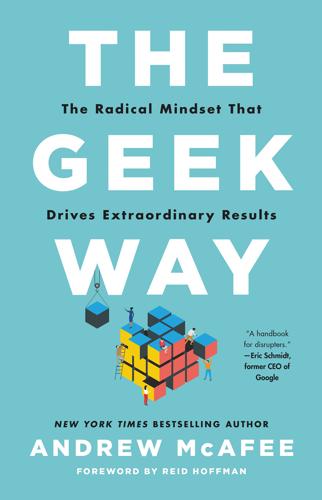
The Geek Way: The Radical Mindset That Drives Extraordinary Results
by
Andrew McAfee
Published 14 Nov 2023
It’s the world’s only maker of commercially viable reusable rockets, and now carries about two-thirds of all the payload that leaves Earth for space. One of the main reasons SpaceX’s market share is so high is that its costs are so low. A 2018 NASA report found that compared to the Ariane 5 rocket developed and launched by France’s Arianespace, SpaceX’s Falcon 9 was 80 percent cheaper at putting a kilogram of payload into low-Earth orbit.11 The company’s adherence to the great geek norm of speed is visible throughout the development of its newest and biggest rocket, called Starship. This vessel’s mission is to take humans to the moon and beyond. Along the way it will also put a lot of communications satellites and other payload into orbit around the Earth.
…
In it, one of the show’s main characters is worried that the apartment she’s interested in is too far east. Her realtor assures her, “When they finish the Second Avenue subway, this apartment will quadruple in value.” 11 Compared to the US Space Shuttle, which was retired in 2011 after a second fatal in-flight accident, SpaceX was 95 percent cheaper at getting a kilogram into low-Earth orbit, and 75 percent cheaper at getting cargo and crew to the International Space Station. 12 This cycle became known as the OODA loop. 13 Scores for these statements need to be reversed. To do this, subtract the respondent’s score from eight. For example, if the respondent answered with six, the reversed score would be two.

Elon Musk
by
Walter Isaacson
Published 11 Sep 2023
Afterward, he took Grimes for a spin in the prototype to Nobu restaurant, where the valet parkers just stared at it without touching. On the way out, pursued by paparazzi, he drove over a pylon in the parking lot with a “No Left Turn” sign and turned left. 52 Starlink SpaceX, 2015–2018 An internet in low-Earth orbit When Musk launched SpaceX back in 2002, he conceived it as an endeavor to get humanity to Mars. Every week, amid all the technical meetings on engine and rocket design, he held one very otherworldly meeting called “Mars Colonizer.” There he imagined what a Mars colony would look like and how it should be governed.
…
That was the inspiration for Starlink, to fund getting to Mars.” He pauses, then adds for emphasis, “The lens of getting to Mars has motivated every SpaceX decision.” To pursue this mission, Musk announced in January 2015 the creation of a new division of SpaceX, based near Seattle, called Starlink. The plan was to send satellites into low-Earth orbit, about 340 miles high, so that the latency of the signals would not be as bad as systems that depended on geosynchronous satellites, which orbit 22,000 miles above the Earth. From their low altitude, Starlink’s beams cannot cover nearly as much ground, so many more are needed. Starlink’s goal was to eventually create a megaconstellation of forty thousand satellites.
…
“Building mass-market electric cars was inevitable,” he said. “It would have happened without me. But becoming a space-faring civilization is not inevitable.” Fifty years earlier, America had sent men to the moon. But since then, there had been no progress. Just the reverse. The Space Shuttle could only do low-Earth orbit, and after it was retired, America couldn’t even do that anymore. “Technology does not automatically progress,” Musk said. “This flight was a great example of how progress requires human agency.” 63 Raptor Shake-up SpaceX, 2021 Jake McKenzie atop a high bay The construction tents and high bays in Boca Chica Engineering mode “My neural net is getting fired up like it’s the Fourth of July,” Musk exulted.
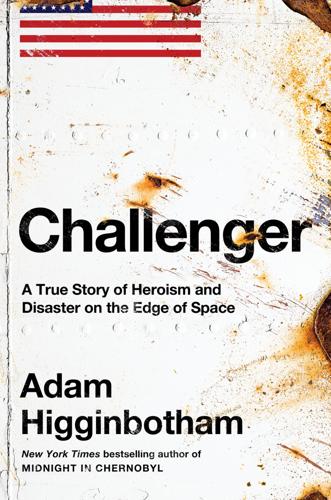
Challenger: A True Story of Heroism and Disaster on the Edge of Space
by
Adam Higginbotham
Published 14 May 2024
The scope of exploration, and distances, involved in the vehicles’ respective journeys were scarcely comparable: Armstrong and Aldrin’s trip to the lunar surface required them to break entirely free of Earth’s gravity and embark on an eight-day round trip through more than 900,000 miles of outer space; the Space Shuttle would be required merely to travel into low Earth orbit—between 190 and 330 miles above sea level—where it would circle the planet for up to a week before returning home. In some ways, it was as if the sixteenth-century explorer Ferdinand Magellan had proposed to follow up the first circumnavigation of the world by rowing across Lisbon harbor and back.
…
So he shunted plans for the space station off into the distant future, on the understanding that the shuttle was the only remaining element of the once-complex Space Transportation System that could exist without any of the others. And if—in the absence of a space station, or moon bases, or the staging of interplanetary rocket missions—the proposed shuttle no longer had any specific destination to reach, then surely plenty of reasons could be found for it to visit low Earth orbit. Even then, Congress and the White House balked at the extravagant price tag for the shuttle. Instead of $14 billion, Congress and the hard-headed bureaucrats of Nixon’s new Office of Management and Budget agreed to allocate just $5.5 billion for development of the new vehicle. Based on NASA’s existing calculations, this amount was far too little money to create an experimental machine that would require the research and development of so much untried technology.
…
Time replayed the shuttle’s triumph after years of criticism in epic cinematic terms: “The shuttle had become a kind of technological Rocky, the bum who perseveres to the end, the underdog who finally wins.” In the Washington Post, the perils of the Aluminum Dumbo were brushed aside, and the paper anticipated a dominant America finding new scientific and business opportunities in low Earth orbit. Central to these ideas was the way NASA had sold the shuttle as a thrifty and cost-effective workhorse that could make space travel routine and even turn a profit, part of a sleek new agency that would be reshaped for the sharp-toothed, go-go entrepreneurial values of the new decade. The man expected to undertake this task was Reagan’s newly appointed NASA Administrator: James M.
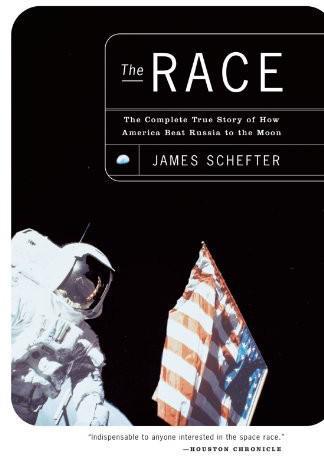
The Race: The Complete True Story of How America Beat Russia to the Moon
by
James Schefter
Published 2 Jan 2000
They’d been the backup to the Grissom crew; now they’d be first in space with Apollo, using the smaller Saturn 1B to get there. Their job was to stay in orbit for up to eleven days and give the command and service modules a hard workout. The D mission belonged to Jim McDivitt, Dave Scott, and Rusty Schweickart. They’d be first to ride a Saturn 5 and to take a lunar module along for a manned trial in low Earth orbit. But their LM had problems, and after it arrived at the Cape, it was being torn down and fixed. It wouldn’t be ready to fly on the planned schedule of December or January. Another crew was in training for the E mission. Frank Borman, Bill Anders, and Mike Collins would have the job of going to a high Earth orbit with the full set of Apollo ships in February or March 1969.
…
Everyone knew that the lunar landing flight plan called for the LMP to be the first man to set foot on the moon. If Apollos 9 and 10 worked right, Edwin E. “Buzz” Aldrin’s name would forever be the answer to a question on school kids’ history tests. But 9 and 10 had to be right. Jim McDivitt, Dave Scott, and Rusty Schweickart were in low Earth orbit—the D mission—on March 3, 1969. McDivitt was the crew commander and Scott was the command module pilot. Schweickart was lunar module pilot. McDivitt’s and Scott’s job titles reflected their real assignment. McDivitt was the overall boss and Scott controlled the command module in its maneuvers.
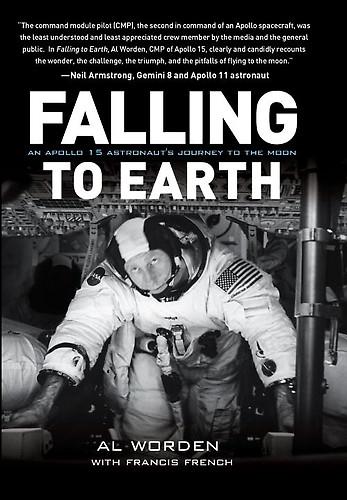
Falling to Earth
by
Al Worden
Published 26 Jul 2011
I am lucky it happened to me. CHAPTER 1 FARMER Only twenty-four humans have left Earth orbit and journeyed to the moon. I’m one of them. It’s an exclusive club, so small that I am still surprised they let me in. After all, hundreds of people have traveled into space. Yet most spacefarers have never strayed beyond low Earth orbit. Our little group traveled a great deal farther—more than a thousand times farther. The size of our group hasn’t grown because no one has returned to the moon. In fact, our number has dwindled to eighteen as my friends and colleagues pass away. I sometimes think we will all be gone by the time humans return there.
…
There was nothing I could do about the stuffy feeling in my head—as if I were hanging upside down. I could see Dave and Jim felt the same. Their faces were flushed and puffy, and their eyes bulged a little. There wasn’t time to let the discomfort affect me. We were all very busy. We were in a low Earth orbit—too low to linger long—and could only go around the Earth for a couple of hours before we needed to head to the moon. This was the only time in the mission I would see Earth up close, but so far I’d barely had a glimpse of it out of the window. The clock was ticking. Fortunately, our spacecraft had made it into space in good working order.
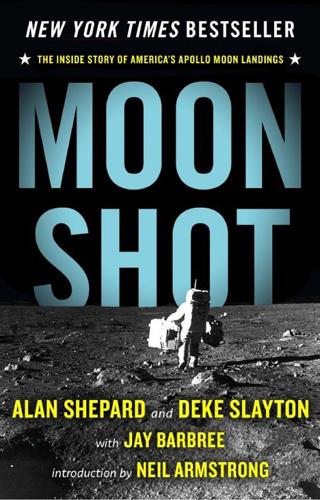
Moon Shot: The Inside Story of America's Apollo Moon Landings
by
Jay Barbree
,
Howard Benedict
,
Alan Shepard
,
Deke Slayton
and
Neil Armstrong
Published 1 Jan 1994
The blueprint for the twenty-first century called for sustaining the International Space Station and its fifteen-nation partnership until at least 2020, and for building the space shuttle’s heavy-lift rocket and deep spacecraft successor to enable astronauts to fly beyond the friendly confines of low earth orbit for the first time since Apollo. That deep space ship would fly them again around the moon, then farther out to our solar system’s LaGrange points, and then deeper into space for rendezvous with asteroids and comets, learning how to deal with radiation and other deep space hazards before reaching for Mars or landings on Saturn’s moons.
…
The fifty-year dream of new frontiers was replaced with the shortsighted obligations of party politics. As 2011 dawned, NASA, one of America’s great science agencies, was effectively defunct. While Congress has so far prohibited the total cancellation of the space agency’s plans to once again fly astronauts beyond low earth orbit, Obama space operatives have systematically used bureaucratic tricks to slow roll them to a crawl. Congress holds the purse strings and spent most of 2010 saying, “Wait just a minute.” Thousands of highly skilled jobs across the economic spectrum have been lost while hundreds of billions in “stimulus” have been spent.
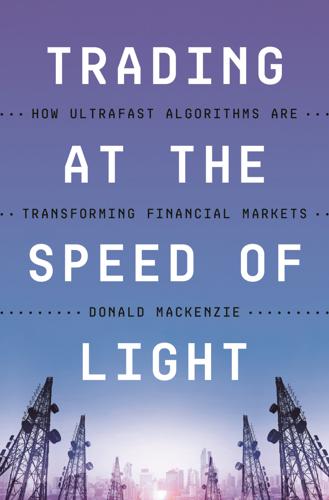
Trading at the Speed of Light: How Ultrafast Algorithms Are Transforming Financial Markets
by
Donald MacKenzie
Published 24 May 2021
On McKay’s calculations, this greater capacity (together with an LMDS link being slightly faster than E-band, because LMDS needs fewer hops and it is possible for an LMDS link to hug the geodesic particularly closely) is sufficient to remove any structural advantage of private links over quasi-public data transmitted via LMDS.18 McKay’s LMDS network (which became fully operational in the summer of 2019) is, however, not the final act in the material political economy of data transmission in New Jersey, as we shall see in chapter 7. The Materiality of the Small HFT’s “materiality of the large” (the mechanisms of data transmission among datacenters) has an even larger-scale transoceanic aspect: the submarine fiber-optic cables, shortwave radio links (Van Valzah 2018), and—perhaps eventually—swarms of low-earth-orbit satellites that carry financial data from continent to continent. Let me, though, set these aside here (for discussion of them, see MacKenzie 2019c), and end this chapter on HFT’s physicality by returning to “the materiality of the small”: to what goes on inside datacenters. My introduction to its more controversial aspects came early in the research, in my first meeting, in October 2011, with a young Chicago trader.
…
The need to apply special relativity is in other respects currently restricted by the fact that the datacenters in which HFT is conducted are all in fixed locations on what is a single and (for most relevant practical purposes) rigid body, planet Earth (see Einstein 1920, especially chapter 2; q.v. Angel 2011). If, however, as seems quite conceivable, a swarm of low-earth-orbit satellites starts being used for long-distance data transmission for HFT (MacKenzie 2019c), their clocks will need to be adjusted to take account of the special-relativity effect of the satellites’ velocities. If HFT continues to speed up in the way that it has, point out Laughlin, Aguirre, and Grundfest (2014: 284), an effect from general relativity—that “clocks run at different rates depending on their location in a gravitational field”—may also eventually need to be taken into account even in terrestrial HFT. 13.
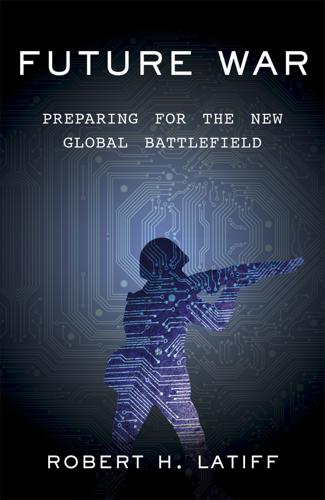
Future War: Preparing for the New Global Battlefield
by
Robert H. Latiff
Published 25 Sep 2017
The V-1 presaged the development and introduction of cruise missiles, while the V-2 rocket and its designer, Wernher von Braun, were hugely important in the U.S. space program and the development of ballistic missiles. The V-2 could carry a 2,000-pound warhead. Launched straight up, it could achieve an altitude of 128 miles. NASA is presently developing a rocket that will be more than thirty stories high and will be able to lift 130 tons into low earth orbit. The British invention of radar, and the U.S. development of it, constituted a great leap in technology that fundamentally changed warfare as well as civil and commercial operations to this day. It is a long way from the rudimentary radars so critical to the Battle of Britain to the MIT Lincoln Laboratory “Haystack” radar, which can image a satellite in geosynchronous orbit, but the basic technology is the same.
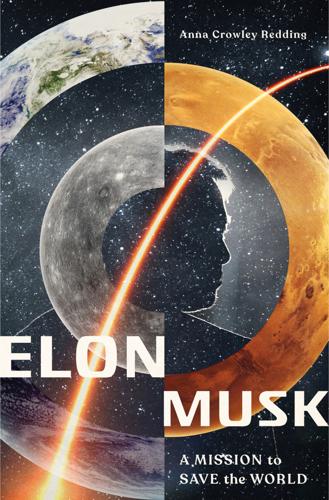
Elon Musk: A Mission to Save the World
by
Anna Crowley Redding
Published 1 Jul 2019
You are going to want the Internet available to keep in touch with Earth while chilling (or engaging in your daily fight for survival) on Mars. In January 2015, Elon announced his plans to develop a space-based Internet called Starlink. The first step is providing satellite-based Internet for all of Earth. The satellites, some four thousand of them, would beam down broadband Internet from low Earth orbit. The price tag for a space-based Internet? $10 billion. And the number of people on the planet who would have improved access or their first access at all to the Internet? Roughly three billion. “Yeah, there is no question,” SpaceX president Gwynne Shotwell said. “It will change the world.”144 It took a while, but in 2018 Elon finally won approval from the Federal Communications Commission for his plan to build a global broadband network using SpaceX satellites.

Elon Musk: Tesla, SpaceX, and the Quest for a Fantastic Future
by
Ashlee Vance
Published 18 May 2015
As Shotwell saw it, a number of new nations were showing interest in launches, eyeing communications technology as essential to growing their economies and leveling their status with developed nations. Cheaper flights would help SpaceX take the majority of the business from that new customer set. The company also expected to participate in an expanding market for human flights. SpaceX has never had any interest in doing the five-minute tourist flights to low Earth orbit like Virgin Galactic and XCOR. It does, however, have the ability to carry researchers to orbiting habitats being built by Bigelow Aerospace and to orbiting science labs being constructed by various countries. SpaceX will also start making its own satellites, turning the company into a one-stop space shop.
…
.”* SpaceX’s main competitor for ISS resupply missions and commercial satellites in the United States is Orbital Sciences Corporation. Founded in Virginia in 1982, the company started out not unlike SpaceX, as the new kid that raised outside funding and focused on putting smaller satellites into low-Earth orbit. Orbital is more experienced, although it has a limited roster of machine types. Orbital depends on suppliers, including Russian and Ukrainian companies, for its engines and rocket bodies, making it more of an assembler of spacecraft than a true builder like SpaceX. And, also unlike SpaceX, Orbital’s capsules cannot withstand the journey back from the ISS to Earth, so it’s unable to return experiments and other goods.
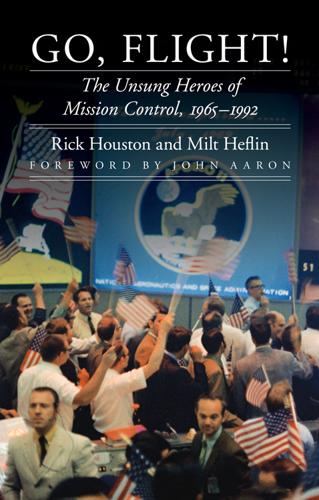
Go, Flight!: The Unsung Heroes of Mission Control, 1965-1992
by
Rick Houston
and
J. Milt Heflin
Published 27 Sep 2015
“Buck’s call was a major contributor to the mission’s ultimate success,” said Aaron of Willoughby, a former marine fighter pilot who passed away on 8 September 2009 after a battle with Alzheimer’s. “Had the platform continued in the mode of max rate of tumble, it is doubtful that the platform could have survived. With the IMU platform failed, the mission would have been aborted after a couple of revolutions in low-Earth orbit. Although not well recognized, Buck likely also saved the mission to the moon that day.” In the Trench, everyone except for Van Rensselaer was having troubles. Booster was good to go throughout the incident. “The ol’ Saturn V just chugged along,” Van Rensselaer said. “It was independently grounded from the Command Module, so the lightning strike did a number on the Command Module, but we didn’t even lose a piece of data on the Saturn V.
…
“I can tell you that all of us thought that we’d probably be on Mars in twenty years from that time,” said Gerry Griffin, the lead flight director on Apollo 17. “It just never happened. Frustrated? I think disappointment might be an ever better word. There was just something that was empty about it. I could see it coming. I was off doing other things, but I knew we were going to be stuck in low-Earth orbit for a long, long time.” Those who worked in the MOCR during Apollo continued to leave their marks on the human spaceflight community for years. Don Puddy, Phil Shaffer, Neil Hutchinson, and Chuck Lewis would eventually become full-fledged flight directors, while others like Tommy Holloway, Harold Draughon, Gary Coen, Jay Greene, Randy Stone, and Al Pennington would join them at the console during the Space Shuttle era.
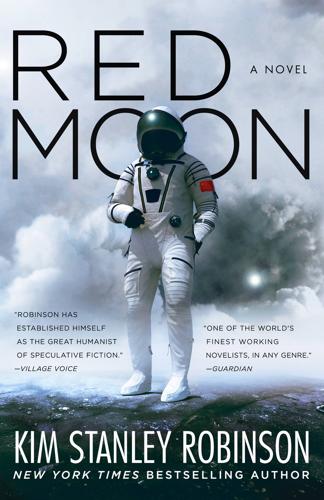
Red Moon
by
Kim Stanley Robinson
Published 22 Oct 2018
After we reached those places, when it seemed we had been everywhere, people began to cross the Pacific on primitive rafts, to see if those ancient first voyages could be reproduced by modern people. This was the archeological sublime, as it seemed an end point had been reached, because we had been everywhere else on the planet. Then, to everyone’s amazement, Russians and Americans put animals and people in low Earth orbit, above the sky. Then, even more amazing, the Americans put men on the moon. Who could have imagined it could be done! But my friend Oliver once asked me to notice how always, after these feats were accomplished, people’s interest in the places involved moved on. People now live at the South Pole, cruise ships visit the North Pole, tourists are taken on the dangerous climb to the top of Mount Everest.
…
They were sending the potassium and phosphorus to the north pole base to aid the local agriculture, and they threw the rare earths home to Earth. Some heavy-duty high-capacity launch rails had been built at the north end of Procellarum, to be as near the north pole base as possible. These launch rails cast freighters full of refined rare earths down to low-Earth orbit, and later piecemeal down to Earth. It was the biggest American operation on the moon by far, and almost the only way the moon was actually proving of use to humanity, in this miner’s opinion. “You’re not breaking the Outer Space Treaty?” Valerie asked. The engineer didn’t think so. The mines were kept underground and the surface therefore was left mostly unmarked.
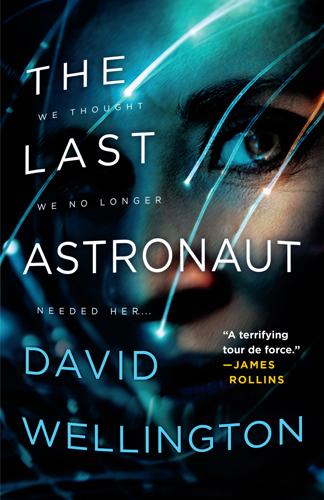
The Last Astronaut
by
David Wellington
Published 22 Jul 2019
Back when Americans were still allowed aboard Russian spacecraft. That Wanderer was based on the Soyuz spacecraft wasn’t altogether surprising. They were the most reliable spaceships ever built—in their various permutations they had performed hundreds of missions ferrying astronauts and cosmonauts up and down, to and from low Earth orbit. It did, however, make her feel sorry for the KSpace crew. Their ship had no HabLab, no special crew modules. Most of its mass was taken up by a big service module, its engine, which contained no crew-accessible space. Ahead of that it had a command module, which was just big enough for three people lying down in crash couches, and the spherical orbital module, which wasn’t exactly roomy.
…
It is joined by KMed, KHome, KTelecom, and KLife, the corporation’s food and beverage division. While KSpace is the least profitable of the five, Kyung Leonard himself is quoted[by whom?] as saying he considers it his most important contribution to the future. Mr. Kyung is famous for committing millions[how many?] from his own personal fortune to the construction of the KStation in low earth orbit, which was the world’s first orbital hotel, operating from 2028 to 2029, when an unexpected system failure caused it to deorbit well before the end of its planned life span. The office at the top of the Hive did have a spectacular view, though Kyung waved a hand as they entered, and most of the transparent dome turned solid black.
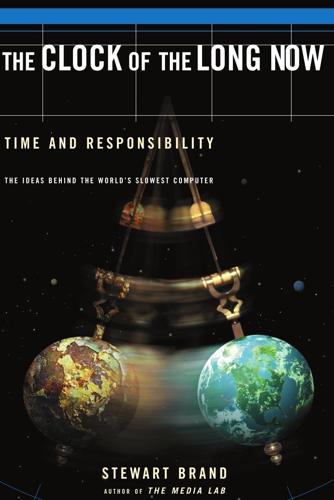
Clock of the Long Now
by
Stewart Brand
Published 1 Jan 1999
Typically, outdated legacy systems make themselves so essential over the years that no one can contemplate the prolonged trauma of replacing them, and they cannot be fixed completely because the problems are too complexly embedded and there is no one left who understands the whole system. Teasing a new function out of a legacy system is not done by command but by conducting a series of cautious experiments that with luck might converge toward the desired outcome. Here’s the real fear. Thanks to proliferating optical-fiber land lines worldwide and the arrival of low-Earth-orbit data satellite systems such as Teledesic, we are in the process of building one vast global computer. (“The network is the computer,” proclaims Sun Microsystems.) This world computer could easily become the Legacy System from Hell that holds civilization hostage: The system doesn’t really work, it can’t be fixed, no one understands it, no one is in charge of it, it can’t be lived without, and it gets worse every year.

The Second Intelligent Species: How Humans Will Become as Irrelevant as Cockroaches
by
Marshall Brain
Published 6 Apr 2015
And some of them should be far more advanced than humans because they would have gotten started earlier. So imagine the following scenario. The first extraterrestrial species arrives at planet earth. It truly arrives, and in the most impressive way possible. The alien's ship is the size of a small continent and it parks in low earth orbit for all to see. The ship is utterly amazing, and a super-intelligent alien species emerges – millions of aliens beam down to interview the human species. We each have an interview with one of the aliens – every single human being is interviewed. Think of all the people that the aliens would meet it they thoroughly interviewed every single human being on the planet.
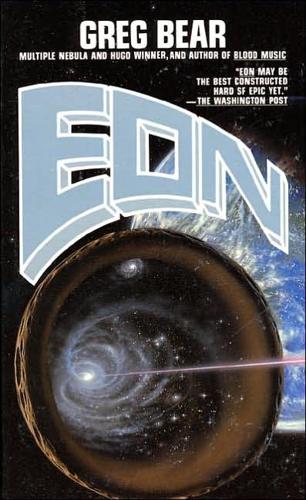
Eon
by
Greg Bear
Published 2 Jan 1985
I want Heine”Lead ship returning fire,” said an anonymous voice from within the bore hole. “Looks like they’re aiming for the tanks, maybe the cables.” “Maybe they don’t see the cables,” another voice suggested. The tone of both soldiers was calm, expectant. Lanier noticed a monitor showing the tiny star of Station Sixteen, in low Earth orbit of one thousand kilometers. As he watched, the star became a glowing smudge of white light. The light winked out. “Heineman on your button five,” Pickney told Lanier. He punched the button. “Lawrence, this is Garry.” “I was almost out the door and they pulled the back in. I’m in fourth chamber, Garry.
…
“Right in the middle of the barbecue.” “How many OTVs did Station Sixteen get off?.” Lanier, “Besides OTV 45, five. Three are coming for us. TWo for the Moon.” “Warn the three we are under attack and may not be able to receive them. Suggest they divert to the Moon.” “If they can make it,” Pickney said. The evacuation of the low Earth orbit platforms and other stations had already begun. The war was expanding now; not just beam defense platforms, but research and industrial stations were becoming targets. “Some diversion,” Pickney said bitterly. “Looks like it’s getting out of control.” “Of course it is,” Gerhardt said on the comlink.
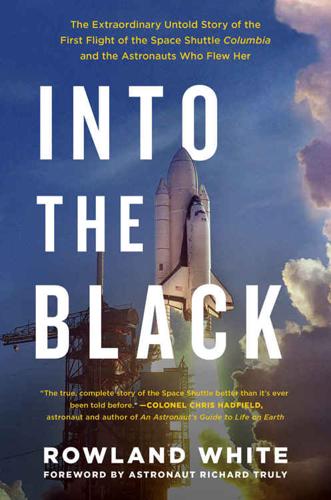
Into the Black: The Extraordinary Untold Story of the First Flight of the Space Shuttle Columbia and the Astronauts Who Flew Her
by
Rowland White
and
Richard Truly
Published 18 Apr 2016
Larger than the mirrors inside many ground-based telescopes, the silica glass blank—the unfinished disk from which the mirror was made—would require thousands of hours of precision grinding, polishing and testing. But when it was finished, its performance was expected to be extraordinary. From low Earth orbit at an altitude of between 150 and 160 miles, MOL’s DORIAN camera was, on paper at least, capable of focusing on an object as small as a softball. Operationally, because of the distortion caused by moisture in the atmosphere, that figure might double. But that still meant that MOL could zero in on any single square foot of the globe.
…
The MOL crews were briefed on what CORONA and GAMBIT could do. And they knew that their manned program offered something more. They could rotate the DORIAN camera’s reflecting mirror as they passed over a target so that pictures could be taken from two different angles. Combining the pair made stereo imagery possible. And they could also look down from low Earth orbit with their camera and sensors and tell Washington what was going on now. SEVEN 1966–67 Like those from GAMBIT and CORONA, the pictures taken by the Manned Orbiting Laboratory’s KH-10 DORIAN camera had to be physically returned to Earth. There were two options: use one of either a limited number of reentry buckets similar to those used by the National Reconnaissance Office’s unmanned spy satellites or, at the end of their thirty-day mission, the two-man MOL crew could suit up, then pull themselves through the 5-foot-long tunnel linking the lab with their Gemini-B spacecraft, carrying with them a data capsule of the take.
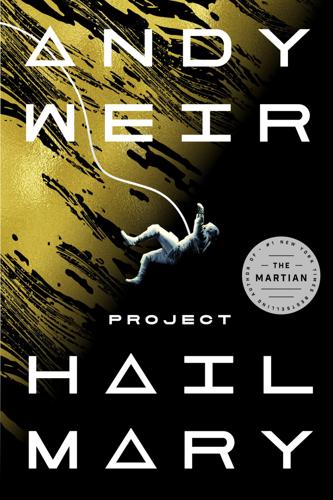
Project Hail Mary
by
Andy Weir
Published 15 May 2021
“Do you think those dots are alive?” she asked. “I don’t know—they could just be dust bouncing around in magnetic fields. I guess we’ll find out when ArcLight gets back to Earth. That’s coming up, right? Just a few weeks from now?” “It returns on the twenty-third,” she said. “Roscosmos will recover it from low-Earth orbit with a dedicated Soyuz mission.” I nodded. “Then we’ll know soon enough. The most brilliant minds in the world will look at them and find out what they’re about. Who’s going to do that? Do you know?” “You,” she said. “You’re going to do it.” I stared blankly. She waved her hand in front of my face.
…
Pepper’s Lonely Hearts Club Band is the greatest musical accomplishment in the history of mankind. I know, I know. Many would disagree. But they’re wrong.” “Fair enough,” I said. “But why Pete? Aren’t the Beatles named John, Paul, George, and Ringo?” “Sure. And that’s what we’ll call the ones aboard the Hail Mary. But this fella is for testing in low Earth orbit. I get a whole SpaceX launch just for me! Isn’t that amazing! Anyway, I named him after Pete Best—he was the drummer for the Beatles before Ringo.” “Okay, I didn’t know that,” I said. “Now you do. I’m gonna get that Astrophage now. I’ve got to make sure these beetles will be able to…‘Get Back.’ ” “Okay.”

Quantum Computing for Everyone
by
Chris Bernhardt
Published 19 Mar 2019
For quantum teleportation, Alice encodes using the reverse Bell circuit, and Bob decodes using the Pauli transformations. Quantum teleportation is actually being performed, usually using entangled photons rather than entangled electrons, where it can be done over substantial distances. As I write this, it has been announced that a Chinese team has teleported a qubit from Earth to a satellite in low Earth orbit. These experiments are often mentioned on news broadcasts, mainly because of the word “teleportation,” which conjures up images of Star Trek. Unfortunately, quantum teleportation is not something that is readily explained in a brief sound bite, and though many people have heard the term, not many understand exactly what it is that is being teleported.
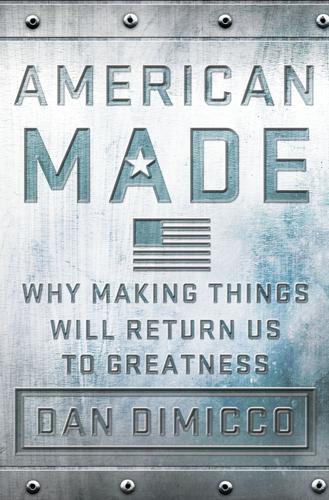
American Made: Why Making Things Will Return Us to Greatness
by
Dan Dimicco
Published 3 Mar 2015
Americans came together to meet the Sputnik crisis head-on, passing the National Defense Education Act to pump millions of dollars into science and math programs in public schools, and investing additional millions in the U.S. space program. But that wasn’t enough. America got a second wake-up call in 1961, when the Russians sent Yuri Gagarin into space, another Soviet first. We answered by launching Alan Shepard into low earth orbit, followed by John Glenn’s trip into outer space a year later. Kennedy knew we had to do better. If we were going to beat the Russians in the space race, we needed to innovate and develop new technology to put an American on the moon first. “We choose to go to the moon,” Kennedy said. “We choose to go to the moon in this decade and do the other things, not because they are easy, but because they are hard, because that goal will serve to organize and measure the best of our energies and skills, because that challenge is one that we are willing to accept, one we are unwilling to postpone, and one which we intend to win, and the others, too.”2 Kennedy also knew he couldn’t just talk about going to the moon.
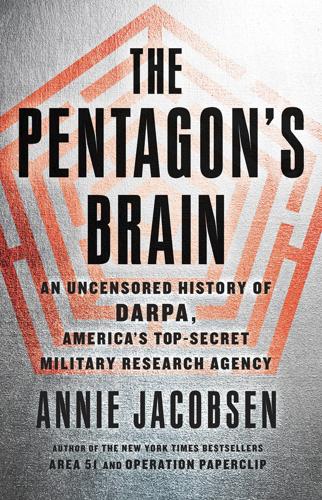
The Pentagon's Brain: An Uncensored History of DARPA, America's Top-Secret Military Research Agency
by
Annie Jacobsen
Published 14 Sep 2015
The Mach 20 drone will be able to strike any target, anywhere in the world, in less than an hour. As the Defense Department grows increasingly reliant on satellite technology, DARPA must provide the Pentagon with “quick, affordable and routine access to space,” says DARPA. The XS-1 experimental space drone, announced in the fall of 2013, is DARPA’s seminal hypersonic low-earth-orbit drone, designed to be able to fly faster on consecutive around-the-world missions than any other drone in U.S. history. Specifics about the weapons systems on board the XS-1 are classified. The oceans are vast, and DARPA’s plans for unmanned underwater vehicles (UUVs) are equally immense. One program is Hydra, an undersea system that includes a fleet of baby submersibles combined with a mother ship.
…
Bozkurt, “Early Metamorphic Insertion Technology for Insect Flight Behavior Monitoring,” Journal of Visualized Experiments, July 12, 2014, 89. 16 animated video: online at “Armed with Science,” the DoD’s official science blog. 17 DARPA’s hypersonic stealth drones: DARPA News, “Hypersonics—The New Stealth: DARPA investments in extreme hypersonics continue,” July 6, 2012; “Darpa refocuses Hypersonics Research on Tactical Missions,” Aviation Week and Space Technology, July 8, 2013. 18 Falcon HTV-2: Animated performance videos of Falcon HTV-2 at Lockheedmartin.com. 19 hypersonic low-earth-orbit drones: Toshio Suzuki, “DARPA Wants Hypersonic Space Drone with Daily Launches,” Stars and Stripes, February 4, 2014. 20 Hydra: John Keller, “DARPA Considers Unmanned Submersible Mothership Designed to Deploy UAVs and UUVs,” Military Aerospace Electronics, July 23, 2013. 21 Unmanned Ground System robots: Demonstration videos on DARPA’s YouTube channel, DARPAtv. 22 LANdroids: USC Information Sciences Institute, Polymorphic Robotics Laboratory, “LANdroids,” n.d. 23 what “autonomy” is: U.S.

When Things Start to Think
by
Neil A. Gershenfeld
Published 15 Feb 1999
National attempts to limit and regulate Internet access are increasingly doomed, as the means to send and receive bits gets simpler and the available channels proliferate. Borders are just too permeable to bits. While China was busy worrying about whether to allow official Internet access, packets were already being sent through a satellite link that had been set up for high-energy physics experiments. Now constellations of low-earth-orbit satellites are being launched that will bring the convenience of a cell-phone network everywhere on the globe. Motorola's Iridium system comprises 100 + WHEN THINGS START TO THINK sixty-six such satellites. (It was originally named after the seventyseventh element, iridium, because it was going to have seventyseven satellites, but when it was reduced to sixty-six satellites the name wasn't changed because the sixty-sixth element is dysprosium.)
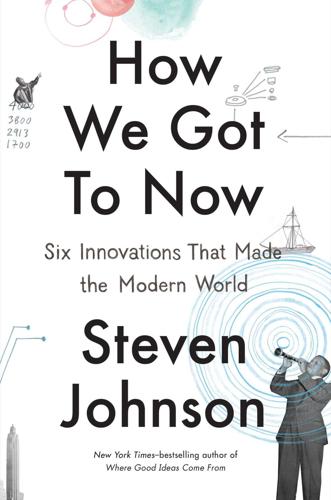
How We Got to Now: Six Innovations That Made the Modern World
by
Steven Johnson
Published 28 Sep 2014
(Rid the world of these modern clocks, and the much vilified practice of high-frequency trading would disappear in a nanosecond.) Every time you glance down at your smartphone to check your location, you are unwittingly consulting a network of twenty-four atomic clocks housed in satellites in low-earth orbit above you. Those satellites are sending out the most elemental of signals, again and again, in perpetuity: the time is 11:48:25.084738 . . . the time is 11:48:25.084739. . . . When your phone tries to figure out its location, it pulls down at least three of these time stamps from satellites, each reporting a slightly different time thanks to the duration it takes the signal to travel from satellite to the GPS receiver in your hand.
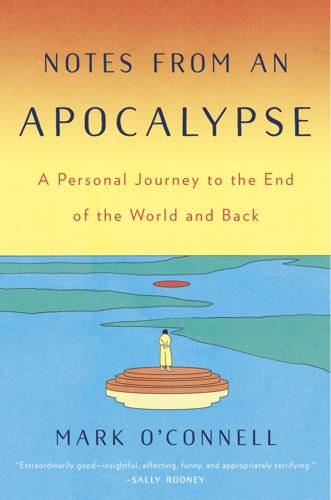
Notes From an Apocalypse: A Personal Journey to the End of the World and Back
by
Mark O'Connell
Published 13 Apr 2020
As often as not, when people were talking about Mars, they were talking about America. But then nobody was ever just talking about America, either, because America, famously, was not so much a country as an idea: it was, specifically, the idea of itself as being an idea. The topic was, in this way, always threatening to spiral off into the low Earth orbit of abstraction. Something like this point had been made decades ago by Carl Sagan, the beloved astronomer and host of the enduringly popular 1980s PBS show Cosmos. (Sagan was always being invoked by Mars enthusiasts—often, it seemed to me, as a kind of emotional shorthand for a childlike cosmic optimism that had been lost since the twilight of the space age.)
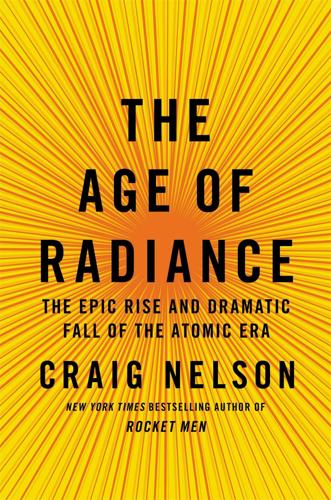
The Age of Radiance: The Epic Rise and Dramatic Fall of the Atomic Era
by
Craig Nelson
Published 25 Mar 2014
RTGs have since made their way into the satellites that explore the universe for NASA: Pioneer, Viking, Voyager, Galileo, Cassini, New Horizons, Curiosity—as well as in the experimental apparatus left on the surface of the moon by Apollos 12–17. Russia has sent about forty nuclear-powered reconnaissance satellites into low-earth orbit; one crashed into Canada on January 24, 1978, irradiating six hundred miles, while on April 21, 1964, an American satellite collapsed, releasing seventeen thousand curies from its SNAP over the skies of Madagascar. As fears of being incinerated by thermonuclear war subsided in the twilight of the Cold War, worries of an attack from a very different source intensified.
…
Instead of Mutual Assured Destruction, with Teller’s help the president could offer the nation Mutual Assured Survival with an atmospheric shield so powerful it would render all nuclear weapons obsolete. It is unclear to this day whether Teller explained to Reagan that all of this was based on enormous nuclear weapons floating continuously overhead in low-earth orbit. Just as Eisenhower had great hopes with Atoms for Peace, Reagan became enthralled with the Strategic Defense Initiative. But in many quarters, the news was not well received. After hearing the president announce his new program in a televised speech, Gorbachev met with the Kurchatov Institute of Atomic Energy’s deputy director, Yevgeny Velikhov, who told him that Russian physicists had tried for decades to create exactly the weapons Teller and Reagan were talking about, including the same space laser cannon, as well as antimissile rockets fired from satellites.
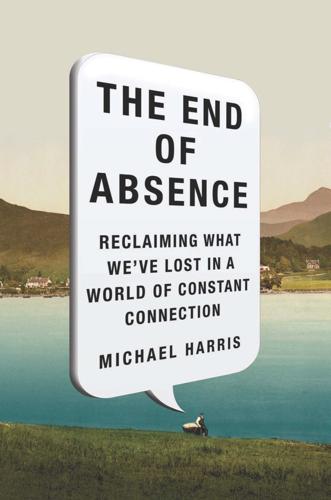
The End of Absence: Reclaiming What We've Lost in a World of Constant Connection
by
Michael Harris
Published 6 Aug 2014
Electricity grids will fail; some satellites will break down; aircraft passengers will be exposed to cancer-causing radiation; electronic equipment will malfunction; for a few days, global navigation satellite systems will be inoperable; cellular and emergency communication networks may fail; the earth’s atmosphere will expand, creating a drag on satellites in low earth orbit; satellite communication and high-frequency communication (used by long-distance aircraft) will probably not work for days. I daydream about a latter-day Carrington Event weirdly often, actually. (It’s pleasant to have something truly morbid to fix on while sitting on a subway, and if Milton isn’t doing the trick, then I switch to other celestial damnations.)

Cogs and Monsters: What Economics Is, and What It Should Be
by
Diane Coyle
Published 11 Oct 2021
A bid to build 300-metre-high microwave towers on England’s lovely Kent coast—about the same height as New York’s Chrysler Building—was rejected by the local council, however (Mackenzie 2019). New shortwave and satellite technologies are being developed. With about half the trades on financial markets now computerised HFT, this latest development conjures up the image of an algorithmic web of signals bouncing off low-earth orbit satellites, all for the financial markets to make more money faster off their clients. There is evidence that the so-called flash crash of 6 May 2010, when the Dow Jones share price index fell 600 points in 6 minutes only to recover fully 20 minutes later, was due to automated trading of this kind.

First Light: Switching on Stars at the Dawn of Time
by
Emma Chapman
Published 23 Feb 2021
With the Sun and Earth both behind it, the darkness of deep space is revealed. But … the telescope is awfully far away. With Hubble, when a fault with the mirror became apparent after launch, an admittedly complicated run of repairs carried out by astronauts ensured that it was fixed. Hubble, though, was close, in low Earth orbit. At only 547km (340 miles) above Earth, it wasn’t too much trouble to call a mechanic. In comparison, JWST will lie more than 1.5 million kilometres away, four times as far as the Moon, and far, far beyond where any NASA breakdown cover is valid. Due to the need for perfection, each part of JWST has to be tested, retested and checked once more to ensure that everything will go to plan on the big day.

Fully Automated Luxury Communism
by
Aaron Bastani
Published 10 Jun 2019
A viable private market in off-world transport was ready to arrive. Since then a glut of newcomers have emerged in the quest to push prices for space transport lower still. While they lack the means to conduct manned missions of their own, by providing cheap, weekly launch opportunities for low-Earth orbit, they will enter the slipstream of larger companies like SpaceX, Boeing and Jeff Bezos’s Blue Origin. One such company is Rocket Lab. Founded in New Zealand in 2009, it was the first private company in the Southern Hemisphere to send a booster rocket into space. Now based in the United States, its stated mission is to remove the barriers to mass space commerce by providing frequent, low-cost launch opportunities on its Electron booster rocket.

The Cardinal of the Kremlin
by
Tom Clancy
Published 2 Jan 1988
That means they're only going to accurate plus or minus two hundred forty meters for a geostationary satellite-of course, those targets are pretty stationary, and the movement factor could count either way." "How's that?" Ryan asked. "Well, on one hand, if you're hitting a moving target- and low-earth-orbit birds move across the sky pretty fast; something like eight thousand meters per second-there are fourteen hundred meters per degree of arc; so we're tracking a target that's moving about five degrees per second. Okay so far? Thermal blooming means that the laser is giving up a lot of its energy to the atmosphere.
…
They still have a problem with thermal blooming because they haven't learned how to copy our adaptive optics. They've gotten a lot of technology from the West, but so far they don't have that. Until they do, they can't use the ground-based laser as we have, that is, relaying the beam by orbiting mirror to a distant target. But what they have now can probably do great damage to a satellite in low-earth orbit. There are ways to protect satellites against that, of course, but it's the old battle between heavier armor and heavier warheads. The warhead usually wins in the end." "Which is why we should negotiate the weapons out of existence." Ernie Alien spoke for the first time. General Parks looked over to him with unconcealed irritation.

AIQ: How People and Machines Are Smarter Together
by
Nick Polson
and
James Scott
Published 14 May 2018
Hubble would later go on to use the pulsating-star technique to discover many more galaxies—or, as he put it, “Whole worlds, each of them a mighty universe, are strewn all over the sky … like the proverbial grains of sand on the beach.”7 Yet it was that first pulsating star that he found in Andromeda—known today as “Hubble variable 1,” or V1—that went down in history. Decades later, in 1990, when the space shuttle Discovery carried the Hubble Space Telescope into low Earth orbit, it also carried something whose value was entirely sentimental: a copy of Hubble’s original photograph of V1 from 1923.8 It was a photograph that made Hubble a household name and that changed the course of astronomy forever. But it was also a photograph whose significance Hubble could have seen only by standing on the shoulders of Henrietta Leavitt—for she was the one who showed Hubble, and everyone else, how to measure the size of the universe.
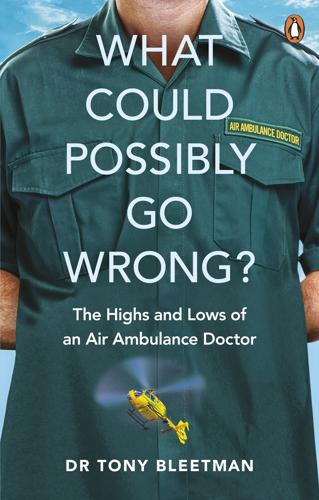
What Could Possibly Go Wrong?: The Highs and Lows of an Air Ambulance Doctor
by
Tony Bleetman
Published 2 Oct 2019
His foot was cold and there was no pulse in it. We had to straighten out his leg, get the bone inside where it belongs and hope that in doing so, we could restore his blood supply. I explained this to our man and told him all about ketamine. He resigned himself to his impending drug-induced flight into low earth orbit. Ketamine did its thing, our man remained propped up on his elbows with a glassy stare in his eyes, detached from all proceedings here on earth. Barry irrigated the protruding bone and surrounding area with copious amounts of saline and Betadine solution. I used a scalpel to enlarge the opening in the skin while Barry pulled hard on the foot and the bone fragment slipped back into place as the leg was straightened and the foot pulse was restored.

The End of Medicine: How Silicon Valley (And Naked Mice) Will Reboot Your Doctor
by
Andy Kessler
Published 12 Oct 2009
What they don’t tell you is that this dish was originally built to detect radio emissions from atmospheric nuclear explosions. Just as the final nut was tightened, the Atmospheric Test Ban Treaty was signed. Oops. It quickly found other important tasks, such as measuring intergalactic hydrogen clouds at L-band, communicating with and commanding the low earth-orbiting spacecraft system in UHF, and who knows how many top secret projects. As for me, I always appreciated the wide open space—I’m talking hundreds of acres here—on the western side of Stanford campus. On one of our hikes, I overheard two über-geeks behind me talking about the Bracewell Observatory and solar flares and what a shame it was that they were going to tear it down and something needed to be done about it, it was a crying shame, blah blah blah.

The Rise of Superman: Decoding the Science of Ultimate Human Performance
by
Steven Kotler
Published 4 Mar 2014
According to Virgin Galactic founder Richard Branson, if everything goes according to plan, the plan is to have paying customers going rocket man before 2015. This is why Baumgartner’s jump is critical. We’re going to space. That’s what’s next. Within a few years, human beings will be routinely visiting low-Earth orbit. In fact, Bigelow Aerospace, another private space company, is now developing an inflatable space hotel that’s scheduled for 2017 deployment. With these developments around the corner, having basic space evacuation procedures in place—including a supersonic-capable space suit—just seems to make sense.
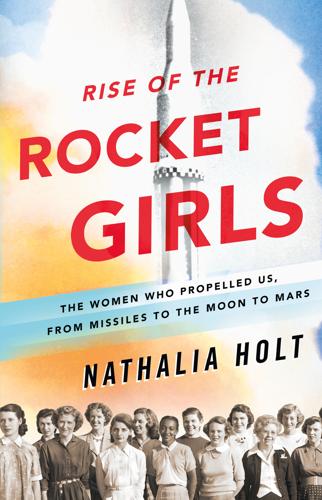
Rise of the Rocket Girls: The Women Who Propelled Us, From Missiles to the Moon to Mars
by
Nathalia Holt
Published 4 Apr 2016
The proposal belonged to a different era, one in which NASA was still expanding. However, the idea of the space shuttle appealed to Nixon. Unlike the space station and the crewed missions, the shuttle oozed practicality. It was a shift away from space exploration and toward application. With reusable rockets and a trajectory that wouldn’t extend beyond a low Earth orbit, it had the possibility of making space travel available to everyone. The idea behind it could be traced to Wernher von Braun’s vision for space discovery, termed the “von Braun paradigm” and first described in the 1950s. Bizarrely enough, this vision was rooted in von Braun’s World War II background.

Insane Mode: How Elon Musk's Tesla Sparked an Electric Revolution to End the Age of Oil
by
Hamish McKenzie
Published 30 Sep 2017
They didn’t know that someone could come along with enough money, enough intellect, and enough drive to upend everything the world thought it knew about electric cars. They didn’t know about Elon Musk. * * * As long as the laws of physics allow it, Musk believes it can be done. Before SpaceX, no private company had ever returned a spacecraft from low earth orbit. Before Tesla, few people believed it would be possible for a high-performance electric car to travel more than two hundred miles on a single charge of its battery. “One of Elon’s greatest skills is the ability to pass off his vision as a mandate from heaven,” Max Levchin, who cofounded PayPal with Musk, said in 2007.

Black Code: Inside the Battle for Cyberspace
by
Ronald J. Deibert
Published 13 May 2013
However, some intelligence observers speculate that U.S. and other signals intelligence agencies have capabilities to tap undersea fibre-optic cables by cutting into them and collecting information through specifically designed splitters. • • • Like undersea cables, satellites illustrate the fragile nature of cyberspace. In 2009, a defunct and wayward Russian satellite collided with an Iridium low Earth orbit satellite at a speed of over 40,000 kilometres per hour. The collision caused a massive cloud of space debris that still presents a major hazard. NASA’S Earth observation unit tracks as many as 8,000 space debris objects of ten centimetres or more that pose risks to operational satellites. (There are many smaller objects that present a hazard as well.)
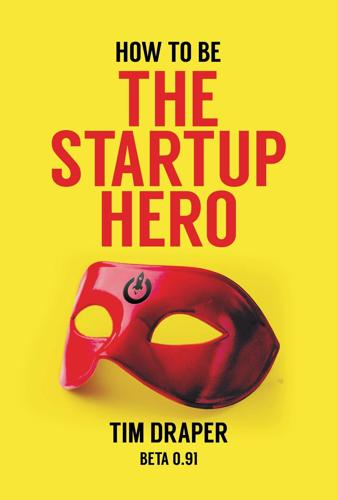
How to Be the Startup Hero: A Guide and Textbook for Entrepreneurs and Aspiring Entrepreneurs
by
Tim Draper
Published 18 Dec 2017
I put a team together with local Anchorage real estate businessman Jim Yarmon and fellow Harvard Business School alum Jim Lynch. The three of us agreed to put half the money in Alaska, and half in Silicon Valley. We called the fund Polaris Fund to give it local appeal, and we were off to the races. We made it work, funding a bone-stretching technology company (seemed painful, but it grew people’s bones), a low-Earth orbit satellite company, and the fish head splitter company as well as a few great Silicon Valley companies. It took a few years, but we ended up returning the $6 million to AIDEA and much more. Burt can now rest easy knowing that the money was well invested. This Polaris Fund in Alaska turned out to be the first of many network partners we would set up.
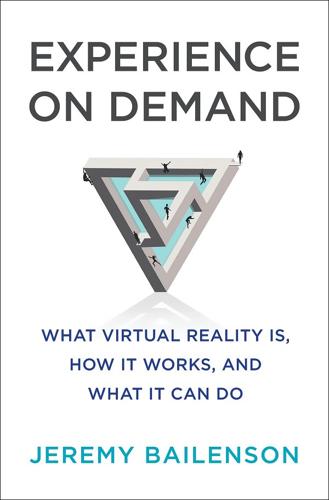
Experience on Demand: What Virtual Reality Is, How It Works, and What It Can Do
by
Jeremy Bailenson
Published 30 Jan 2018
Falconer et al., “Embodying self-compassion within virtual reality and its effects on patients with depression,” British Journal of Psychiatry 2 (2016): 74–80. 29. Ibid. 4. WORLDVIEW 1. Overview, documentary directed by Guy Reid, 2012; “What are the Noetic Sciences?,” Institute of Noetic Sciences, http://www.noetic.org/about/what- are-noetic-sciences. 2. In fact, a start-up VR company called SpaceVR has launched a satellite with a VR camera into low Earth orbit and will allow subscribers to gaze at real-time images of the Earth from space. 3. Leslie Kaufman, “Mr. Whipple Left it Out: Soft is Rough on Forests,” New York Times, February 25, 2009, http://www.nytimes.com/2009/02/26/science/earth/26charmin.html. 4. Mark Cleveland, Maria Kalamas, and Michel Laroche, “Shades of green: linking environmental locus of control and pro-environmental behaviors,” Journal of Consumer Marketing 29, no. 5 (May 2012): 293–305, 22 (2005): 198–212. 5.
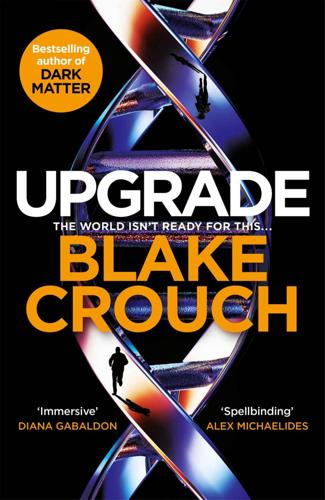
Upgrade
by
Blake Crouch
Published 6 Jul 2022
We stopped in Amarillo to charge the car batteries, grabbed breakfast at a roadside diner, and pushed on across the sunlit prairie. In New Mexico, the landscape turned arid. In the course of an hour, I saw four rockets launching to the southwest out of the spaceport near Truth or Consequences—billionaires spending their Christmas morning in low-Earth orbit. By lunchtime, we were climbing into the high desert near Santa Fe. The City Different, as they call it, was the second oldest city in America. On approach, Santa Fe hid in plain sight, the low-slung, earth-colored buildings blending quietly into the brown hills. We drove into the plaza and got a suite at an enormous adobe hotel called La Fonda.

Garbage Land: On the Secret Trail of Trash
by
Elizabeth Royte
Published 1 Jan 2005
Then suddenly, as we rounded a bend, the mound of Fresh Kills’ Section 6/7 rose before us. (The garbage at the landfill was heaped into four enormous mounds, called sections.) I had expected something massive—the size of the dump impresses every visitor, and few media accounts fail to mention that astronauts can see Fresh Kills from low Earth orbit. But from the water, Section 6/7 was just a steep hill jutting maybe a hundred feet above the deck of our bow, its knee-high brown grasses undulating in the breeze. A few dump trucks, burdened not with garbage but with dirt, trundled up switchbacks, black dots on the landscape. The air smelled lightly of methane.
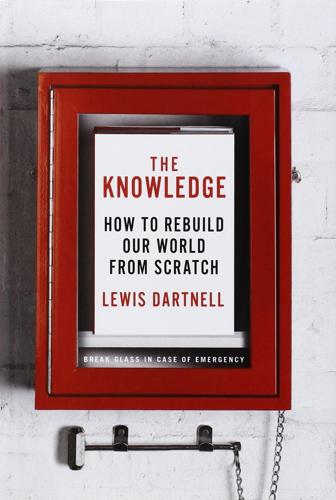
The Knowledge: How to Rebuild Our World From Scratch
by
Lewis Dartnell
Published 15 Apr 2014
Away from the cities, fleets of ghost ships will be adrift across the oceans, occasionally carried by the vagaries of wind and currents to ground themselves on a coastline, slicing open their bellies to bleed noxious slicks of fuel oil or releasing their load of containers onto the ocean currents like dandelion seeds in the wind. But perhaps the most spectacular shipwreck, if anyone happens to be in the right place at the right time to watch it, will be the return of one of humanity’s most ambitious constructions. The International Space Station is a giant 100-meter-wide edifice built over fourteen years in low Earth orbit: an impressive assemblage of pressurized modules, spindly struts, and dragonfly wings of solar panels. Although it soars 400 kilometers over our heads, the space station is not quite beyond the wispy upper reaches of the atmosphere, which exert an imperceptibly slight but unrelenting drag on the sprawling structure.
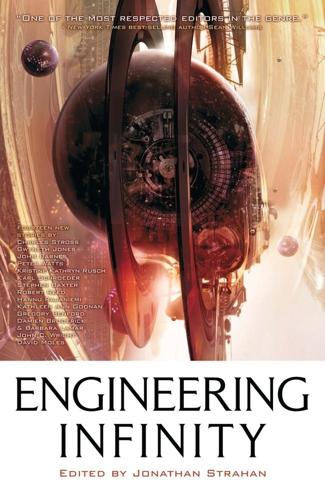
Engineering Infinity
by
Jonathan Strahan
Published 28 Dec 2010
He just nodded. "Then, when I was twelve, the Pakistani-Indian war happened and they blew up each other's satellites. All that debris from the explosions is going to be up there for centuries! You can't get a manned spacecraft through that cloud, it's like shrapnel. Hell, they haven't even cleared low Earth orbit to restart the orbital tourist industry. I'll never get to really go there! None of us will. We're never gettin' off this sinkhole." Gennady scowled at the ceiling. "I hope you're wrong." "Welcome to the life of the last man to drive on Mars." Ambrose dragged the tufted covers back from the bed.
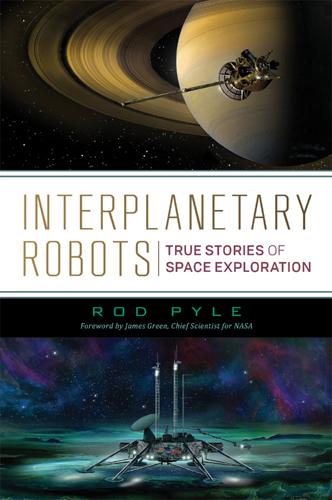
Interplanetary Robots
by
Rod Pyle
In its final iteration, two spacecraft would be launched on two Proton boosters. By the mid-1970s, the Proton could claim a launch success rate of 90 percent, which must have been a stunning relief after the fiasco of the N1 booster (which had a failure rate of 100 percent). The Proton was capable of lifting 50,000 pounds to low Earth orbit, but two would still be required for this complicated and audacious mission. Fig. 27.2. The Mars 5M sample-return lander. The inverted umbrella structure at the bottom would have replaced a parachute to slow the massive machine's descent. Image from NASA. The lander alone would still be a porker at almost 16,600 pounds—far heavier than any previous robotic craft.
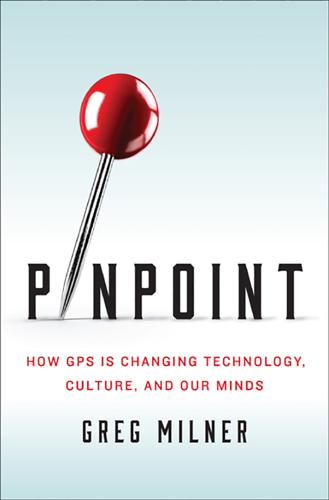
Pinpoint: How GPS Is Changing Our World
by
Greg Milner
Published 4 May 2016
We’ve learned from watching over the years that for any given location on the planet there’s an amount [of vapor] above which there is a very good chance it’s going to begin falling back as precipitation.” The most advanced form of GPS-enabled meteorology (Holub calls it the “Holy Grail of weather forecasting”) involves a space-based technique called radio occultation. It measures the time required for the signal to travel from the GPS satellite to a GPS receiver on a satellite in low-Earth orbit. That calculation creates a profile of water vapor distributed over several hundred miles. Even the “wasted” part of a GPS signal can be useful. When the GPS signal reaches a GPS receiver on the ground, some of it travels directly to the antenna, and some of it hits the ground near the receiver and bounces back.
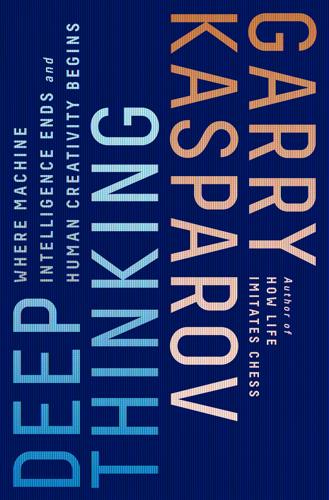
Deep Thinking: Where Machine Intelligence Ends and Human Creativity Begins
by
Garry Kasparov
Published 1 May 2017
I again got a very good position and this time won a pawn to enter another queen plus knight endgame. But Genius found a long series of improbable queen maneuvers that prevented me from advancing my pawns. Head in my hands, I had to agree to a draw. I was out. It was rapid chess, yes, but a serious event and the machine had played quite well in parts. Still no moon landing, but low Earth orbit had been achieved. Both games with Genius reflected the unique nature of computer chess, especially the second game. Chess players have the most trouble visualizing the moves of knights because their move is unlike anything else in the game, an L-shaped hop instead of a predictable straight line like the other pieces.
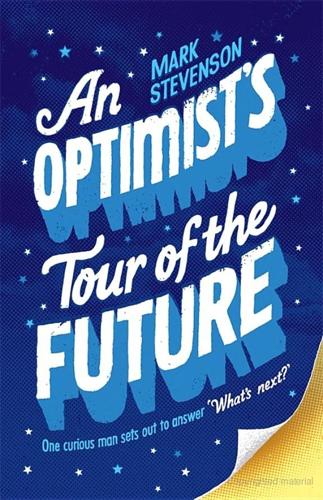
An Optimist's Tour of the Future
by
Mark Stevenson
Published 4 Dec 2010
Before leaving for America I’d spent a mind-blowing afternoon with Xavier Claramunt of Barcelona-based Galactic Suite, who claims he’ll have his first two paying guests in a space hotel by 2012. ‘Our philosophy is the socialisation of space,’ he’d told me over gin and tonics in the bar below his office. ‘In fifty years we’ll have sixty hotels around the world in Low Earth orbit. Space is nearer than people know. In the next fifteen or twenty years, space will be like going to the seaside. I am sure you will go to space.’ Xavier is also team leader of the Barcelona Moon team competing for the Google Lunar X prize, an international competition for privately funded companies ‘to safely land a robot on the surface of the Moon, travel five hundred metres over the lunar surface, and send images and data back to the Earth’ (a competition in which over twenty teams are taking part).
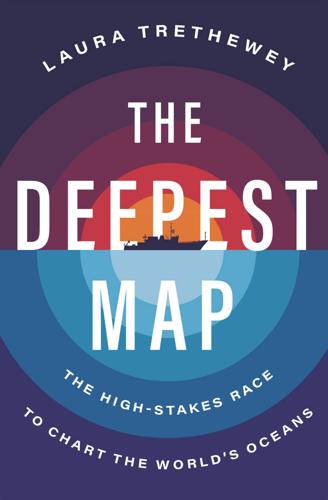
The Deepest Map
by
Laura Trethewey
Published 15 May 2023
* In the mining industry, the metal deposits on hydrothermal vents are referred to as either “seafloor massive sulfides” or “polymetallic sulfides,” and those on seamounts as “cobalt-rich ferromanganese crusts” or “polymetallic crusts.” * In 2022, Russia announced that it would quit the International Space Station after 2024—a sign that low Earth orbit may have exited the early collaborative period and entered the next competitive phase in exploration: https://www.cnn.com/2022/07/26/world/russia-quit-iss-scn/index.html.
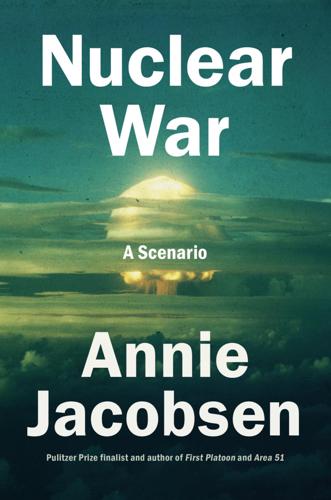
Nuclear War: A Scenario
by
Annie Jacobsen
Published 25 Mar 2024
GO TO NOTE REFERENCE IN TEXT more than 9,000: “United States Space Command, Presentation to the Senate Armed Services Committee, U.S. Senate,” Statement of General James H. Dickinson, Commander, United States Space Command, March 9, 2023. “As of this year there are 8,225 satellites in low Earth orbit and nearly 1,000 satellites in geosynchronous Earth orbit (GEO).” Different numbers abound. In April 2022 the Outer Space Objects Index, United Nations Office for Outer Space Affairs, put the number at 8,261—of which 4,852 satellites are active—as being an increase of 11.84 percent from the year before.
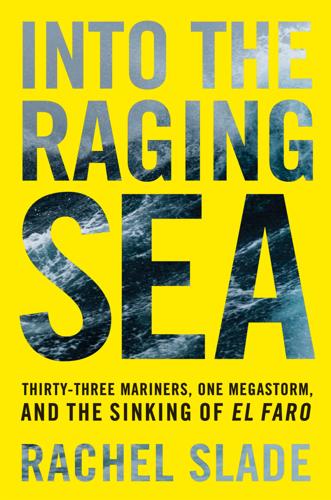
Into the Raging Sea
by
Rachel Slade
Published 4 Apr 2018
It was an older model that hadn’t been updated since it was installed nearly a decade earlier. Instead, it eked out a few distress pings between 7:36 a.m. and 7:59 a.m.—read as a “406 unlocated alert”—which the coast guard picked up, but couldn’t effectively use. To accurately pinpoint El Faro’s position, low earth-orbiting satellites would have had to pass above the ship while its EPIRB was pinging so that they could use the Doppler frequency shift to estimate the its location. In the twenty-four critical minutes that El Faro’s EPIRB pinged and then vanished forever, no satellites were in range. This would prove one of the most frustrating hurdles in the massive search-and-rescue mission to come.

Boom: Bubbles and the End of Stagnation
by
Byrne Hobart
and
Tobias Huber
Published 29 Oct 2024
And for Apollo, it meant that instead of getting to the Moon “soon” or “as quickly as possible,” there was a date after which it would be too late. 174 Charles Fishman, One Giant Leap: The Impossible Mission that Flew Us to the Moon (New York City: Simon & Schuster, 2020), 10. 175 Thiel and Masters, Zero to One, 68. 176 The Defense Department reacted to Sputnik by approving funding to start the Army’s Explorers satellite program, which had initially been rejected in favor of the US Navy’s Vanguard project (which intended to launch the first artificial satellite into low-Earth orbit using a Vanguard rocket). Explorers operated in parallel with Vanguard, which failed to launch several of its rockets. Before he became involved with the Saturn I project, which preceded Apollo, aerospace engineer and Apollo program architect Wernher von Braun and his team worked on the Explorers Program. 177 Tom Lehrer’s 1965 live album That Was the Year That Was includes a song, “Wernher von Braun,” that opens with a monologue about spending “20 billion dollars of your money to put some clown on the Moon.”
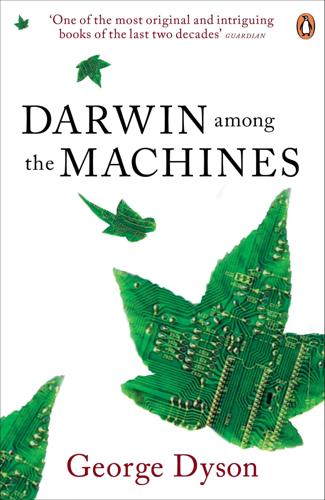
Darwin Among the Machines
by
George Dyson
Published 28 Mar 2012
“Cut the range in half, and the number of users that can be supported is [quadrupled]. Cut the range by a factor of ten, and 100 times as many users can be served. . . . In other words, a mixture of terrestrial links plus shorter range radio links has the effect of increasing by orders of magnitude the usable frequency spectrum.”30 While technologies such as low-earth-orbit satellite networks have received wider attention, Baran has been working to eliminate telecommunications bottlenecks in down-to-earth ways. The growth of a communications network, like any other arborescent, dendritic system, is driven by what happens at the root hairs, the leaf tips, the nerve endings, or, in telecommunications jargon, the network tails.

Whole Earth Discipline: An Ecopragmatist Manifesto
by
Stewart Brand
Published 15 Mar 2009
Named the Deep Space Climate Observatory (DSCOVR), it would measure variations in Earth’s ozone levels, aerosols, water vapor, cloud thickness, and the reflected and emitted radiation—the total energy budget—of the whole planet. “DSCOVR would offer a global, rather than myopic, perspective of the planet,” said the mission’s principal investigator, Francisco Valero, of Scripps Institution of Oceanography. (I can imagine Jacques Cousteau cheering.) It would also calibrate the instrument readings from all the low-Earth-orbit satellites that we currently rely on. Still Republican-dominated, Congress approved the money—$100 million—and the satellite was built, ready for launch in 2001. But between the construction and the launch there was an election. The incoming Bush administration was hostile to Gore, to science in general, and to climate science in particular.
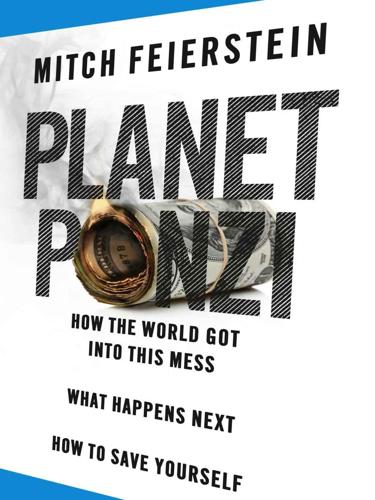
Planet Ponzi
by
Mitch Feierstein
Published 2 Feb 2012
A trillion is a million million, so three trillion dollars—which is what that ‘net outlays’ figure really means—would form a tower well over 12,000,000 feet high. That’s a tower approximately 10,000 times as high as the Empire State Building; a tower whose middle and lower sections would risk damage from satellites in low earth orbit—and whose upper sections would lie well out of their range.6 Additionally, of course, the complexity and non-transparency of the various bailout programs make it hard to keep tabs on their cost. Take another look at that table. In the last row, you’ll notice that $7,621 billion has been guaranteed primarily via the FHFA and the FHLB guarantees.

Effendi
by
Jon Courtenay Grimwood
Published 1 Jan 2002
The safe’s entrance had featured antique defences: tear gas between inner and outer layers, tasers positioned down both sides of the frame, all the stuff that putting a gun to the wounded suit’s head had miraculously disabled. But the trapdoor at the back, that had tripped an alarm satellite in low-earth orbit. And half the intelligence agencies in Europe were busy going ape-shit . . . It looked like one of them had arrived. Climbing the first twist of stairs was easy. More so since Colonel Abad showed Avatar how to adjust the spectacles to infrared. The cold the Colonel could do nothing about, except get Avatar back to the warmth of an upper deck as soon as possible.

Apollo 8: The Thrilling Story of the First Mission to the Moon
by
Jeffrey Kluger
Published 15 May 2017
Overhead, Borman and Lovell had not been able to see the brief fire that had lit and died on pad 19. Elliot See radioed the development up to their spacecraft. “They got an ignition and a hold kill right afterward,” See said, using the crisp, technical phrasing that the moment called for. Lovell and Borman looked at each other bleakly. They were still alone in low-Earth orbit, and still awaiting the promised visitors. “Roger,” Lovell responded. “This is 7, your friendly target vehicle, standing by.” * * * President Lyndon Johnson was already in a foul temper when the news broke that a Gemini 6 mission had flopped yet again. The morning papers held nothing but bad news, with the New York Times reporting that congressional Republicans and five Republican governors had issued a unanimous declaration warning that Johnson’s escalating conflict in Vietnam was starting to look like “an endless Korean-style jungle war.”
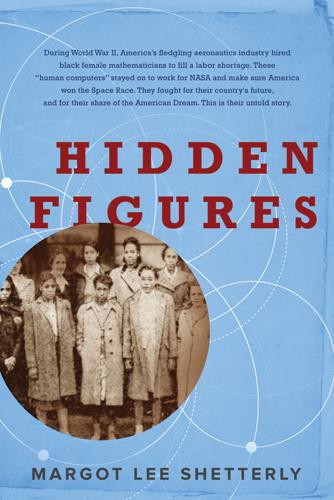
Hidden Figures
by
Margot Lee Shetterly
Published 11 Aug 2016
Any craft that traveled into space first had to traverse the layers of Earth’s atmosphere, accelerating through the sound barrier and increasing numbers on the Mach speed dial, before escaping the pull of Earth’s gravity and settling into the eighteen-thousand-mile-per-hour speed that locked objects into low Earth orbit, following a circuit of between 134 and 584 miles above the planet. On the return trip, the vehicle skidded through the friction of the increasingly dense atmosphere, building up heat that could reach 3,000 degrees Fahrenheit. NACA engineer Harvey Allen discovered, somewhat counterintuitively, that although the most aerodynamically streamlined shapes were best for slipping out of the atmosphere, a blunt body that increased rather than decreased air resistance was best for dissipating the extreme temperatures on the way back down.

Think Like a Rocket Scientist: Simple Strategies You Can Use to Make Giant Leaps in Work and Life
by
Ozan Varol
Published 13 Apr 2020
In 1994, when this episode aired, the heyday of human space exploration had become a distant memory. It took a dizzying six and a half decades from the Wright brothers’ first powered flight in 1903 to humankind’s first footsteps on the Moon in 1969. Yet, in the next five decades, we stopped looking up. We planted a flag and returned home, preferring to send humans into low Earth orbit for repeated trips to the International Space Station. For many, after watching Apollo astronauts brave the roughly 239,000-mile voyage to the Moon, seeing astronauts fly 240 miles up to the station was as thrilling as “watching Columbus sail to Ibiza.”1 Politicians used spaceflight for political ends, effectively hanging a guillotine over NASA’s head.
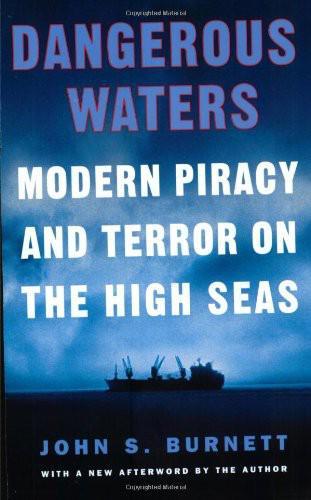
Dangerous Waters: Modern Piracy and Terror on the High Seas
by
John S. Burnett
Published 1 Jan 2002
The unit is attached and wired secretly to the ship without captain or crew knowing its whereabouts or, in some cases, that it is even aboard the ship.16 Based on the same principal used to track wolves in Montana or whales in the Pacific, the transponder automatically sends a location signal to low earth-orbiting satellites that is interpreted and relayed as a position report to the shipping company’s computers. Although the ship’s master routinely sends the vessel’s location, the device provides a backup in case the captain is unable to transmit his daily report—or in case a ship is attacked. (While initially designed in response to the growing number of hijackings, the U.S.
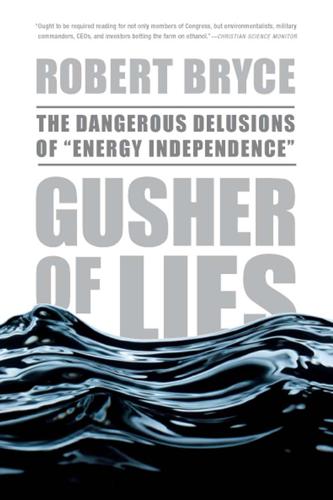
Gusher of Lies: The Dangerous Delusions of Energy Independence
by
Robert Bryce
Published 16 Mar 2011
Eight years later, a previously unknown American named Charles Lindbergh collected that prize.67 More recently, aviation whiz Burt Rutan, backed by billionaire Paul Allen, collected the $10-million Ansari X Prize, which was offered to the first privately built vehicle that could fly to the edge of space, return to earth, and repeat the feat within two weeks. In 2004, their creation, SpaceShipOne, made two trips into low-earth orbit, and Rutan and Allen claimed the $10-million prize. In doing so, they ushered in an era of privately financed spaceflight.68 In early 2007, British billionaire Richard Branson offered a prize (called the Virgin Earth Challenge) that relates directly to energy usage and carbon dioxide emissions: He offered $25 million to anyone who could invent a technology that would remove 1 billion tons of carbon dioxide per year from the atmosphere.69 And while Branson’s prize is laudable, a better solution would be one that prevents the release of carbon dioxide.

Nexus
by
Ramez Naam
Published 16 Dec 2012
The high seas and surface sounds of crashing waves made the ship effectively invisible. Still, dumb luck had killed plenty of men. His crew was on constant alert. Atop the conning tower, a directional maser powered through the monsoon rain and clouds, bouncing a narrow beam of data off a constellation of low-earth orbit satellites, hopping from one to the next as they hurtled through the sky at eight kilometers a second. Unless something should fly directly into that narrow beam, the uplink was undetectable. Two decks below the bridge, in a cramped control center covered in displays, Garrett Nichols analyzed data Cataranes had produced from the walk down Sukchai Market.
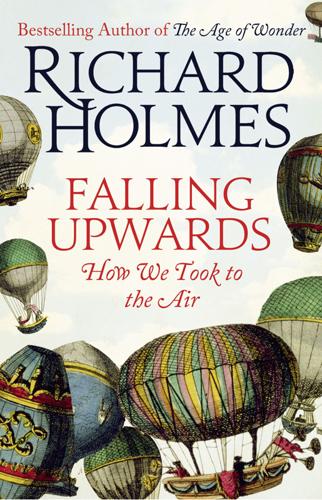
Falling Upwards: How We Took to the Air
by
Richard Holmes
Published 24 Apr 2013
But in general the sustaining troposphere (or ‘biosphere’) is not thick. Moreover, the upper limit of the ionosphere, where true planetary space begins, is only slightly ‘higher’ above the surface of the earth than the distance between London and Paris, or New York and Washington. The so-called ‘low-earth’ orbits of the Hubble Space Telescope and the International Space Station remain here, on the edge of the ionosphere, around three hundred miles up. Such man-made satellites (approximately three thousand of them in 2012) represent perhaps the ultimate metamorphosis, and historic destiny, of the balloon.

Entangled Life: How Fungi Make Our Worlds, Change Our Minds & Shape Our Futures
by
Merlin Sheldrake
Published 11 May 2020
Jones MP, Lawrie AC, Huynh TT, Morrison PD, Mautner A, Bismarck A, John S. 2019. Agricultural by-product suitability for the production of chitinous composites and nanofibers. Process Biochemistry 80: 95–102. Jönsson KI, Rabbow E, Schill RO, Harms-Ringdahl M, Rettberg P. 2008. Tardigrades survive exposure to space in low Earth orbit. Current Biology 18: R729–R731. Jönsson KI, Wojcik A. 2017. Tolerance to X-rays and heavy ions (Fe, He) in the tardigrade Richtersius coronifer and the bdelloid rotifer Mniobia russeola. Astrobiology 17: 163–67. Kaminsky LM, Trexler RV, Malik RJ, Hockett KL, Bell TH. 2018. The inherent conflicts in developing soil microbial inoculants.

The Wires of War: Technology and the Global Struggle for Power
by
Jacob Helberg
Published 11 Oct 2021
And here, too, China’s leaders are quite literally reaching for the stars. Roughly 2,000 Internet satellites orbit the earth, descendants of a Bell Labs module launched in 1962. Futuristic as they may seem, satellites are actually an imperfect alternative to underwater and underground cables for moving data. Because signals must travel about 22,000 miles into low-earth orbit and back again, the “latency”—the time it takes to transmit data—can be up to twelve times slower than fiber-optic connections. Signals can even be impacted by bad weather, a phenomenon known as “rain fade.” Satellites carry just a fraction—only 0.37 percent—of online communications,83 though that may be changing.

Endurance: A Year in Space, a Lifetime of Discovery
by
Scott Kelly
and
Margaret Lazarus Dean
Published 14 Aug 2017
The Russian space agency must investigate what went wrong and make sure there won’t be a recurrence. That will interfere with our schedule up here, but no one wants to fly on a Soyuz that’s going to do the same thing this Progress did. It would make for a horrible death, spinning out of control in low Earth orbit knowing you will soon be dead from CO2 asphyxiation or oxygen deprivation, after which our corpses would orbit the Earth until they burn up in the atmosphere months later. I finish making all the connections on the urine processor. Some of the cargo that was lost on Progress was fresh water, and unless we can make our own, the six of us won’t last long.

Vertical: The City From Satellites to Bunkers
by
Stephen Graham
Published 8 Nov 2016
See David Shim, ‘Seeing from Above: The Geopolitics of Satellite Vision and North Korea’, GIGA Institute of Asian Studies, August 2012, available at http://giga.hamburg/de/. 17Benjamin S. Lambeth, Mastering the Ultimate High Ground: Next Steps in the Military Uses of Space, Santa Monica, CA: RAND Corp., 1999. This ‘high ground’ of terrestrial space is split into three zones. Low Earth orbits (LEOs), between 150 and 2,000 km up, are dominated by fast-moving reconnaissance and communications satellites and inhabited craft for living astronauts. Here orbit the latest reconnaissance satellites – such as the US GeoEye-1, which can spot objects on Earth that are only 30 to 40 cm in size.
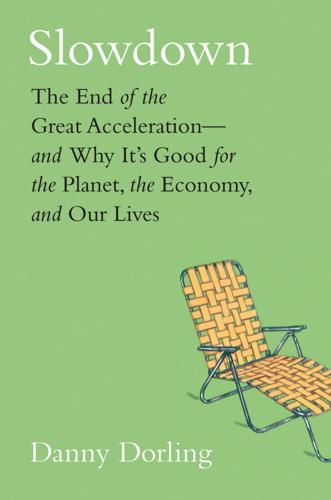
Slowdown: The End of the Great Acceleration―and Why It’s Good for the Planet, the Economy, and Our Lives
by
Danny Dorling
and
Kirsten McClure
Published 18 May 2020
Although we may be planning to build spaceports—the U.K. government committed £2 million in 2018 toward their development—we know in our heart of hearts that these are not going to be the next great leap forward.1 The U.S. space shuttle program was supposed to be an even greater leap forward, but it actually produced a craft that never left low Earth orbit. If we thought there were possibilities for exploration, we would be spending much more public money in preparation. We subconsciously know we are slowing down. For another example of why the slowdown is real, think of 1880s sound-recording wax cylinders replaced by 78 rpm shellac-based records, which in turn were replaced by vinyl records, then superseded by tape, then by compact discs, which were soon replaced by sound files, and then by sound stored on the cloud (server farms housed in the middle of nowhere, preferably a cold nowhere).

Do You Dream of Terra-Two?
by
Temi Oh
Published 15 Mar 2019
ASTRID 08. 02.13 THE FIRST AMERICAN TO perform a spacewalk was Lieutenant Colonel Ed White, on a mission for Gemini IV. Unlike modern spacewalks, which could last for hours, he had only twenty minutes until he ran out of oxygen. What had it been like? Astrid always wondered. The first American to behold his home from low earth orbit: the California coast, the unobscured sun. People said that those were the shortest twenty minutes of his whole life. Right at the end, when his time was running out, he found he didn’t want to leave. He stalled, staring back at the Earth. The beauty of it cut him to the bone, but he was running out of time.

AI 2041: Ten Visions for Our Future
by
Kai-Fu Lee
and
Qiufan Chen
Published 13 Sep 2021
The Special Advisory Group for Planetary Emergency Services submitted their recommendations to the UN. They had been founded in 2025 and were composed of hundreds of experts across disciplines, aiming to address issues that required global collaboration, such as climate change and terrorist attacks. They called for military satellites in low-Earth orbit to shoot down the rockets with lasers before the weapons entered the stratosphere. The plan required a vote by representatives of every country. Following it would minimize global damage, but a high-altitude nuclear explosion would still cause hundreds of thousands of casualties on the ground.

The Dream of the Iron Dragon
by
Robert Kroese
Published 6 Dec 2017
Yeah, so, it looks like we’re going to hang around for a few days to see if we can make contact with you. If there’s any chance of… I don’t know. Your suit transmitters probably won’t work. Maybe a signal fire? We’re scanning all of Norway and Denmark, so if you make a big enough fire, we’ll see it. We’re in low Earth orbit, just passing over the Atlantic on the way toward you now. I mean, assuming you’re still somewhere in Europe. Orbital period is one hundred nineteen minutes, so we’ll be directly over Norway soon. I’ll transmit again shortly.” “We’ve got to send the signal,” Reyes said. “All right,” Gabe replied, getting out of his tent.
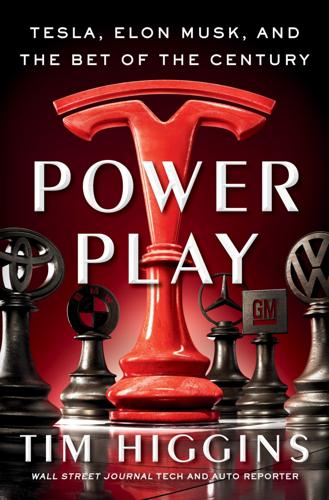
Power Play: Tesla, Elon Musk, and the Bet of the Century
by
Tim Higgins
Published 2 Aug 2021
“In the ’60s, we went from basically nothing, not being able to put anyone into space to putting people on the moon and developing all the technology from scratch to do that, and yet in the ’70s, the ’80s and the ’90s we’ve kind of gone sideways and we’re currently in a situation where we can’t even put a person into low-earth orbit,” Musk said. It didn’t align with other technologies, such as microchips and cell phones, which had only gotten exponentially better and cheaper with time. Why had space technology languished? What Musk said struck a chord with Straubel, who had been thinking similar things about the auto industry.

A World on the Wing: The Global Odyssey of Migratory Birds
by
Scott Weidensaul
Published 29 Mar 2021
During the course of our conversation, Farnsworth mentioned the launch, a few weeks earlier, of the first of what is expected to be 12,000 small, internet-servicing satellites from Elon Musk’s company SpaceX, a project called Starlink with the promise—or threat, depending on your perspective—of creating an artificial galaxy blanketing the sky. Astronomers went ballistic when the first of these small, brilliant objects were lofted into low-earth orbit in 2019, concerned that the eventual “mega-constellation” (as it’s been described) would interfere with their ability to study the stars, and alter the character of the natural sky to everyone, everywhere on the planet’s surface—and that was before Musk said he was seeking permission to add a further 30,000 satellites to the total.
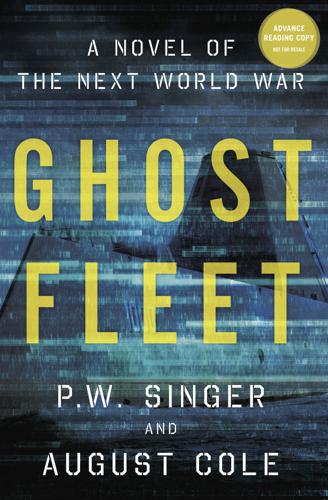
Ghost Fleet: A Novel of the Next World War
by
P. W. Singer
and
August Cole
Published 28 Jun 2015
Navy base in Virginia and the fact that he hadn’t given a last name or rank. “SEAL Team Six for an extraction team? I guess it’s me that should be honored.” “I believe there may be some confusion, Major Doyle,” said Duncan. “Who said we were your extraction team? We’re the advance party.” Tallyho, Low Earth Orbit Sir Aeric K. Cavendish stared at the helmet in his lap and then bounced it on his knee like a soccer ball. The helmet floated away slowly and then rebounded against what would have been the ceiling if there were an up or a down here. It was his first time in space, and he was enjoying it far more than his time in goal in the match with Leeds, heretofore the peak of his pleasure-rich existence as a tycoon.

Connectography: Mapping the Future of Global Civilization
by
Parag Khanna
Published 18 Apr 2016
By some estimates, mankind will build more infrastructures in the next forty years alone than it has in the past four thousand. The interstate puzzle thus gives way to a lattice of infrastructure circuitry. The world is starting to look a lot like the Internet. SEEING IS BELIEVING Astronauts in low Earth orbit (about 215 kilometers high) have snapped stunning pictures of our majestic planet. They’ve captured natural features like oceans, mountains, ice caps, and glaciers, and even caught glimpses of man-made structures. It turns out that the Great Wall of China and the Great Pyramid of Giza in Egypt are rather difficult to discern without high-performance zoom lenses, but more modern engineering such as megacities, ultra-long bridges, and straight desert highways are easy to spot.

The Vortex: A True Story of History's Deadliest Storm, an Unspeakable War, and Liberation
by
Scott Carney
and
Jason Miklian
Published 28 Mar 2022
Yahya had not only to get Mao to the table but also fast-track elections before the riots started up again, lest he be deposed like so many of his predecessors. Yahya figured he had a year, a year and a half at most. 5 Neil Frank NATIONAL HURRICANE CENTER, MIAMI, FLORIDA JANUARY 23, 1970 Ten months before landfall A few years ago, Neil Frank would have marveled at the images that the ESSA-8 sent to him from low-earth orbit. But at this particular moment he was just frustrated. The satellite circled the earth every 114.3 minutes and could snap and transmit a total of eight photos a day from a band across the Northern Hemisphere. Each image covered an area of two thousand square miles, and each pixel represented about two miles—a resolution only a weatherman could appreciate.

Track Changes
by
Matthew G. Kirschenbaum
Published 1 May 2016
He was interested in using the system for his taxes and other financials, as a correspondence database, and, most intriguingly, as a simulation engine to assist with world-building in his science fiction.40 He wrote what is known as “hard” science fiction, meaning that the stories were grounded in as much scientific fact or plausible scientific theory as was possible. What percentage of a planet’s atmosphere consisted of oxygen? What force did gravity exert on an object of such-and-such a density and mass? What was a rocket’s trajectory for achieving a low-Earth orbit? All of these details mattered, and many of his readers could tell the difference between the real thing and hokum. Pournelle thus immediately grasped the potential of the computer as a world-building tool, and learned enough BASIC and FORTRAN programming to transfer the formulas he worked out on a pocket calculator to a set of custom programs for his system.41 (Despite his engineering background, he claims he found the prospect of actually learning programming “terrifying.”)42 Other writers grasped this potential as well: Frank Herbert, for example, imagined a seamless integration between a simulation engine (complete with visual renderings) and a text editor, whereby details from his planetary models could be made to populate his prose on demand: “You will know when it’s spring on Planet X or when the tides rise four hundred feet on planet Y.”43 Such examples are tantalizing, and the close integration of simulation and modeling with word processing seems to me one of the richest roads-not-taken in thinking about the potential of computers as writing platforms, not just for science fiction but for all manner of genres demanding close correspondences between storyline and setting, words and worlds.44 The first beneficiary of Pournelle’s proselytizing was his neighbor and longtime writing partner Larry Niven, also a highly regard science fiction writer in his own right (his 1970 Ringworld had won the Hugo Award).
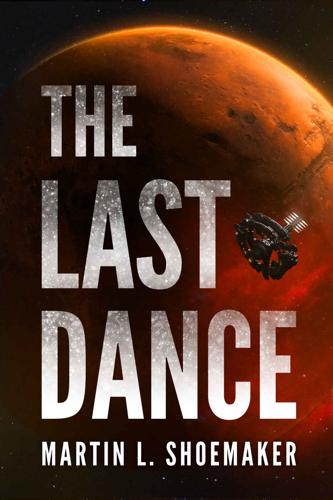
The Last Dance
by
Martin L. Shoemaker
Published 2 Nov 2019
So Carver and I ruined our careers trying to protect his, and then the idiot threw it away anyway.” She sighed, and continued, “We could find work with transport companies, and there were lots of consulting opportunities for designing private Mars missions; but we were done with Initiative missions. We were both decommissioned. I was sure I would never leave low Earth orbit again. Aames was a wreck. He spent a year arguing with officials and avoiding reporters. And drinking, lots of those Brazilian caipirinhas he likes. That got him drunk enough to get into a bad marriage. Not that Hannah was a bad woman, but Aames was a lousy husband. Sullen, bitter Aames is even worse than ordinary Aames.

The Disappearing Act
by
Florence de Changy
Published 24 Dec 2020
The response she received seemed to indicate that the NSA was in possession of documents but that they were classified.4 As early as May 2014, Timothy Akers, a British treasure hunter with a background as a marine archaeologist, was also crying foul to the Southern Indian Ocean story. Unlike the self-taught newbies ‘nodders’, Akers, then in his mid-50s, had been refining his own software, combining different layers of the light spectrum to scan imagery of land and seas, for decades. Initially using imagery from the low earth orbit satellite Landsat 5, his company Merlin Burrows already had a few famous finds to its credit, ‘Viking longboats, Chinese junks, sunken Bugatti …’. But when he claimed to have spotted numerous plane debris and even bodies in the South China Sea following the loss of MH370, he was essentially ignored.

Failure Is Not an Option: Mission Control From Mercury to Apollo 13 and Beyond
by
Gene Kranz
Published 7 Jan 2000
My team started the countdown and checked out the MCC, then handed over to Griffin’s team for the CSM and Saturn systems testing. Lunney picked up for the launch, the handoffs between the three teams going flawlessly. Shortly after 10:00 A.M. in Houston, the race to the Moon got the wave from the starting flag. The launch went smoothly, the Saturn rocket blasting the CSM into a low Earth orbit. To television viewers, as the engines ignited, there appeared to be one heart-stopping moment of hesitation. But because Apollo and its two-stage launch rocket weighed 1.3 million pounds, the launch acceleration was gradual, taking ten seconds to clear the tower. The late morning liftoff dictated the orbital shift schedule.

Smart Grid Standards
by
Takuro Sato
Published 17 Nov 2015
Medium Earth Orbit (MEO) ranges from 2000 to 35 000 km and the orbital period is up to 10 h, thus requiring fewer satellites in constellation for the coverage of the whole Earth. The MEO satellite system is more expensive on the terminal side for two-way communication. The widely used Global Positioning System (GPS) system is served by a constellation of GPS satellites at nearly 27 000 km altitude. Low Earth Orbit (LEO) is between 160 and 2000 km of altitude and the LEO satellites do not require terminals with antenna pointing, which makes these systems very suitable for handheld and portable terminals. As the orbital period is very short (less than 2 h), LEO satellites create satellite constellations, which consists of tens of satellites to deliver required coverage.
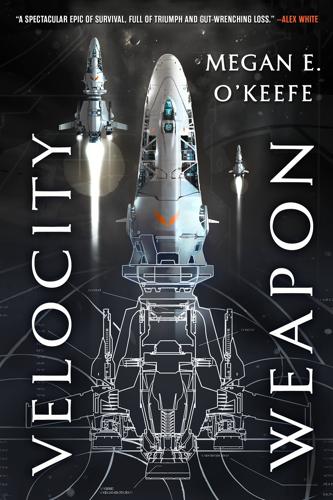
Velocity Weapon
by
Megan E. O'Keefe
Published 10 Jun 2019
Ionised air crackled around his imagined monstrous body in sudden searing beams along which, milliseconds later, lightning bolts fizzed and struck. Tactical updates flickered across his sight. Higher above, the heavy hardware—helicopters, fighter jets and hovering aerial drone platforms—loitered on station and now and then called down their ordnance with casual precision. Higher still, in low Earth orbit, fleets of tumbling battle-sats jockeyed and jousted, spearing with laser bursts that left their batteries drained and their signals dead. Swarms of camera drones blipped fragmented views to millimetre-scale camouflaged receiver beads littered in thousands across the contested ground. From these, through proxies, firewalls, relays and feints the images and messages flashed, converging to an onsite router whose radio waves tickled the spike, a metal stud in the back of Carlos’s skull.
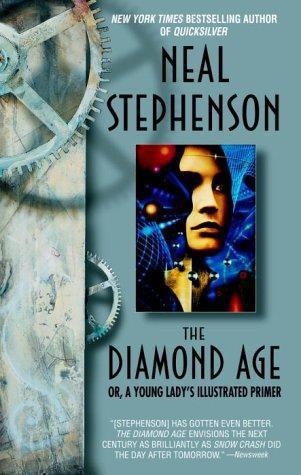
The Diamond Age
by
Neal Stephenson
Published 2 May 2000
Really simple things like packaging materials- the constituents of litter, basically- tended to float around as if they weighed nothing, and aircraft pilots, cruising along ten kilometers above sea level, had become accustomed to the sight of empty, discarded grocery bags zooming past their windshields (and getting sucked into their engines). As seen from low earth orbit, the upper atmosphere now looked dandruffy. Protocol insisted that everything be made heavier than need be, so that it would fall, and capable of being degraded by ultraviolet light. But some people violated Protocol. Given that it was so easy to make things that would float in air, it was not much of a stretch to add an air turbine.

Against All Enemies
by
Tom Clancy
and
Peter Telep
Published 13 Jun 2011
At the moment, he was watching real-time streaming satellite images of the hotel so that he could observe the comings and goings of everyone outside, even while tucked nicely into his bed, feet propped up, the TV morning news humming softly in the background. The spy satellites used to feed him that intelligence were operated by the National Reconnaissance Office (staffed by DoD and CIA personnel) and hung in low-earth orbits to optimize their resolution for several minutes before each handed off the job to the next satellite in line in a sophisticated relay of data transfer. He was also receiving text alerts from the analysts back home who were watching the same images and could draw his attention to anything they noted.

Space Odyssey: Stanley Kubrick, Arthur C. Clarke, and the Making of a Masterpiece
by
Michael Benson
Published 2 Apr 2018
And, unfortunately, 2001’s vision of the Moon and planets being colonized by human beings simply hasn’t come true—or, at least, not nearly in the way its authors had envisioned. The film was made when NASA’s budget was at its peak, so their extrapolation is understandable. (Clarke even predicted to Kubrick, “This is the last big space film that won’t be made on location.”) In fact, no human being has ventured beyond low Earth orbit since the return of the last Apollo crew from the Taurus-Littrow valley on the Moon in 1972, just four years after the film’s release. Since then, true space exploration has been conducted exclusively by automated spacecraft. But even if we consider HAL’s attempts to kill off Discovery’s crew and continue on to Jupiter without pesky human interference as predictive of these circumstances (and it’s a valid interpretation), the film’s deviations from literal accuracy are beside the point.

Future Crimes: Everything Is Connected, Everyone Is Vulnerable and What We Can Do About It
by
Marc Goodman
Published 24 Feb 2015
To the British, however, the frigate was clearly in international waters, and thus the Chinese have committed an act of war. The actions of the villain have their desired effect: Britain and China are now on a path toward war. Once again Hollywood was prescient in its vision of future evil. The Global Positioning System (GPS) is a space-based, low-earth-orbiting “constellation of 24 navigational satellites” that provides location and time information anywhere on the planet. It is an “invisible utility” that we rely on to get around town, deliver packages, find the closest Starbucks, coordinate air traffic control, manage public safety, and even command missile guidance.

The Collected Stories of Vernor Vinge
by
Vernor Vinge
Published 30 Sep 2001
Three thousand meters to the west were more lights, and the occasional sparkle of an automatic rifle. To the east, surf marched in phosphorescent ranks against the Merritt Island shore. There the fragment ended: she was not conscious during the launch. But that scene remained forever her most vivid and incomprehensible memory. When next she woke, Ilse was in low Earth orbit. Her single eye had been fitted to a one hundred and fifty centimeter reflecting telescope so that now she could distinguish stars set less than a tenth of a second apart, or, if she looked straight down, count the birds in a flock of geese two hundred kilometers below. For more than a year Ilse remained in this same orbit.
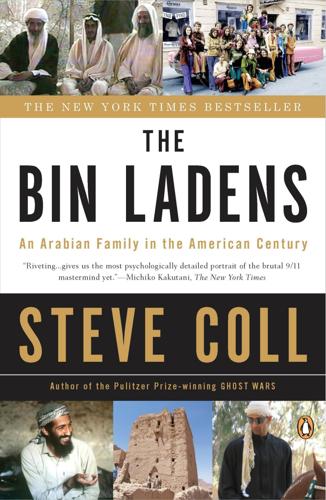
The Bin Ladens: An Arabian Family in the American Century
by
Steve Coll
Published 29 Mar 2009
By 1990, particularly in America, there were competing visions—and competing business plans—describing how telephone portability might be constructed in the most practical and profitable way. There were those who believed globally linked cellular towers, erected on the earth’s surface, might offer the most efficient path. And then there was Iridium, named for a rare element with the atomic number 77, which was the number of low-earth orbiting satellites the company’s founders believed they would need to launch into space to provide worldwide telephonic connections, so that an Iridium owner might use his phone anywhere on the planet, at any time, to dial any telephone number. In 1945 the budding science fiction writer Arthur C. Clarke, then an electronics officer in Britain’s Royal Air Force, published a short article called “Extra-Terrestrial Relays” in a magazine bearing the premature title Wireless World.

Red Storm Rising
by
Tom Clancy
Published 2 Jan 1986
All he needed was a simple yes or no. He checked his boards. Three KH-type photoreconnaissance satellites were currently in orbit, plus nine electronic surveillance birds. That was his low-level "constellation." He didn't fear for his higher-flying navigation and communications satellites, but the twelve in low earth orbit, especially the KHs, were valuable and vulnerable. Two of them had Russian killersats in close proximity, and one of his birds was now approaching Soviet territory, with another only forty minutes behind. The third Key-Hole bird didn't have a satellite assigned yet, but the last pass over Leninsk showed another F-type booster being fueled on the pad.

To Sleep in a Sea of Stars
by
Christopher Paolini
Published 14 Sep 2020
Got it off a guy as part of payment for a transport job. He didn’t realize how valuable it was.” “Three hundred years…” The number was hard to comprehend. The tree was older than the entire history of humans living in space. It predated the Mars and Venus colonies, predated every hab-ring and manned research station outside low-Earth orbit. “Yeah.” A brooding expression settled on Falconi’s face. “Those jackbooted thugs had to tear it up. Couldn’t just scan the place.” “Mmm.” Kira was still thinking about how the Soft Blade had felt on Orsted—that and whatever purpose it had been built or born for. She couldn’t forget the sensation of the countless threadlike tendrils insinuating themselves through the fascia of the station, touching, tearing, building, understanding.

Southwest USA Travel Guide
by
Lonely Planet
The vessel is designed by legendary aerospace engineer Bob Rutan, whose SpaceShipOne was the first privately funded (by Microsoft cofounder Paul Allen) manned vehicle to reach outer space twice in a row, winning him the $10 million 2004 Ansari X-Prize. It’s not all about tourism, however. Spaceport America has been used by UP Aerospace to launch cheap cargo carriers into low Earth orbit since 2006 and has banked over a million dollars in deposits for future scientific research trips. It’s also the new home of the X-Prize competition (the race for private development of reusable spacecraft), as well as other aerospace-themed expositions to be held throughout the year. Studies estimate that Spaceport America will pump hundreds of millions of dollars annually into the state, particularly in the neighboring towns of Alamogordo and Truth or Consequences.

Debt of Honor
by
Tom Clancy
Published 2 Jan 1994
All the stuff up there, it's becoming a concern for our manned missions." The NASA man paused, then decided to ask a sensitive question. "What's your max payload?" "Five metric tons, ultimately." He whistled. "You think you can get that much performance off this bird?" Ten thousand pounds was the magic number. If you could put that much into low-earth-orbit, you could then orbit geosynchronous communications satellites. Ten thousand pounds would allow for the satellite itself and the additional rocket motor required to attain the higher altitude. "Your trans-stage must be pretty hot." The reply was, at first, a smile. "That is a trade secret." "Well, I guess we'll see in about ninety seconds."